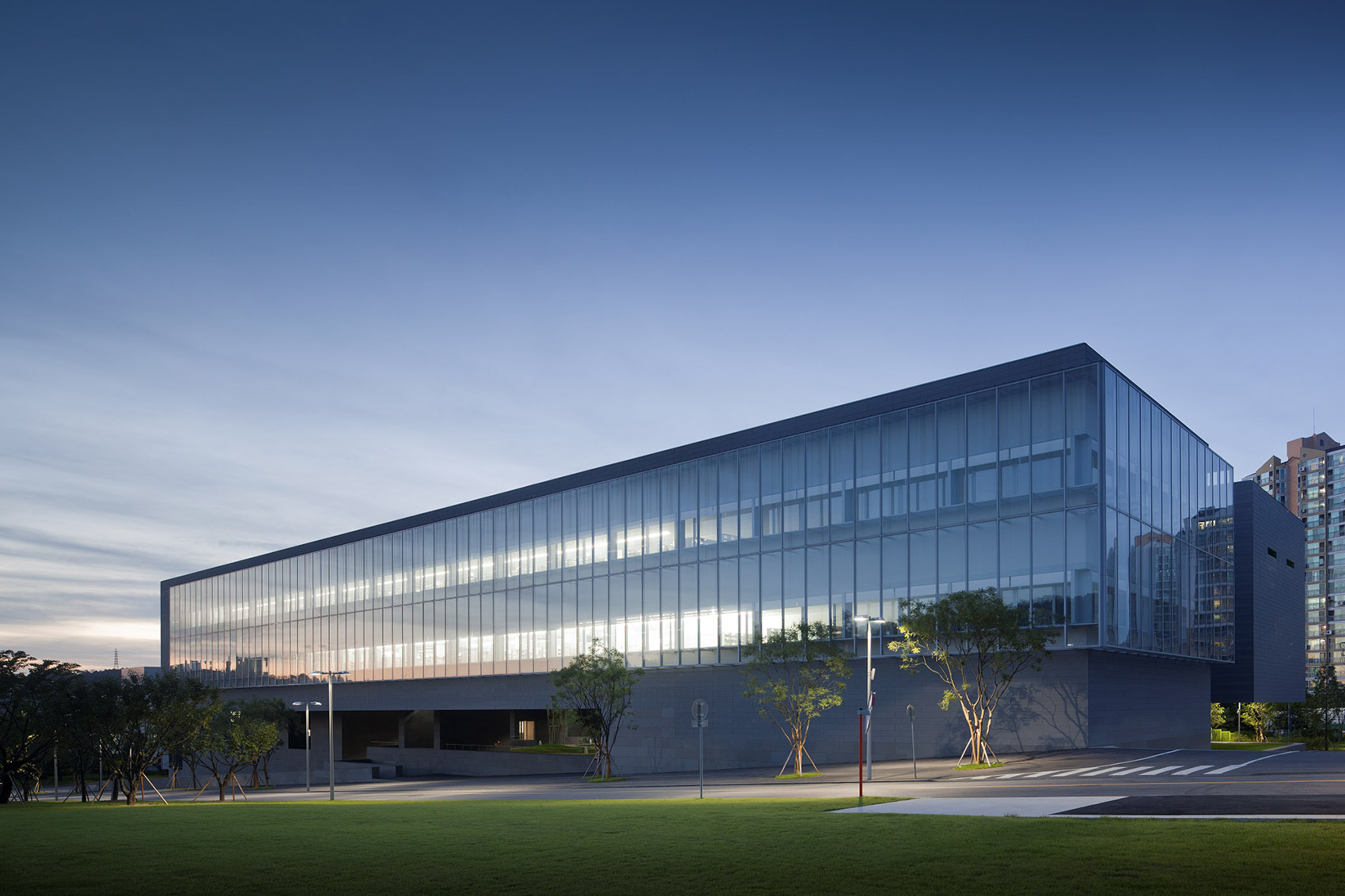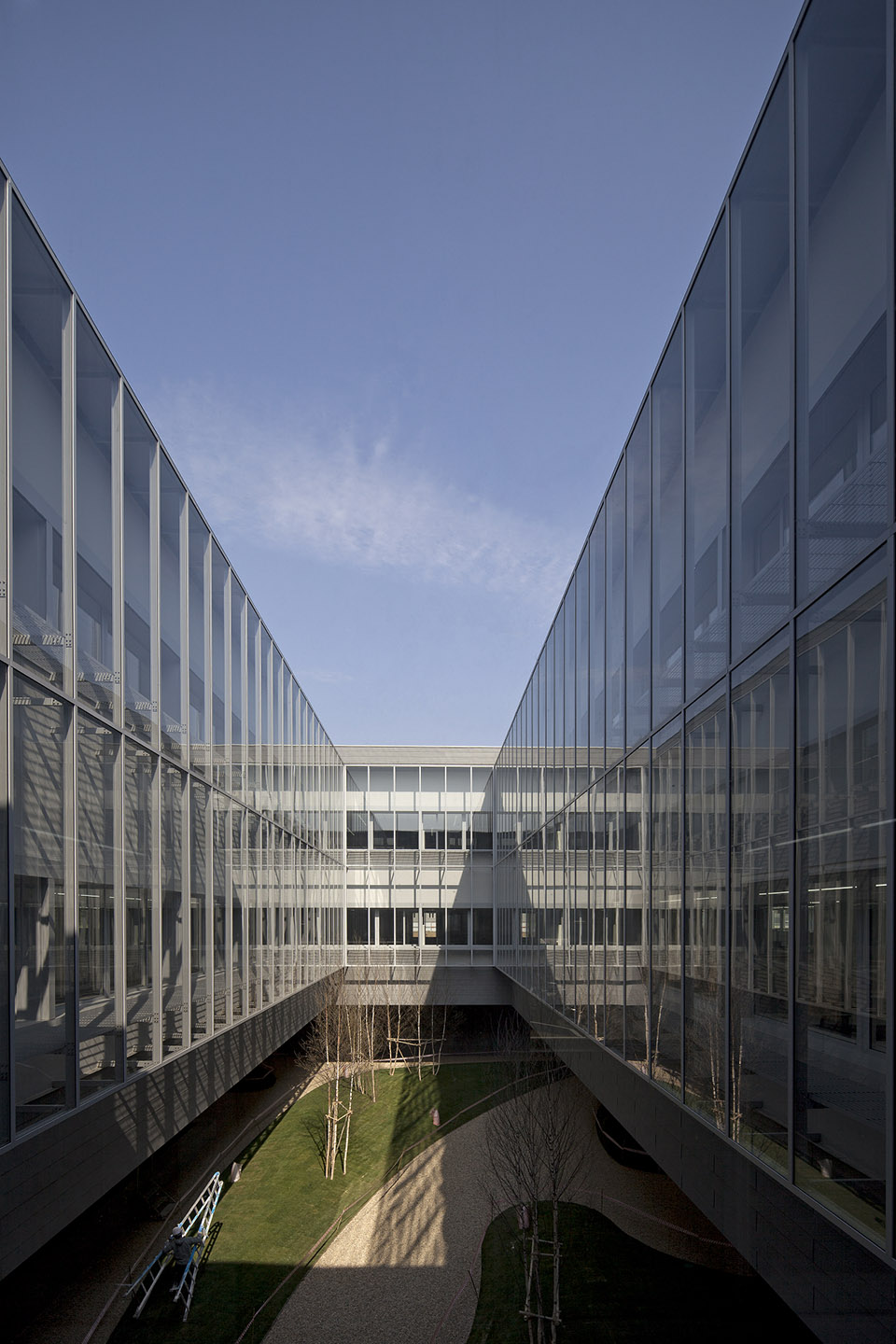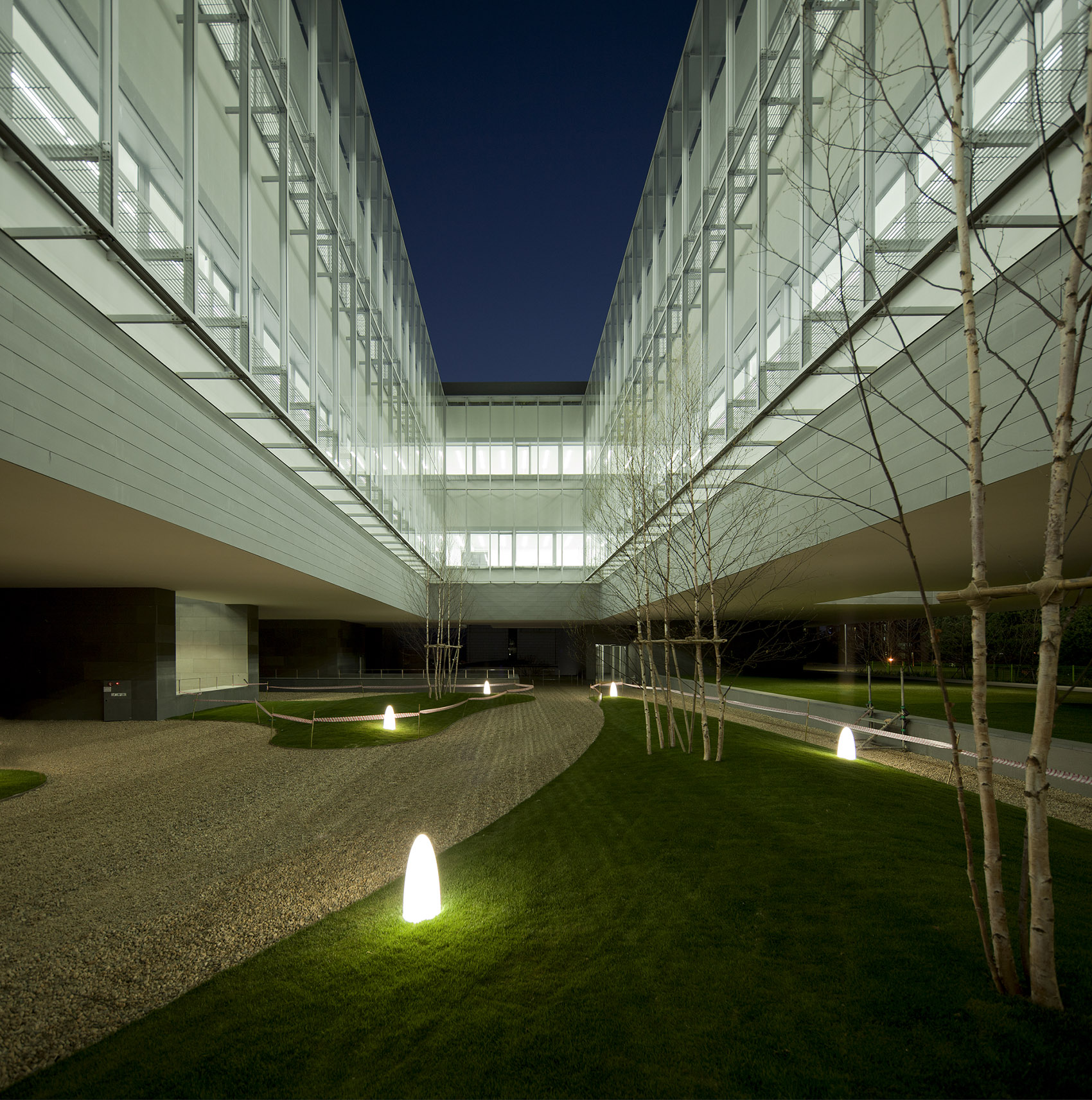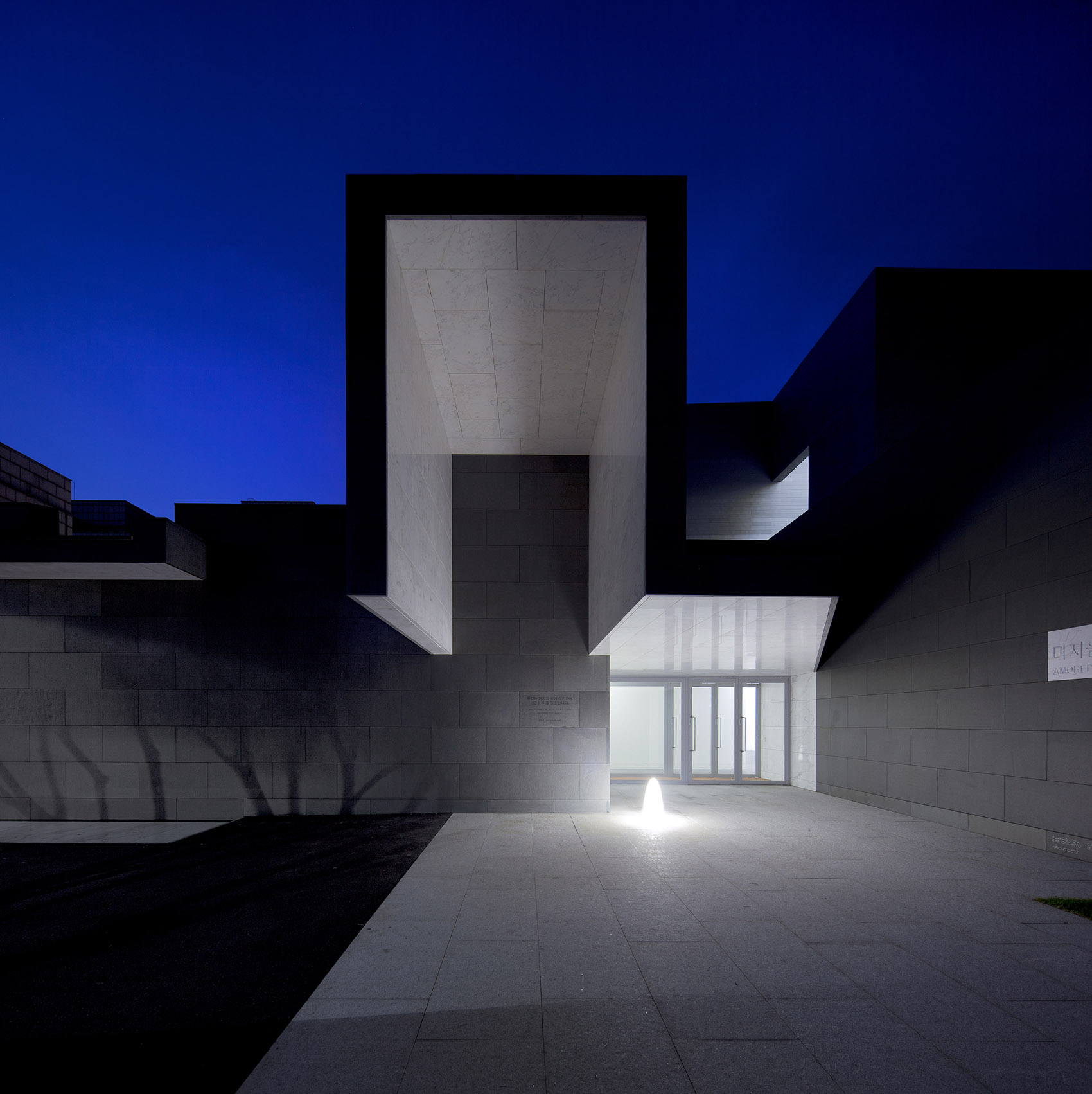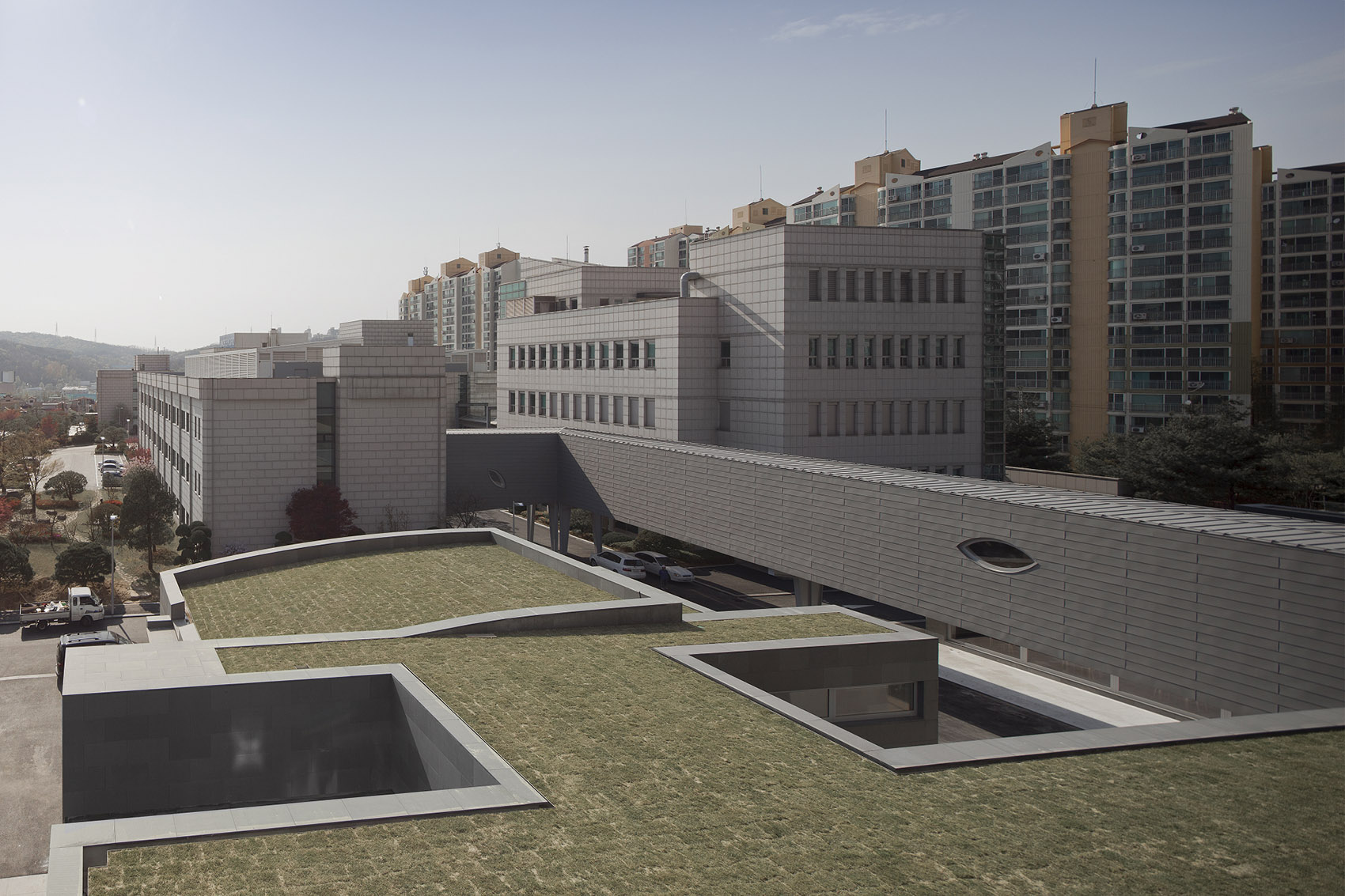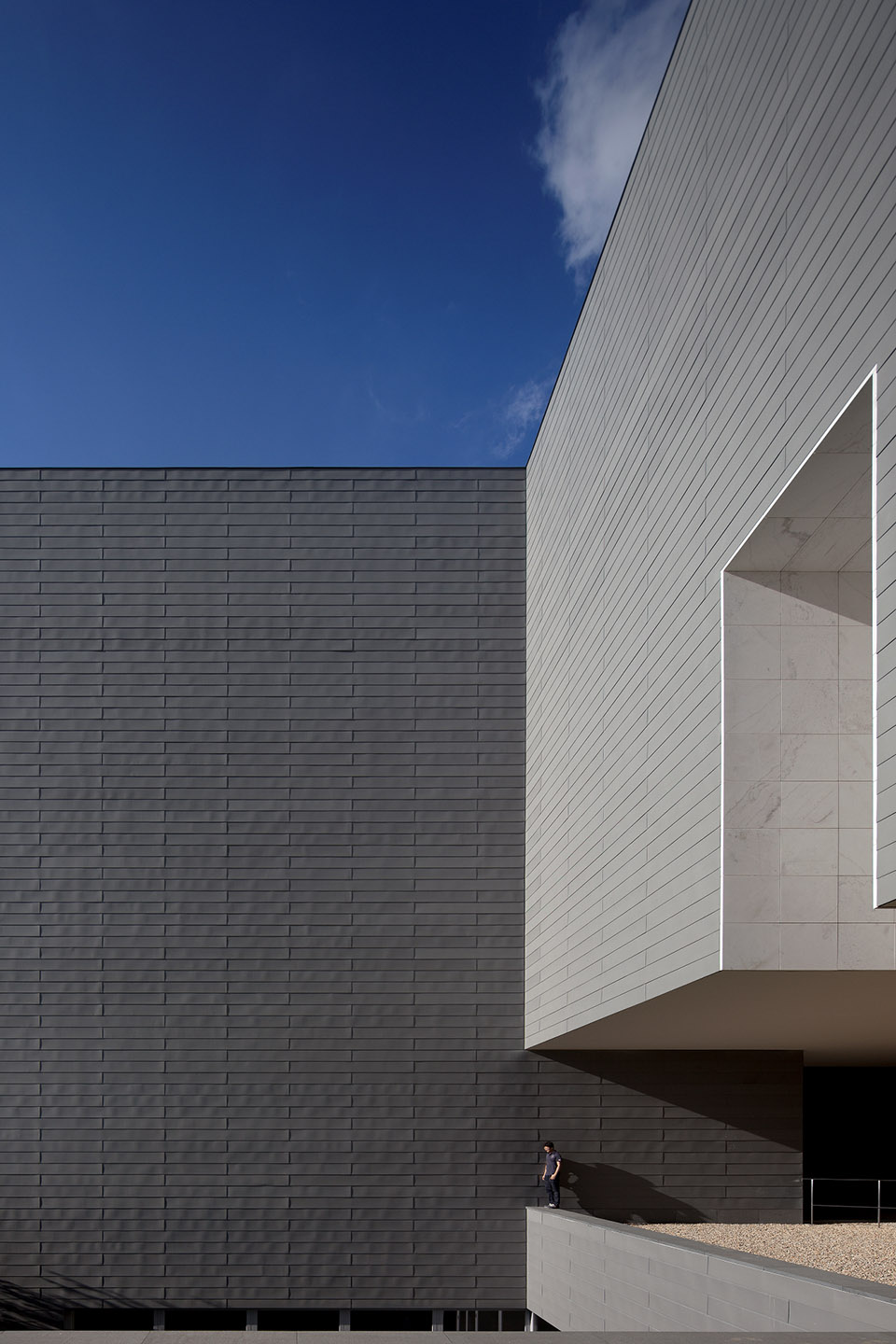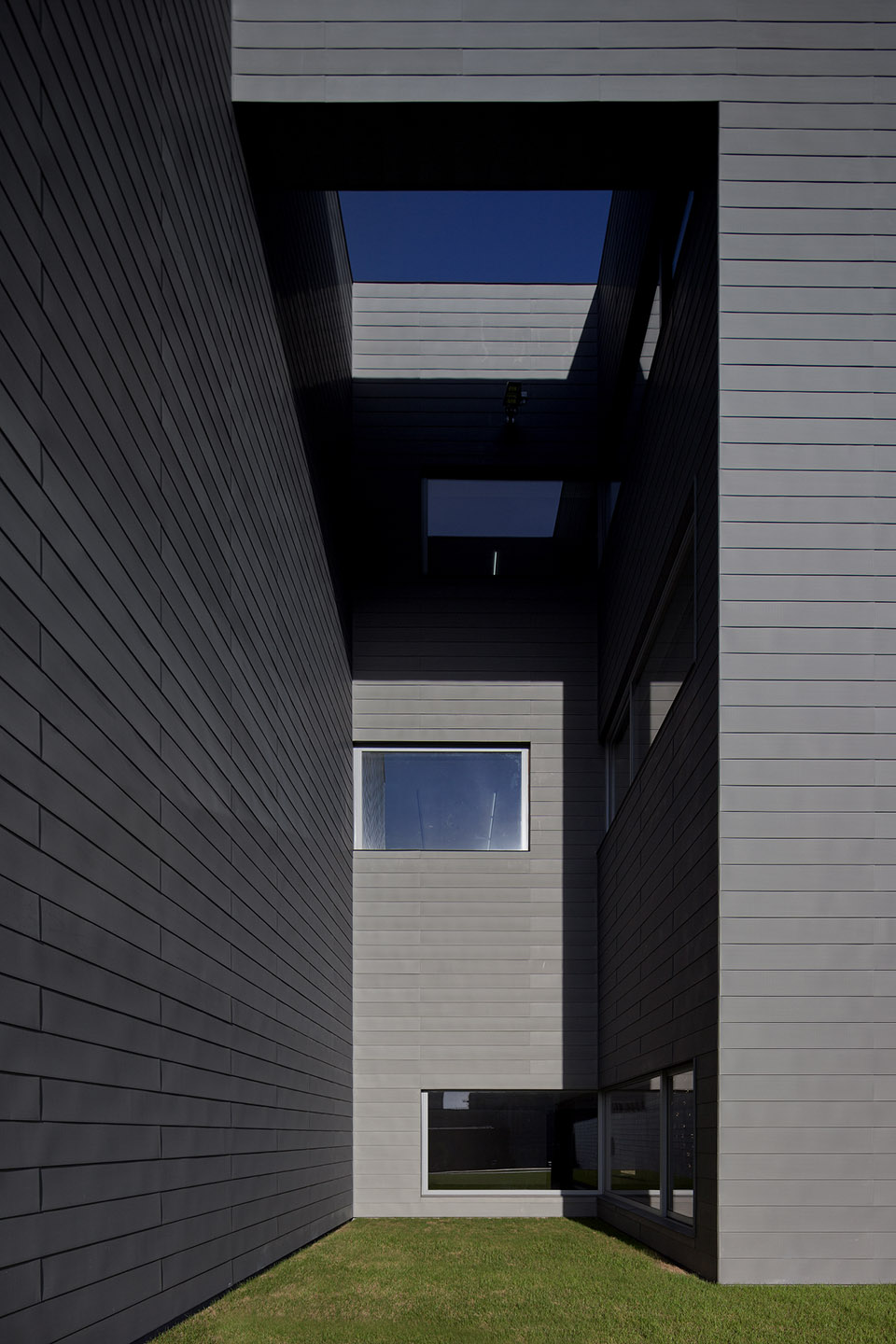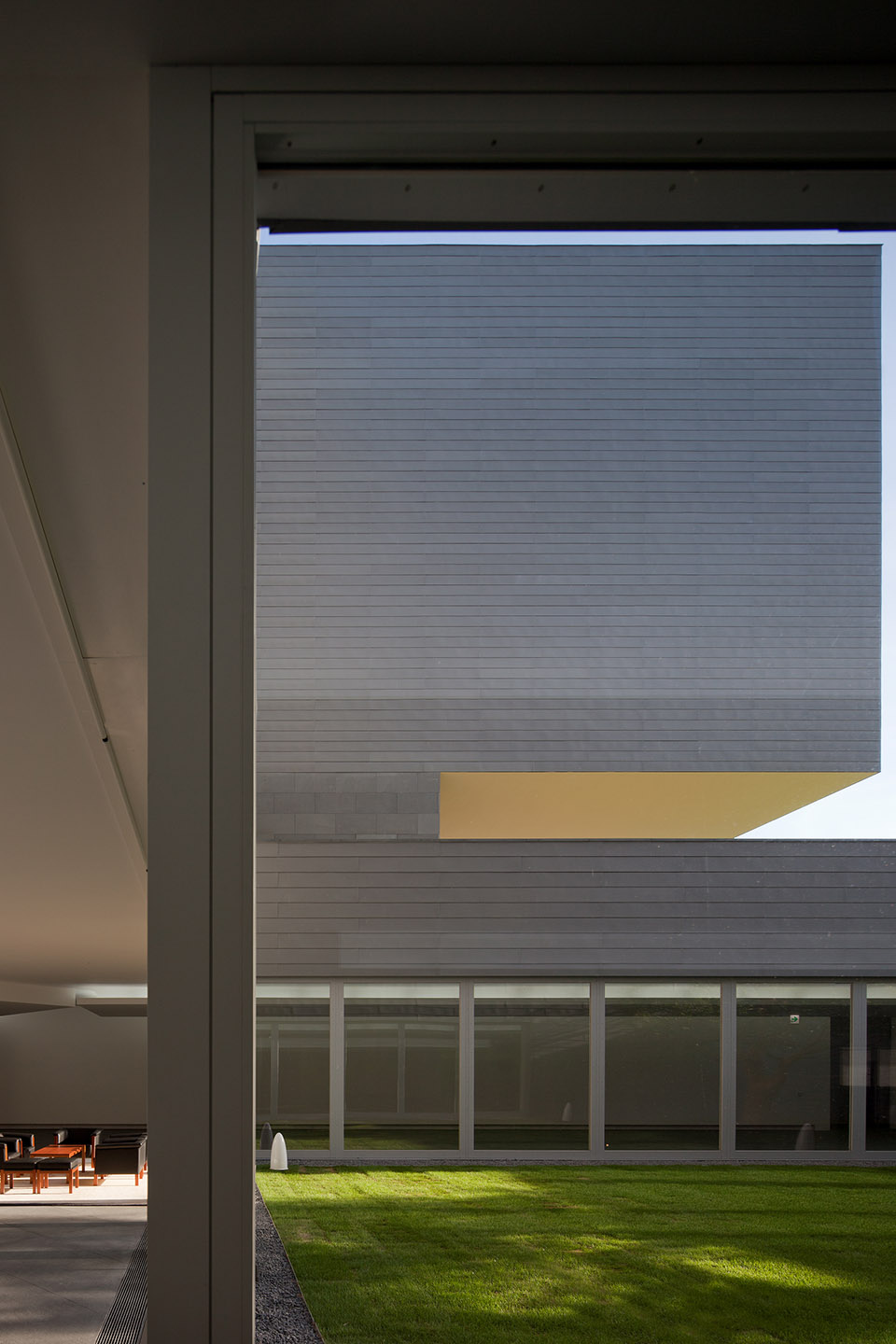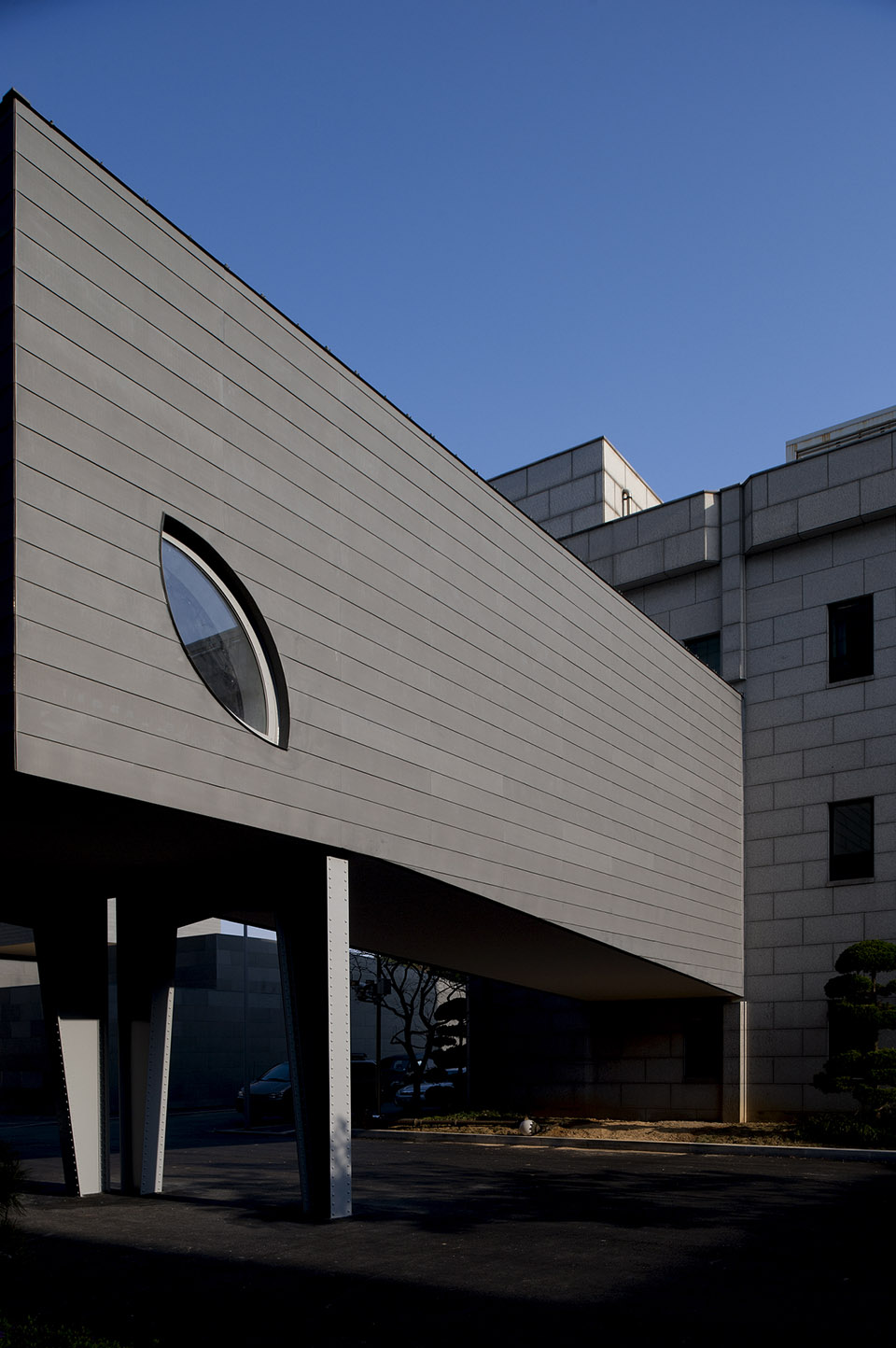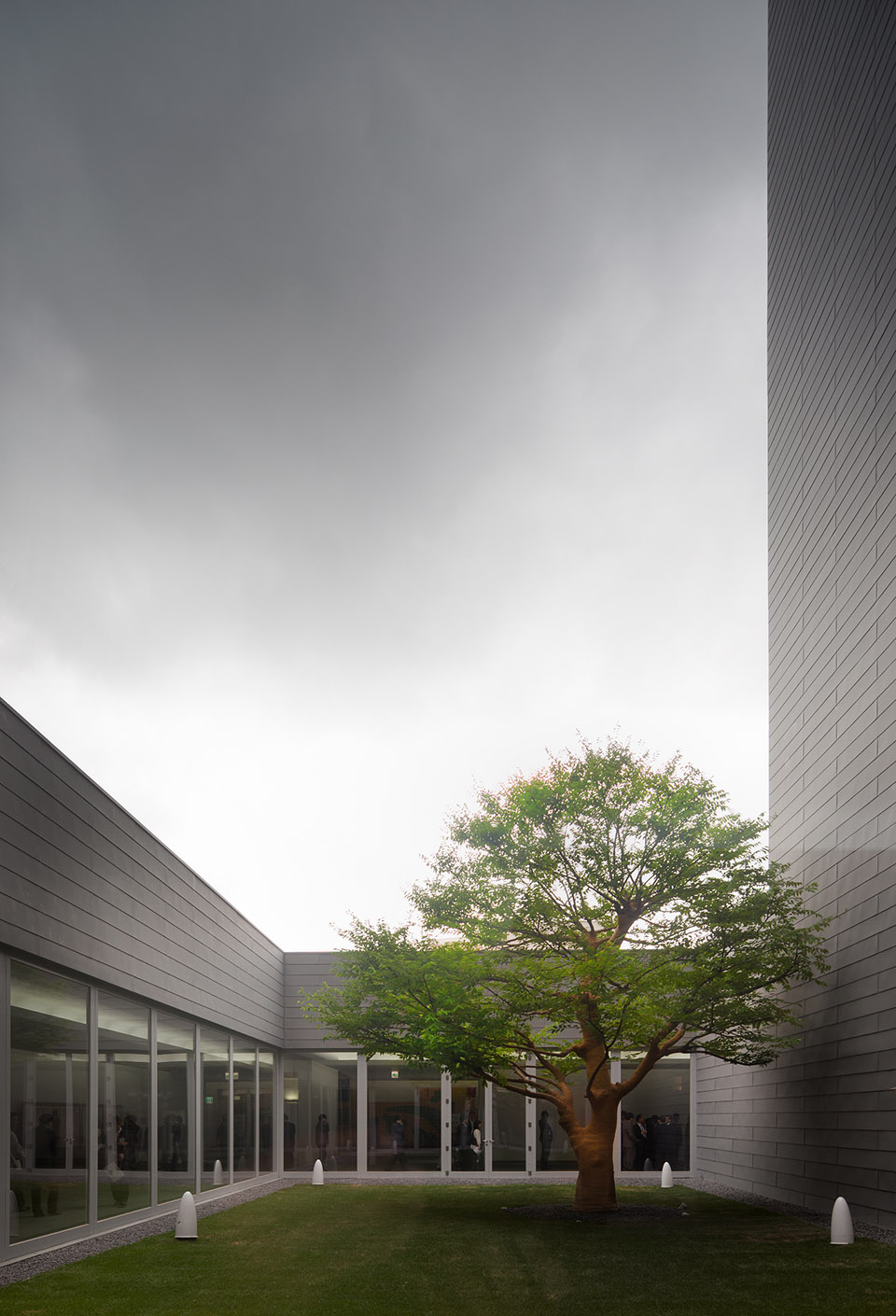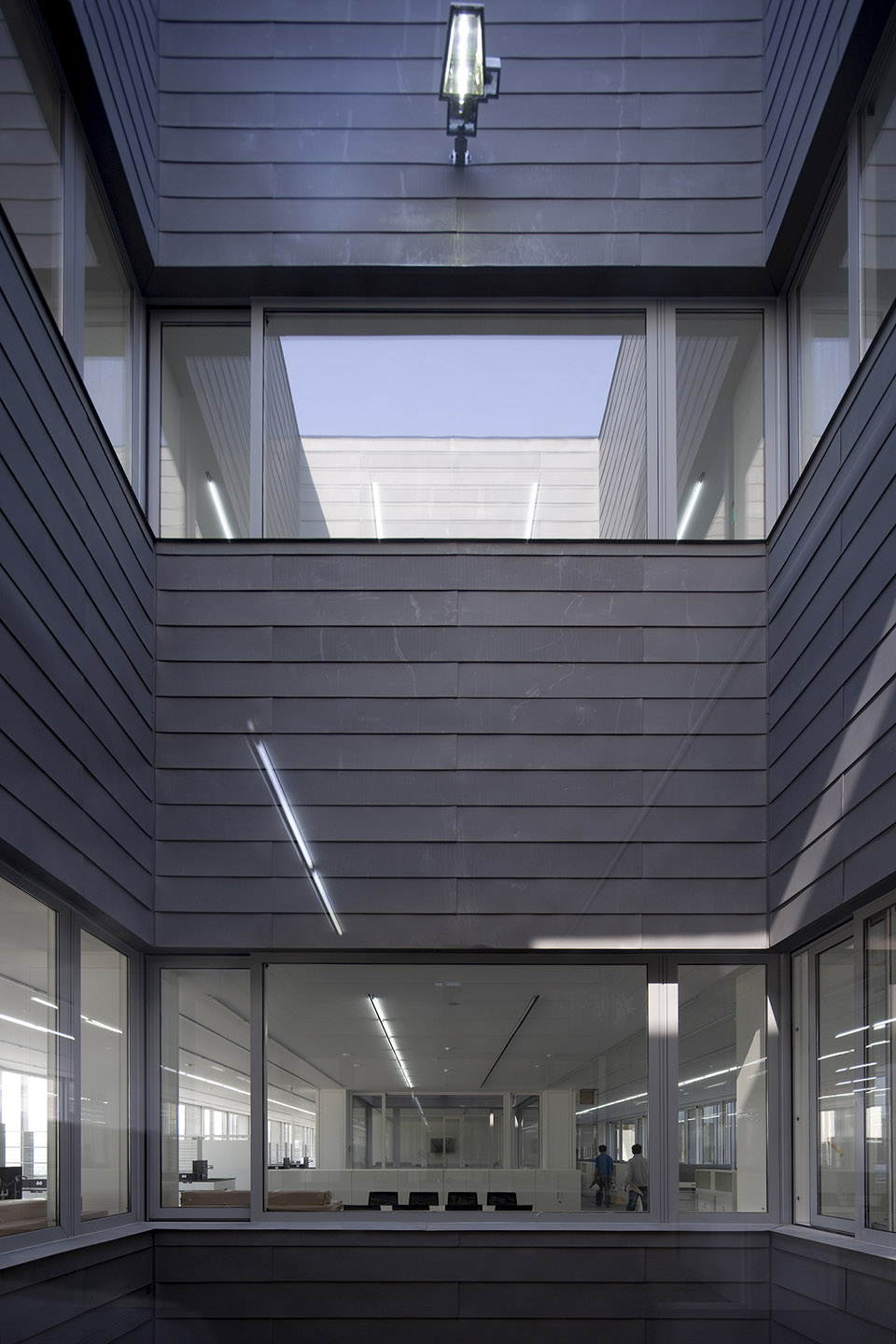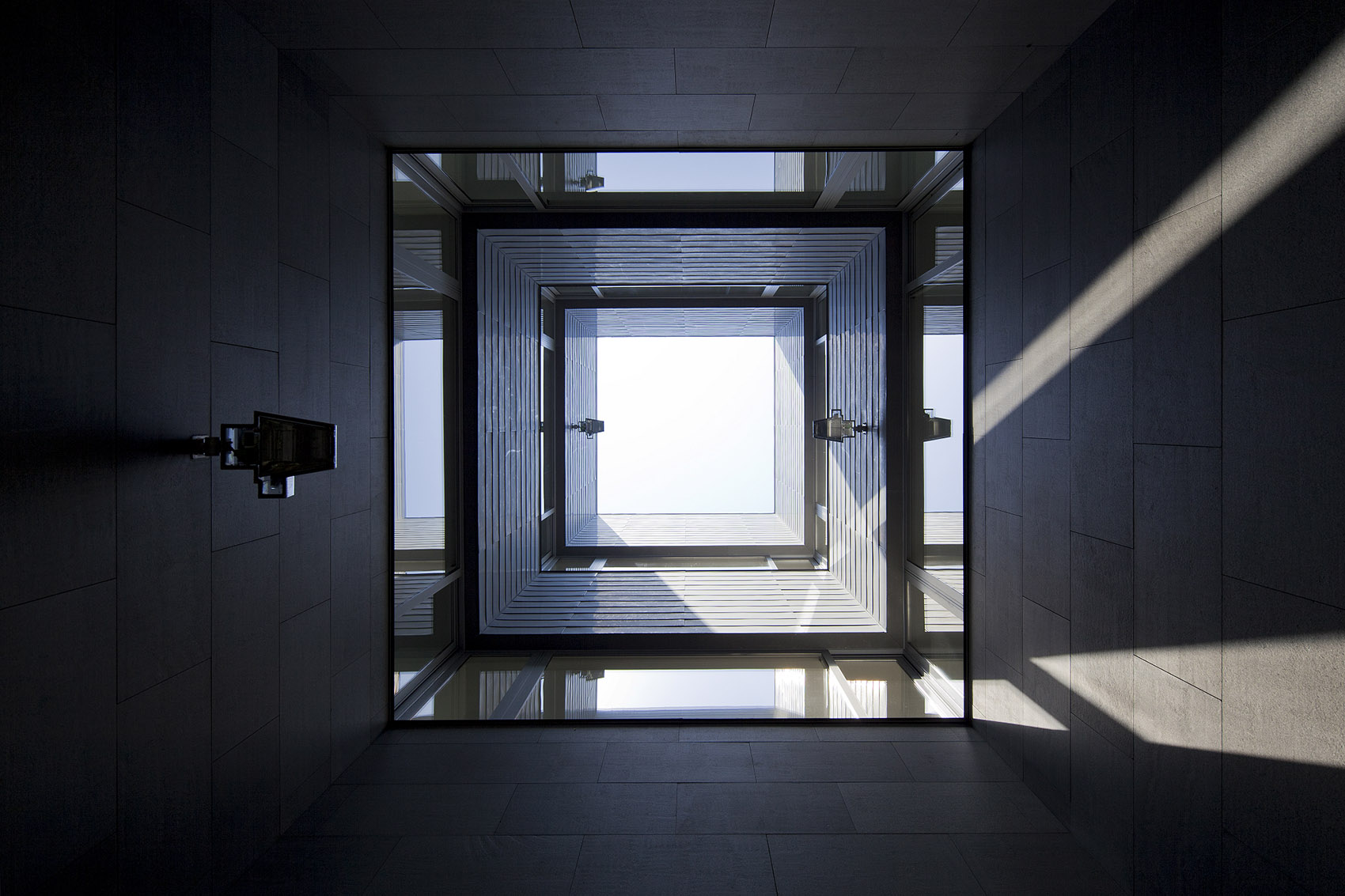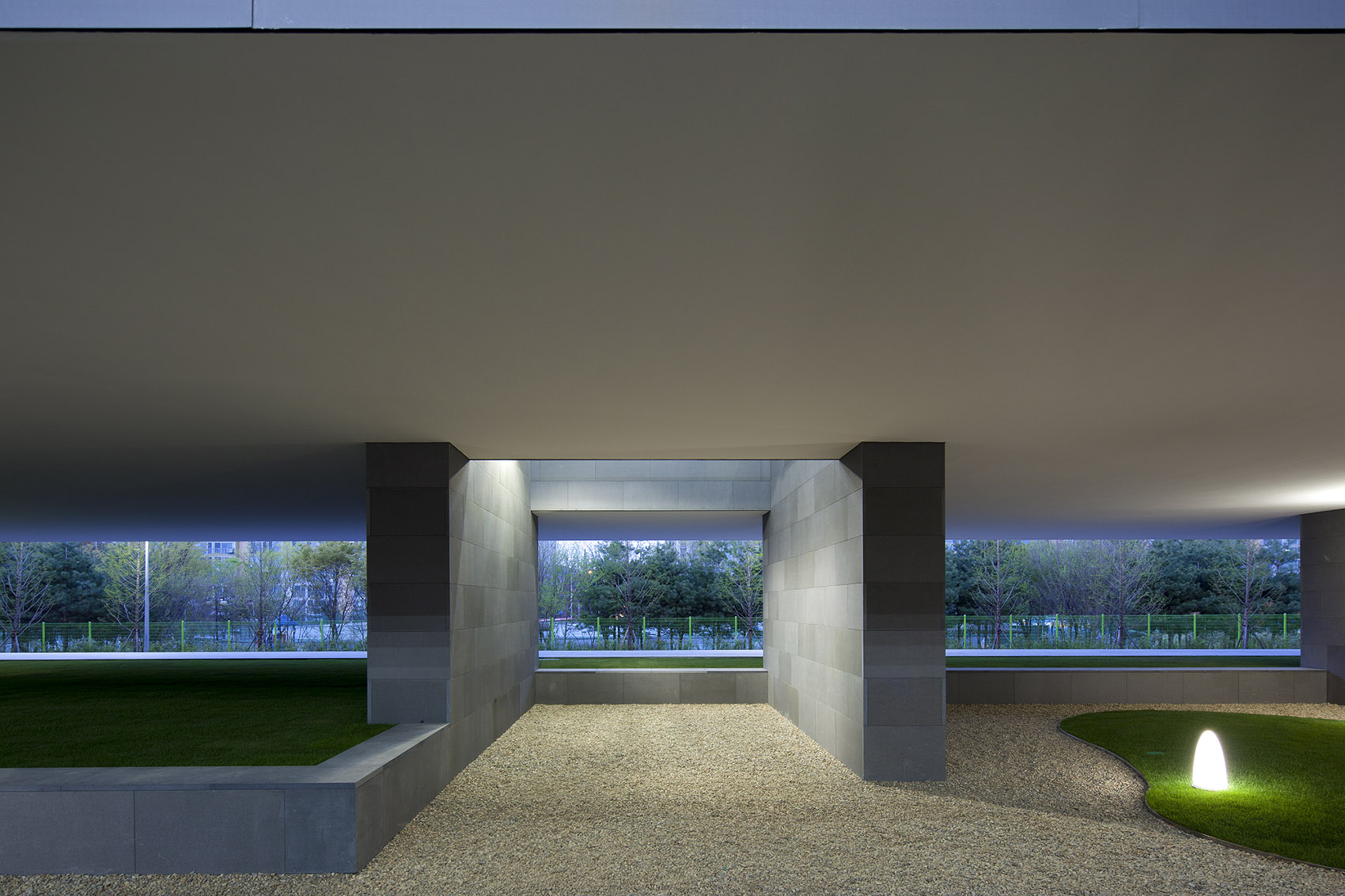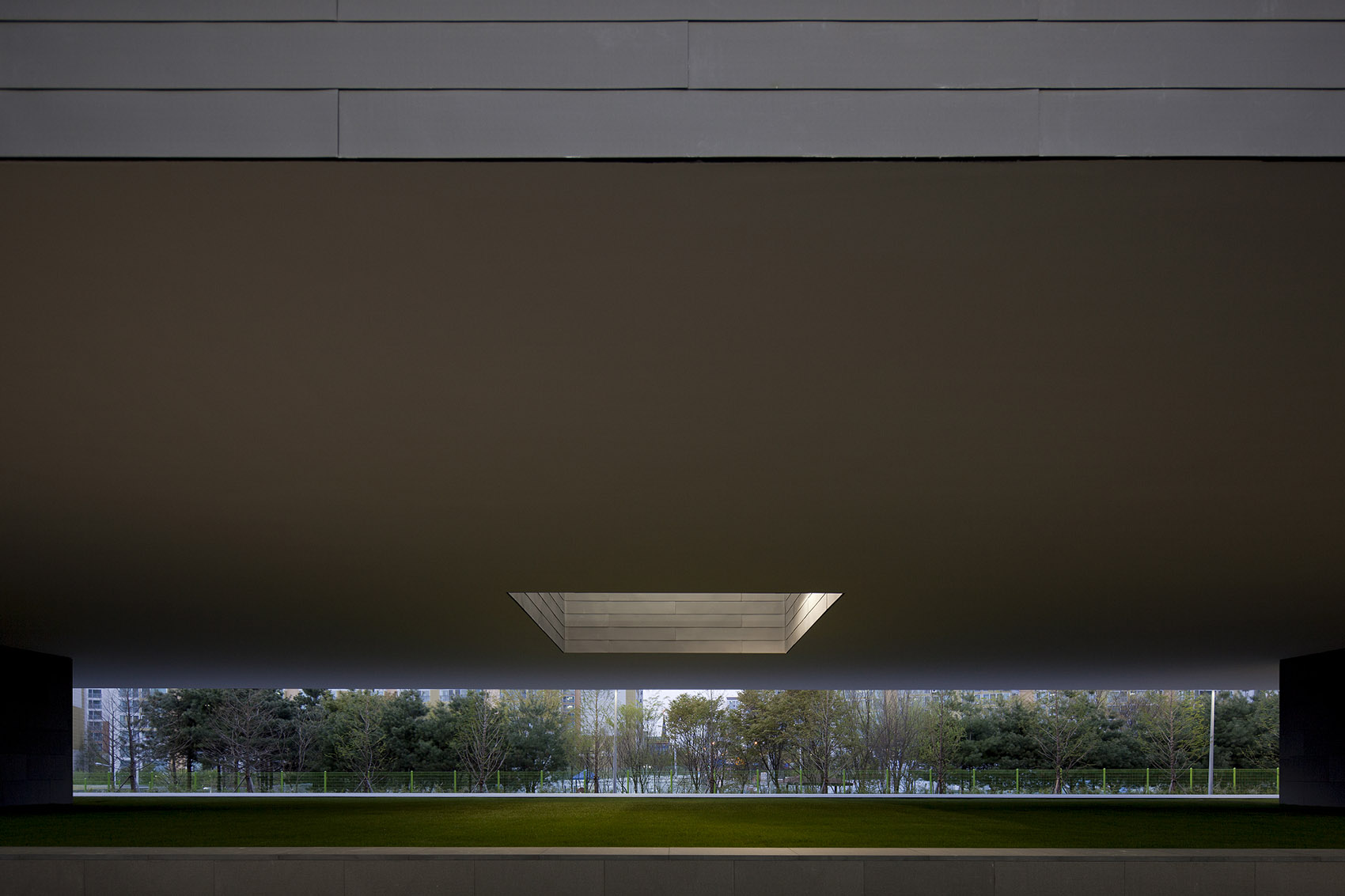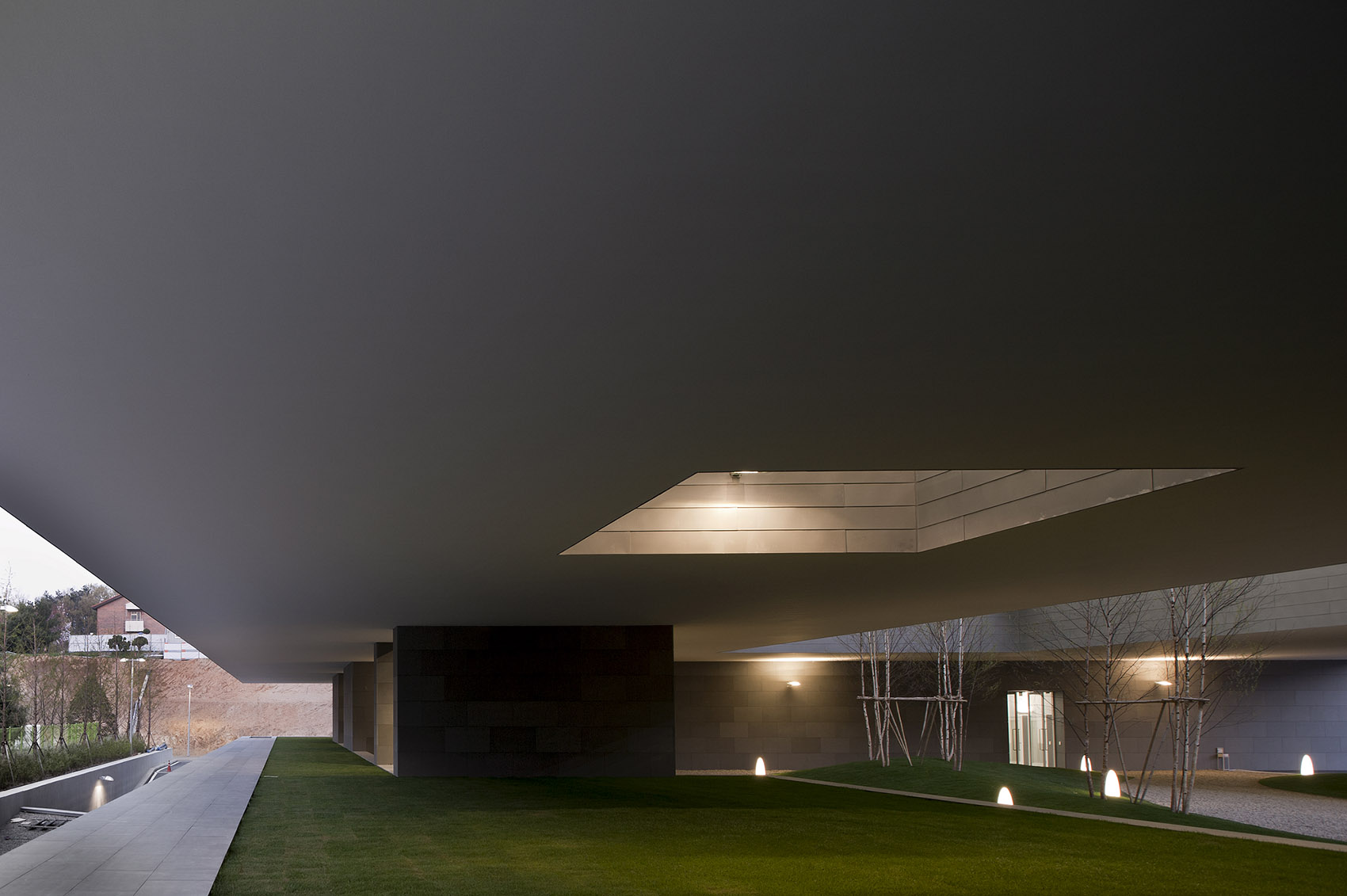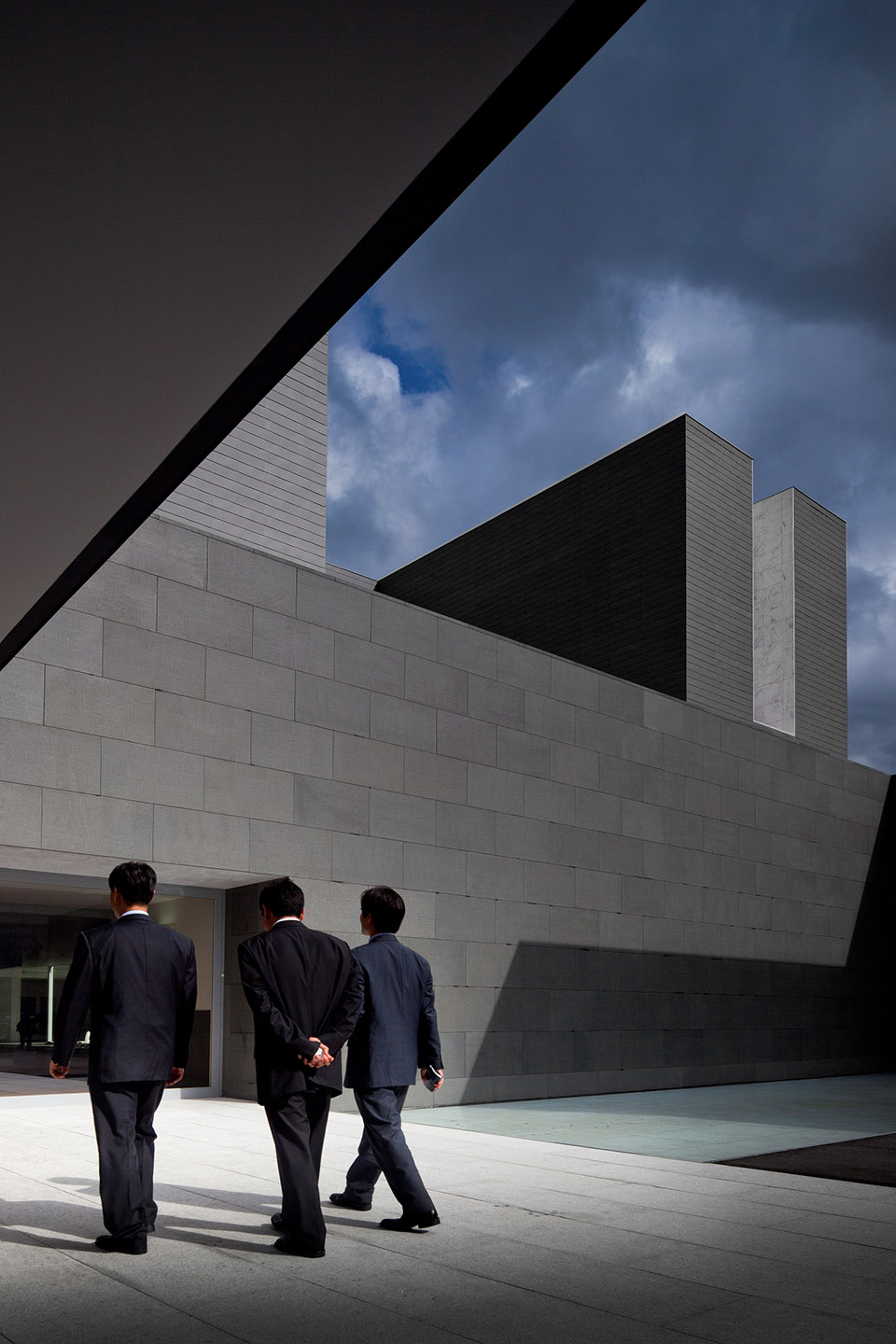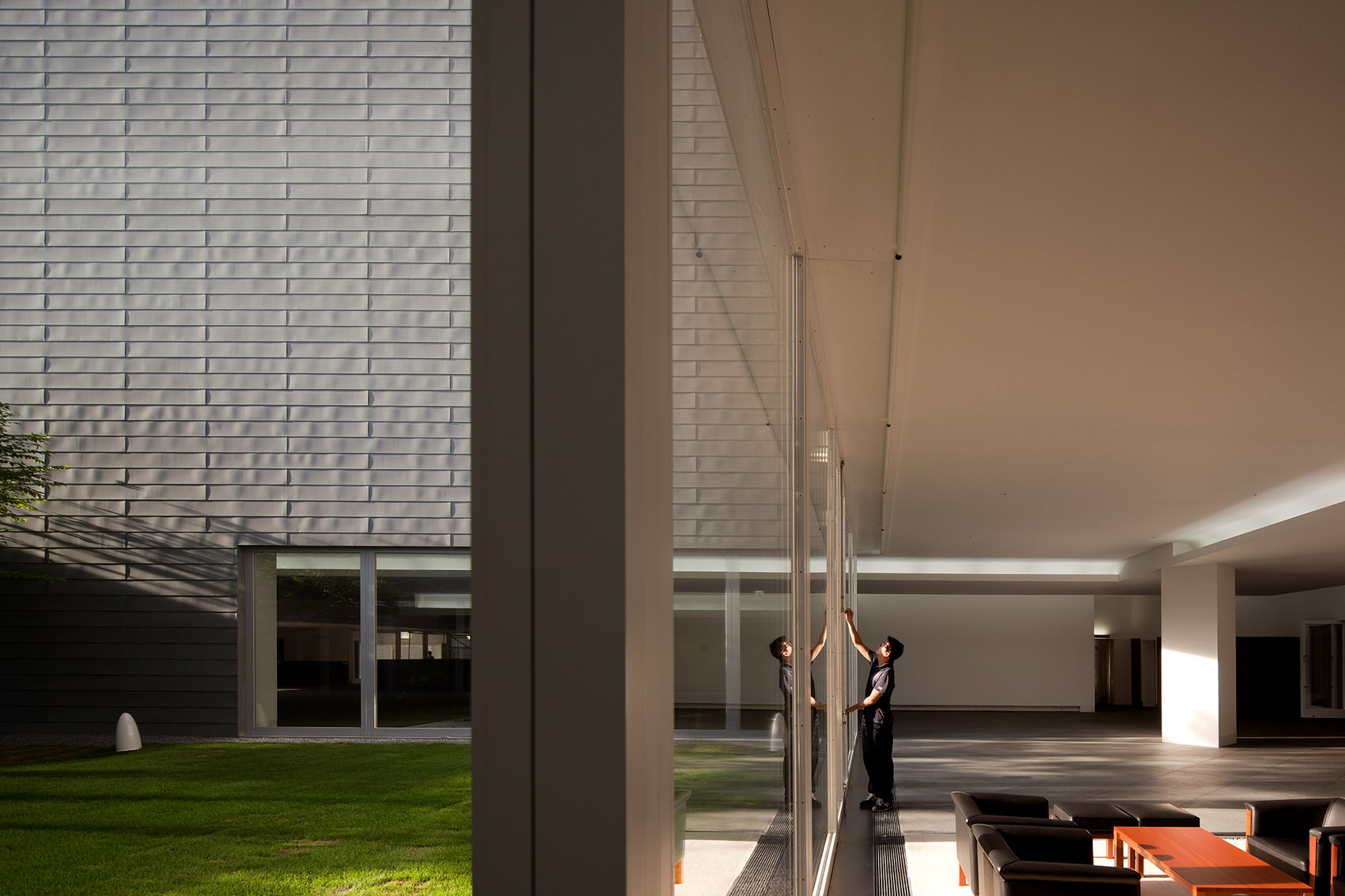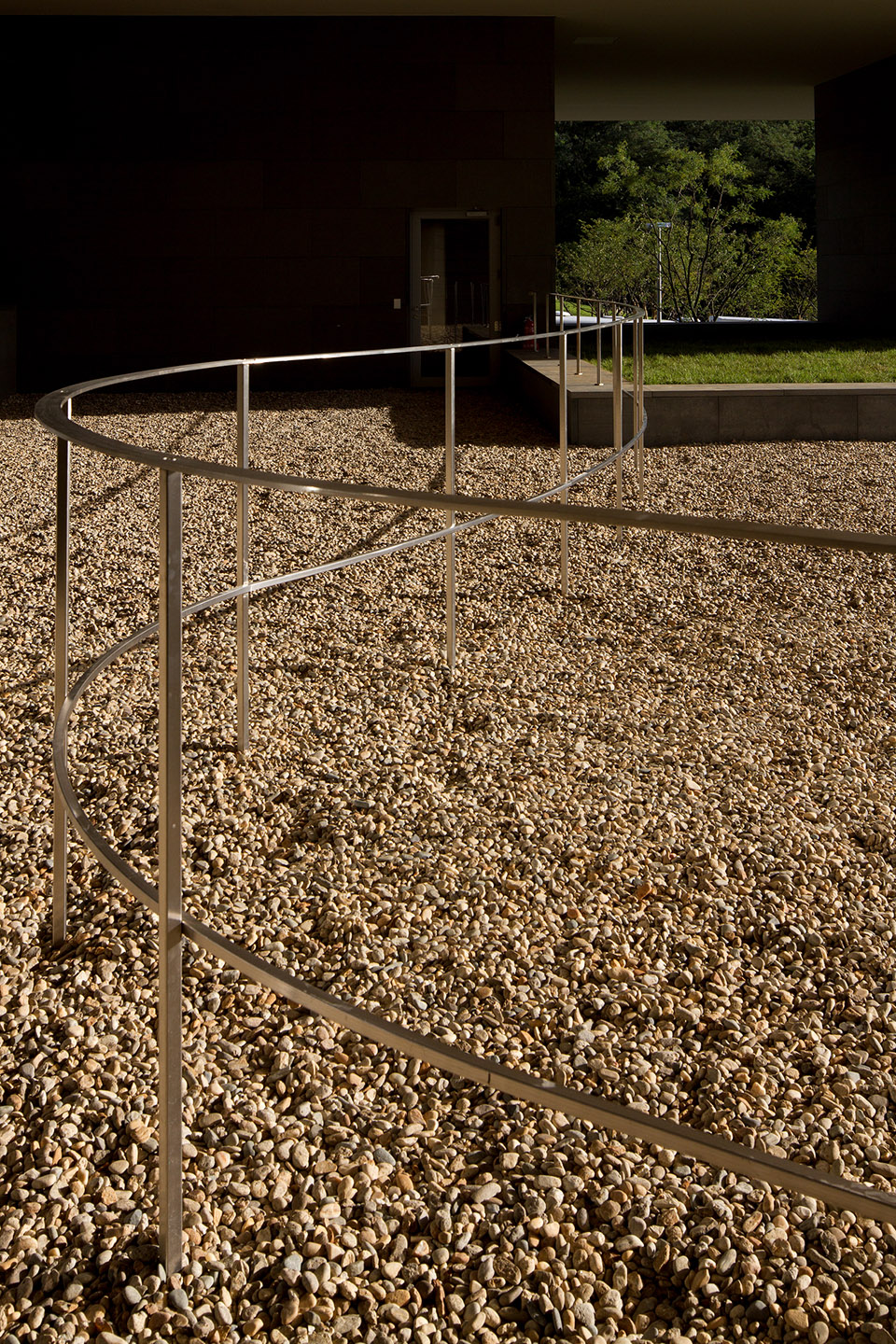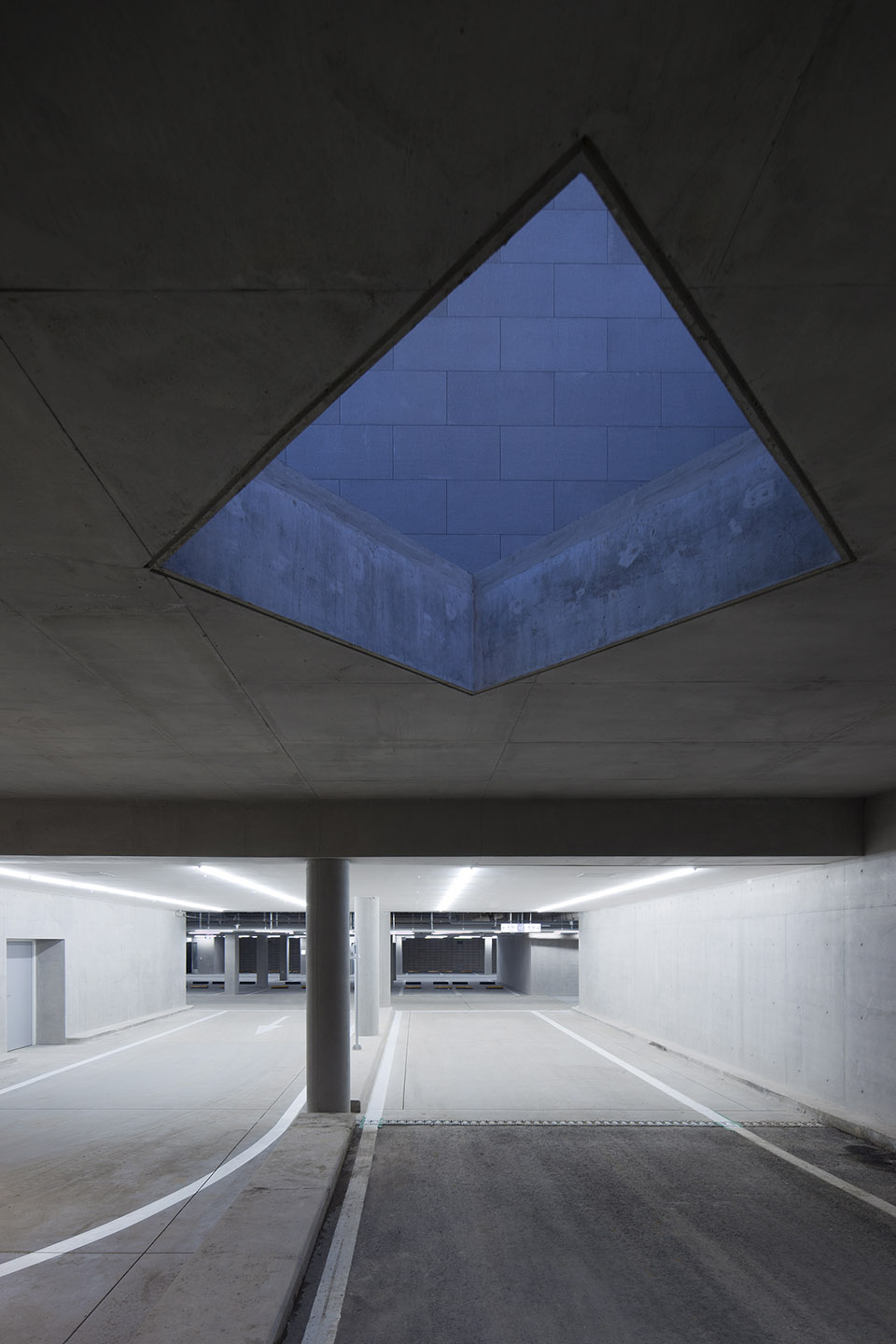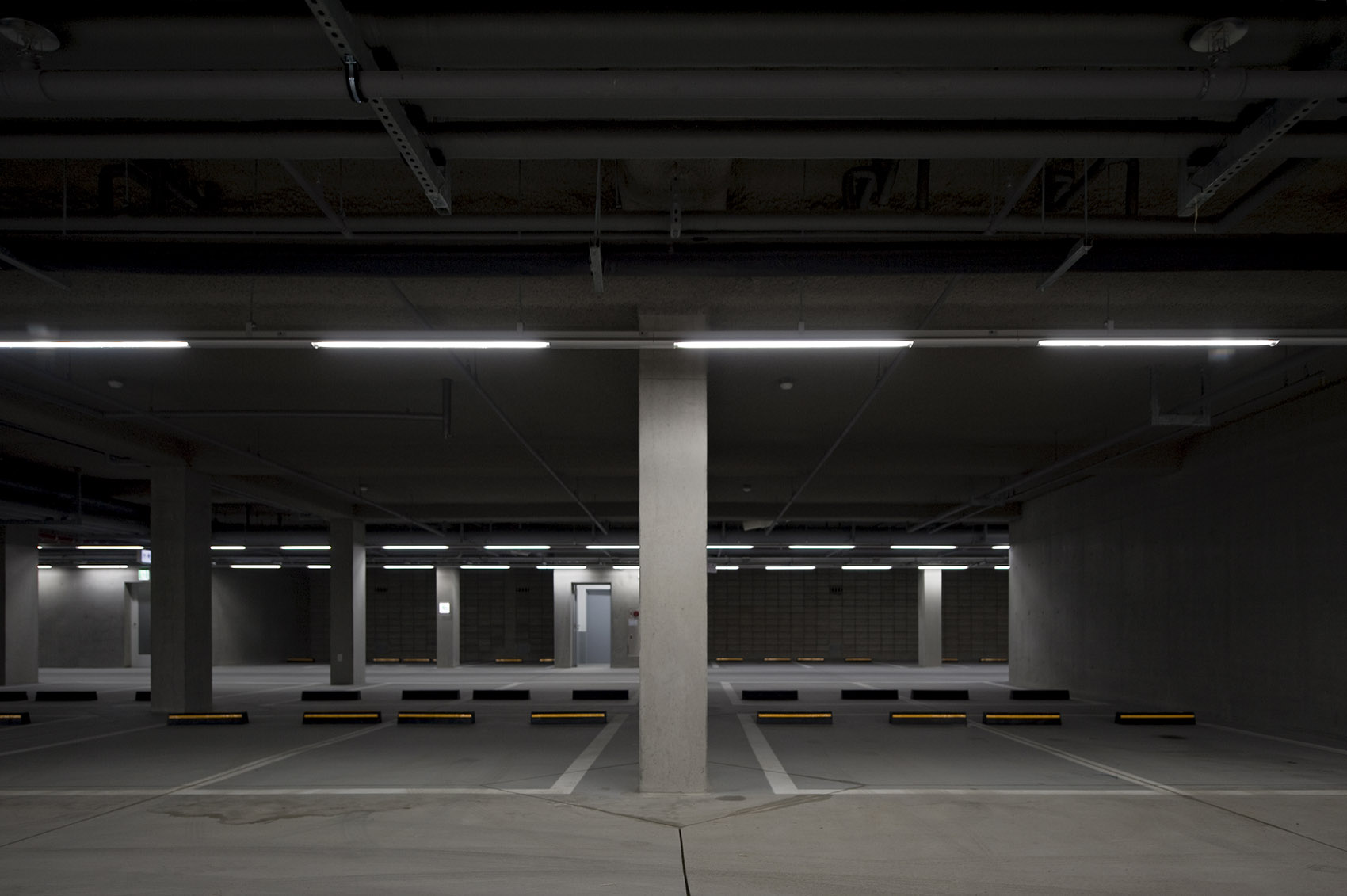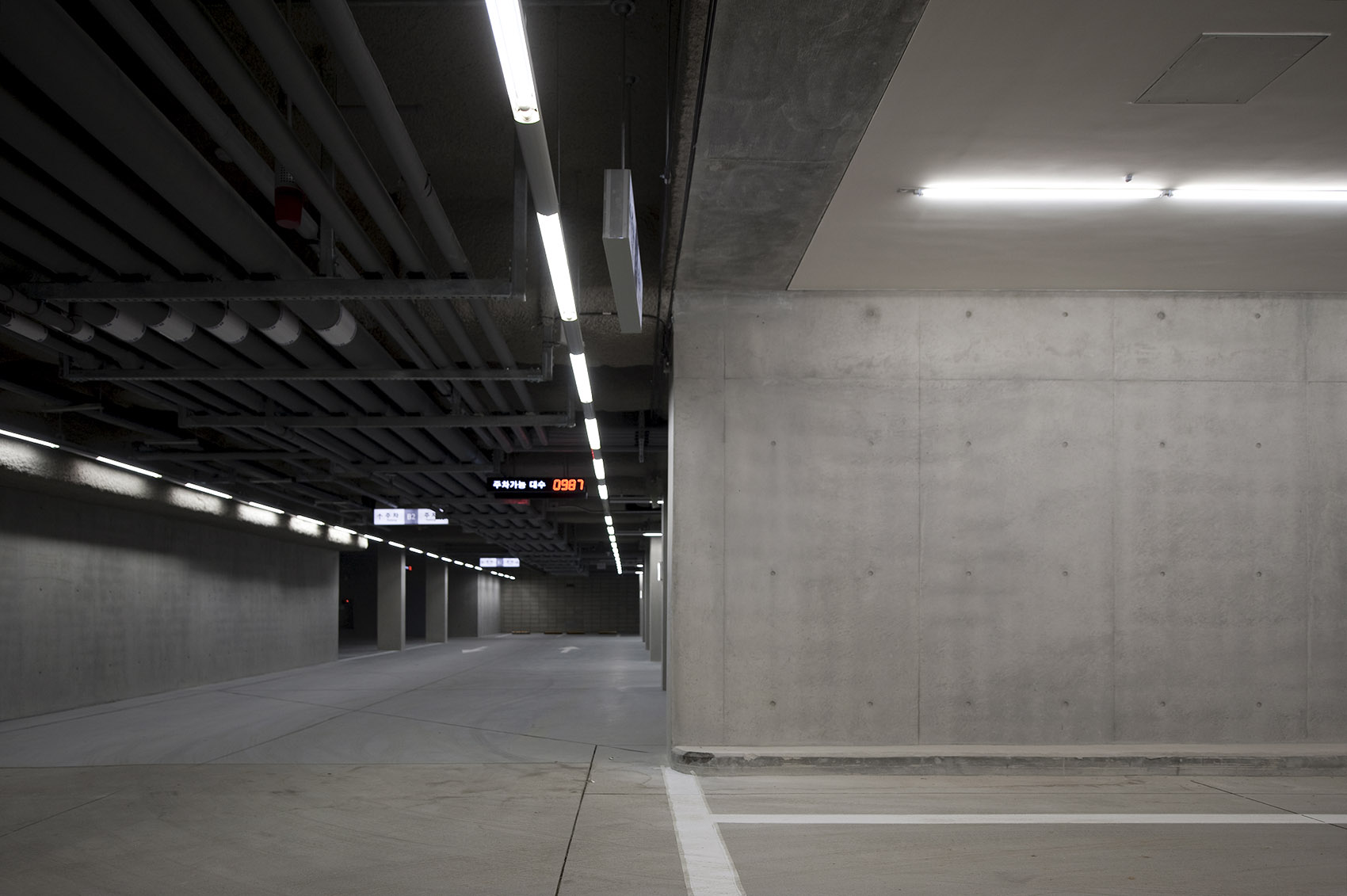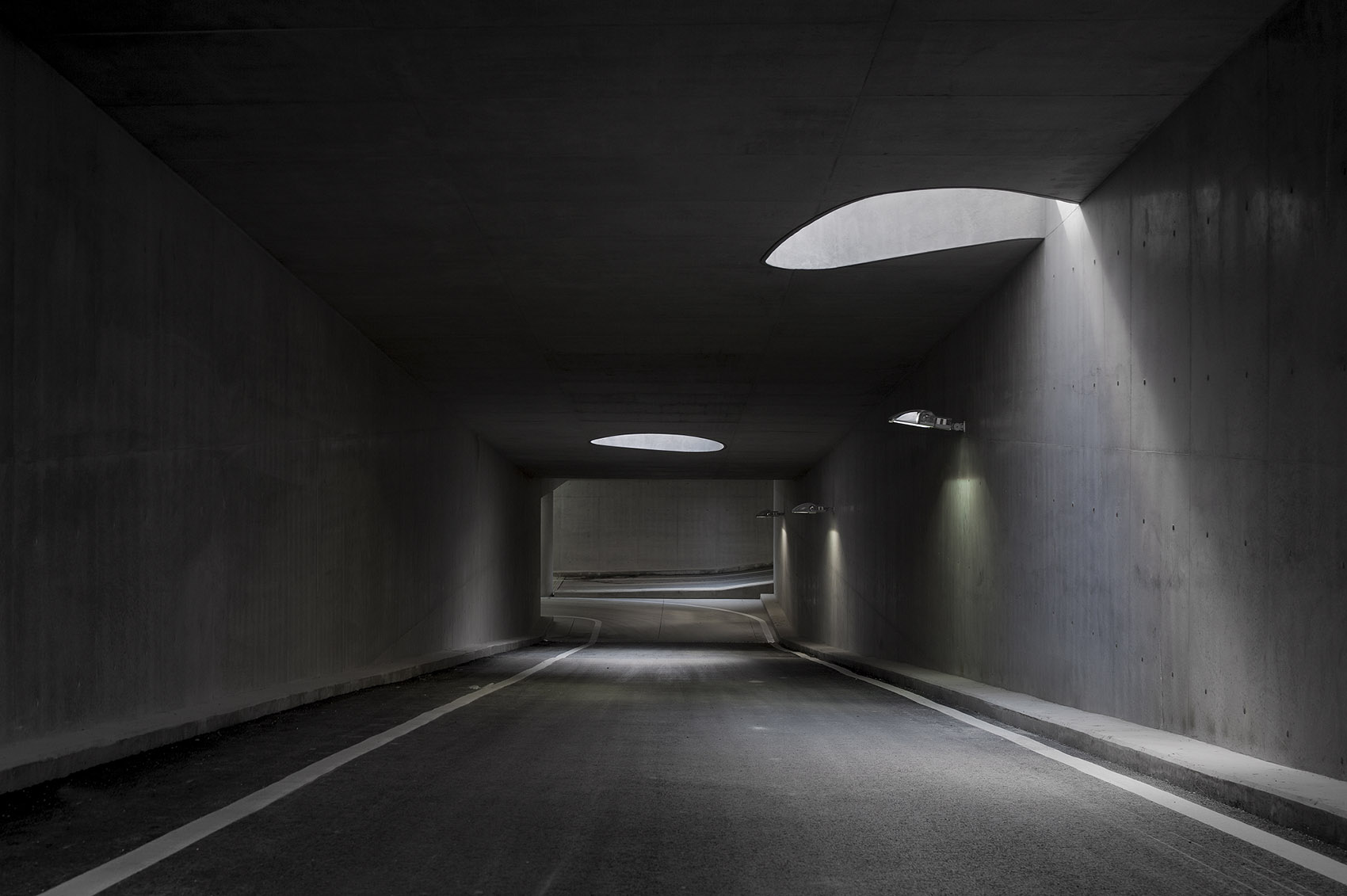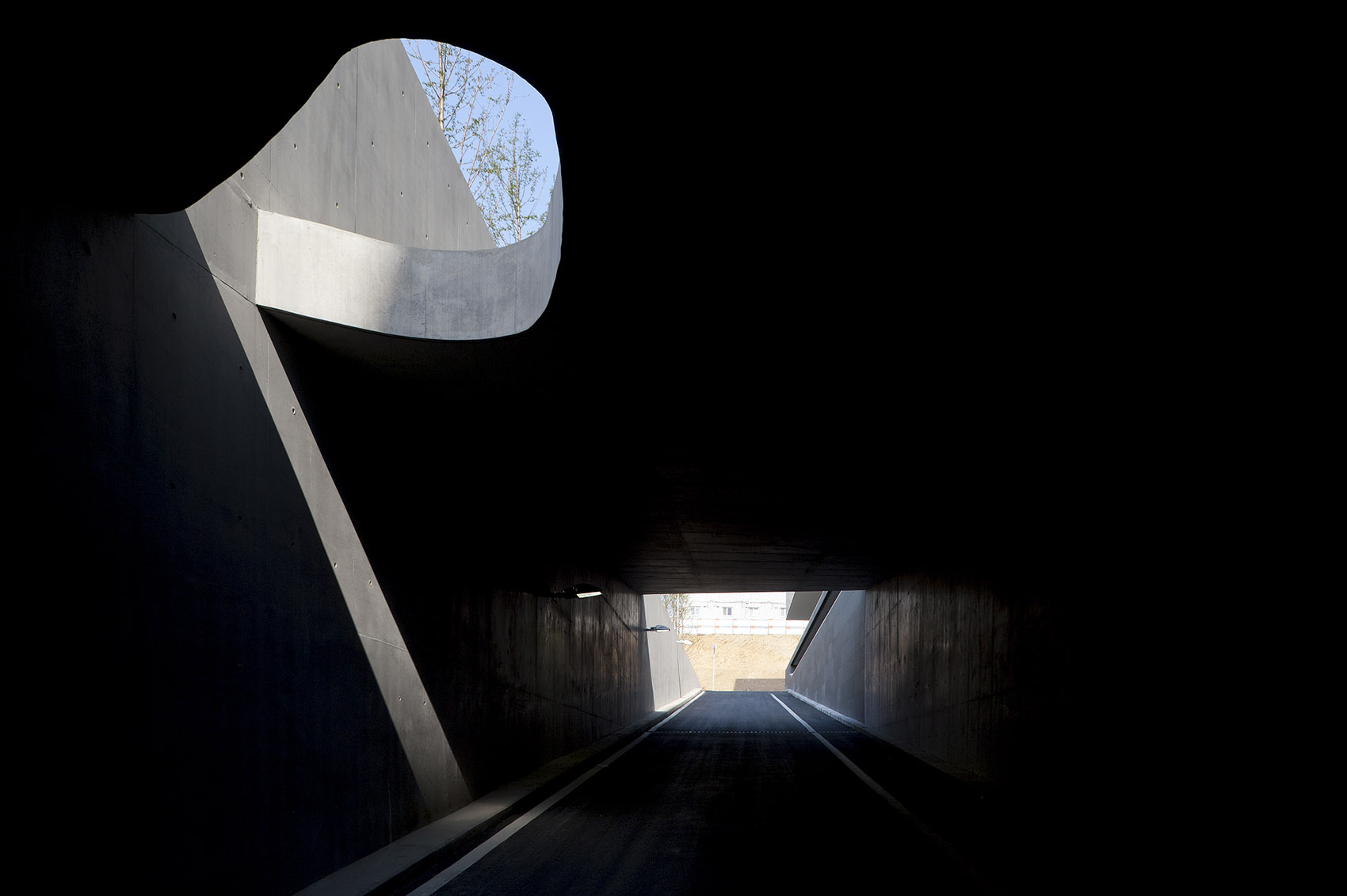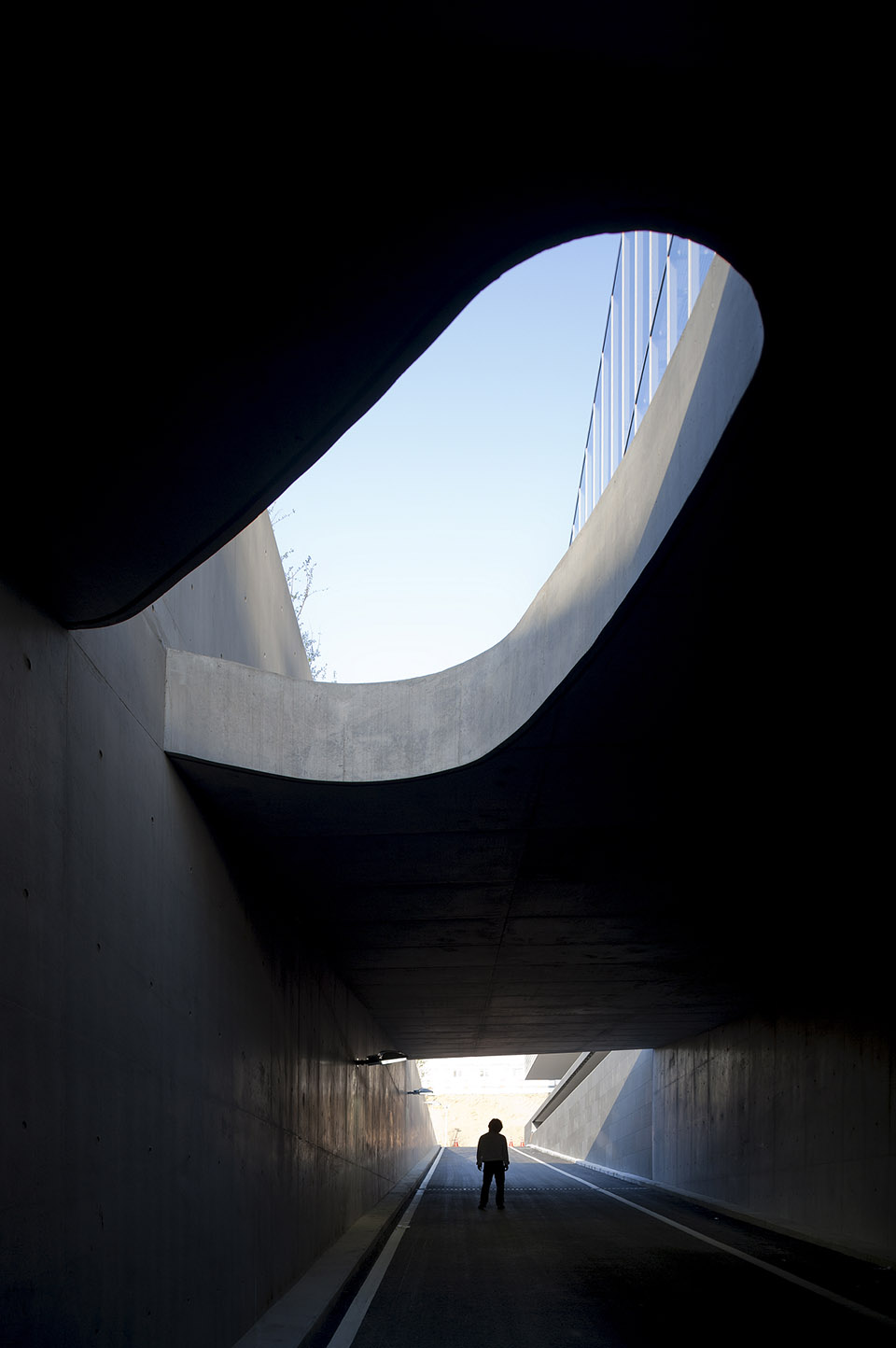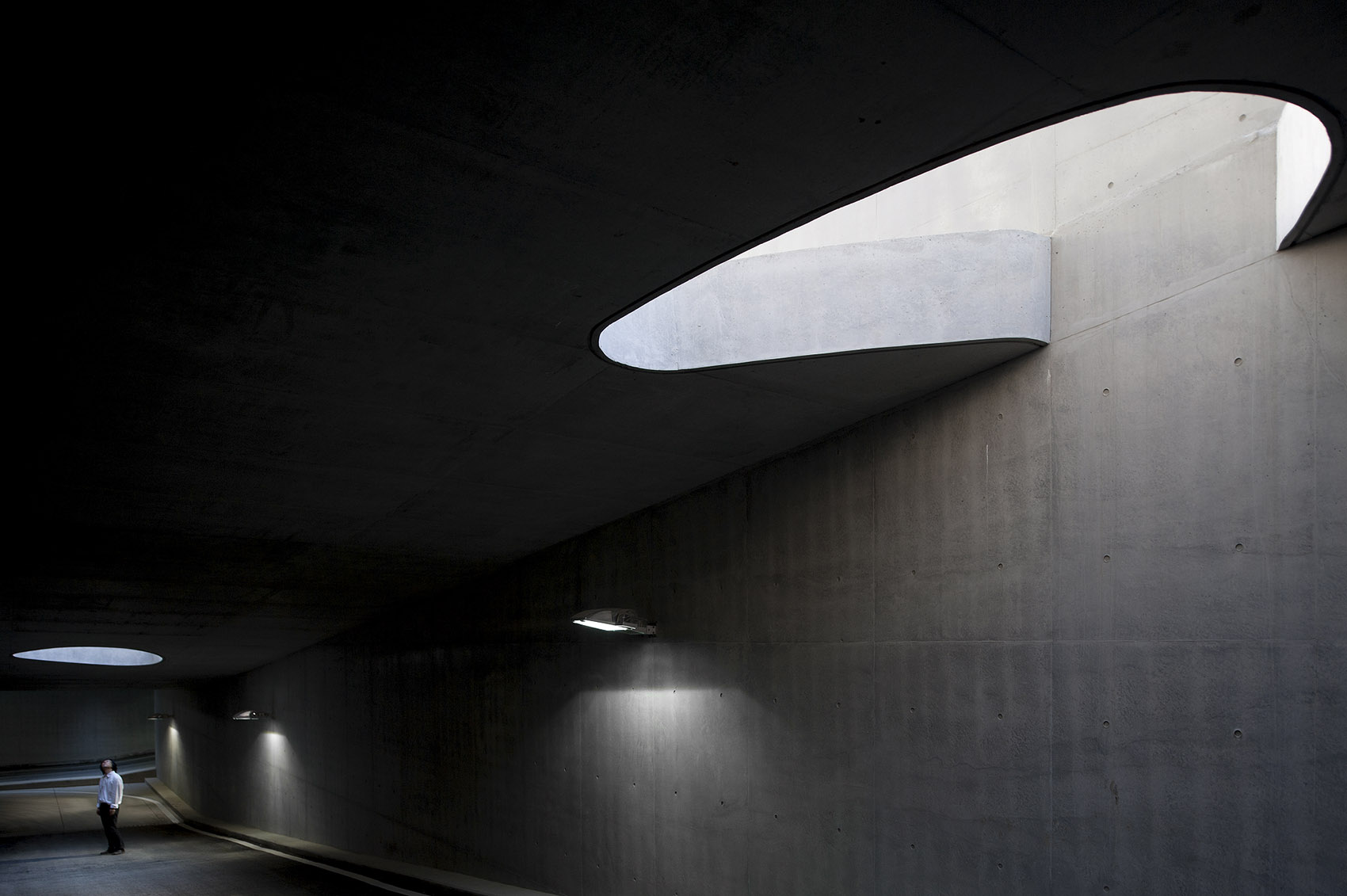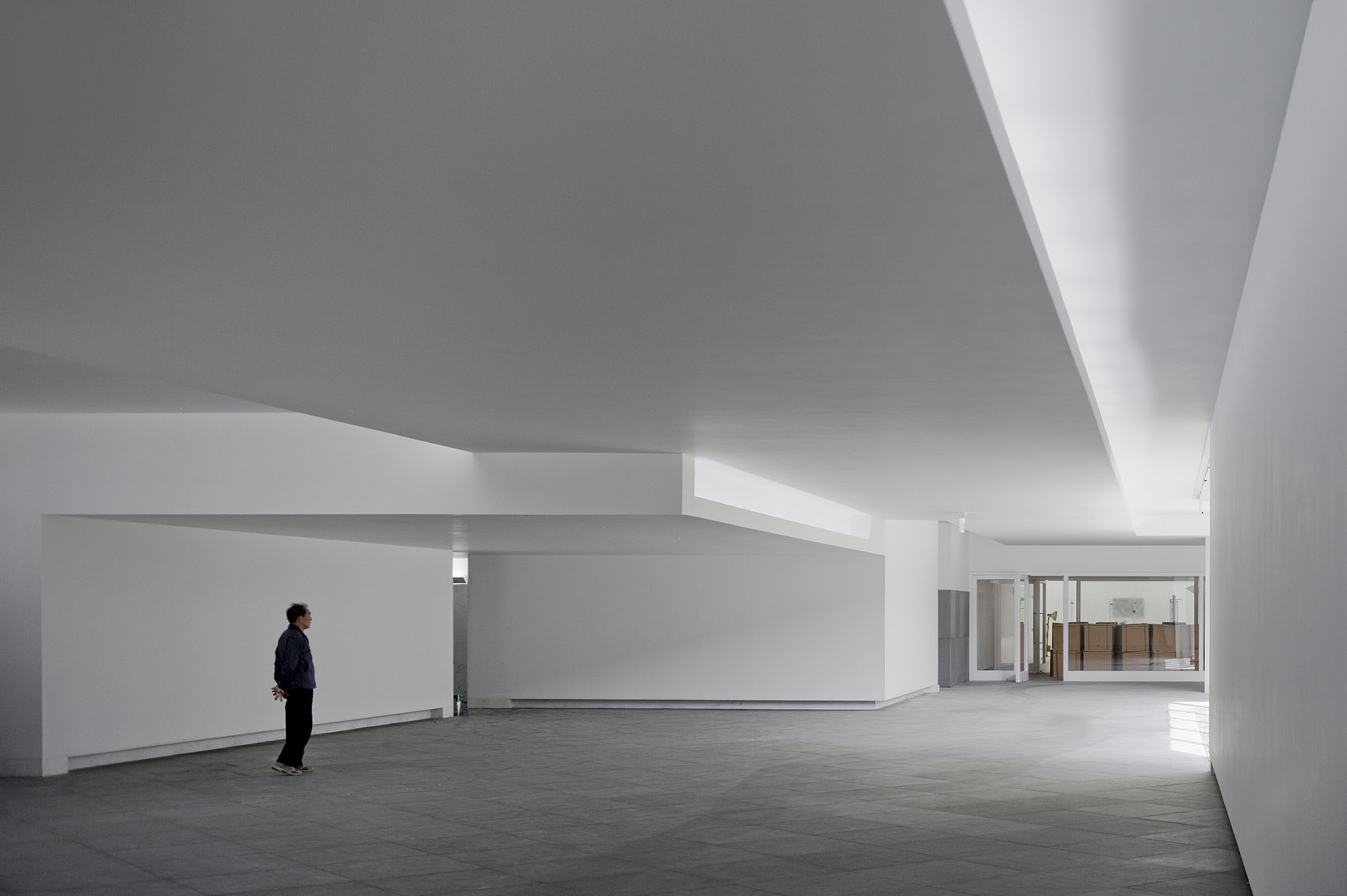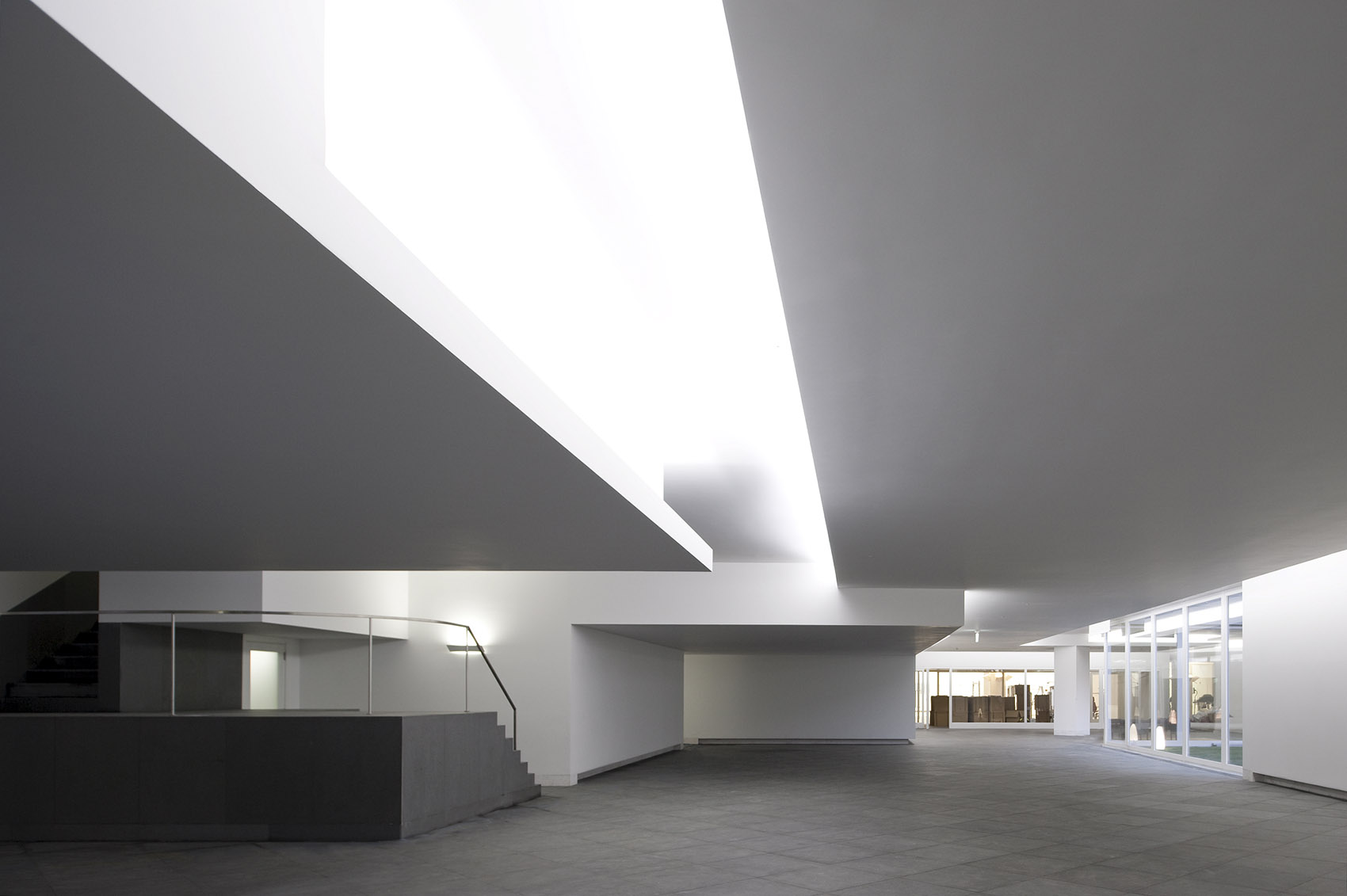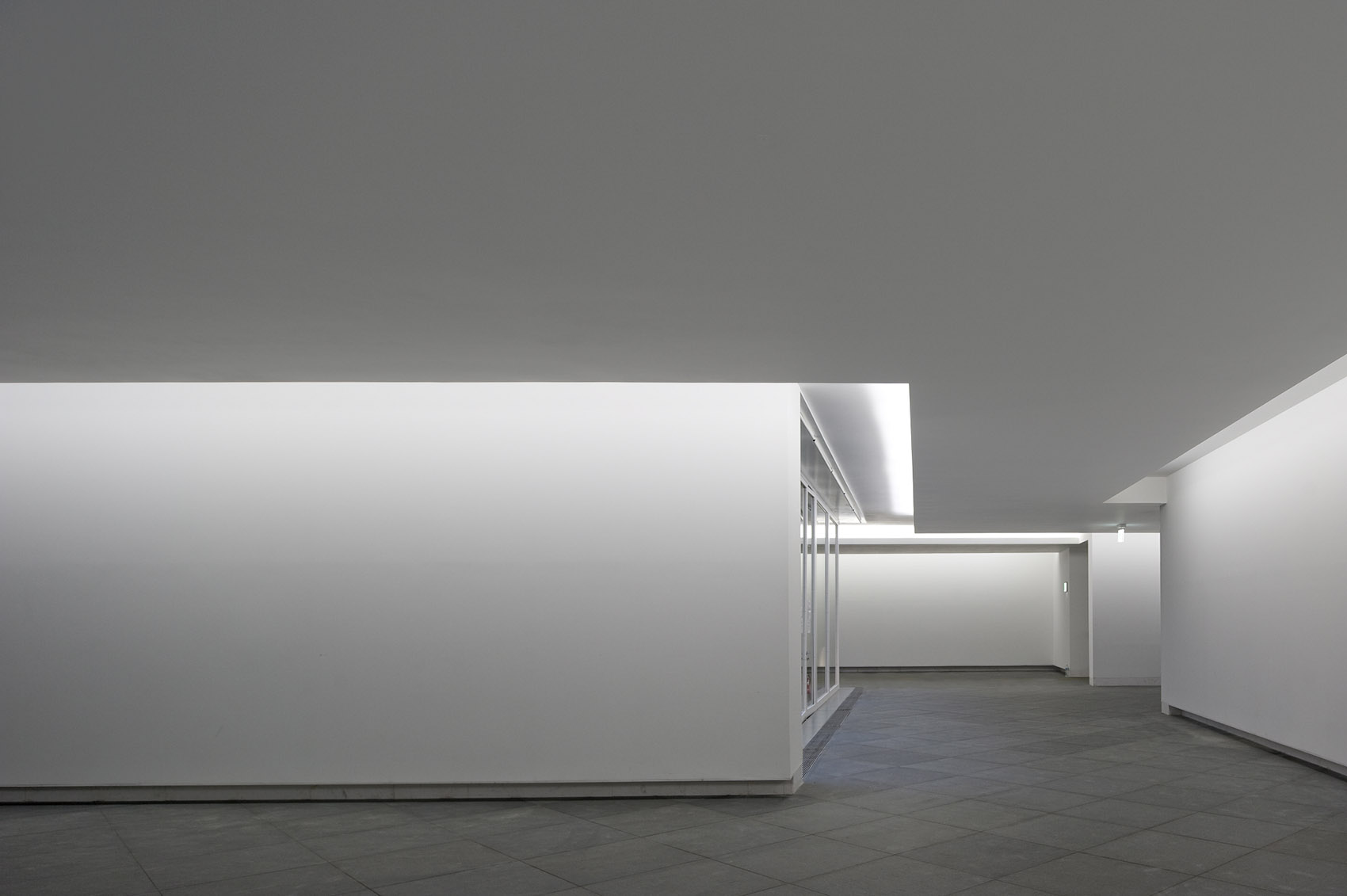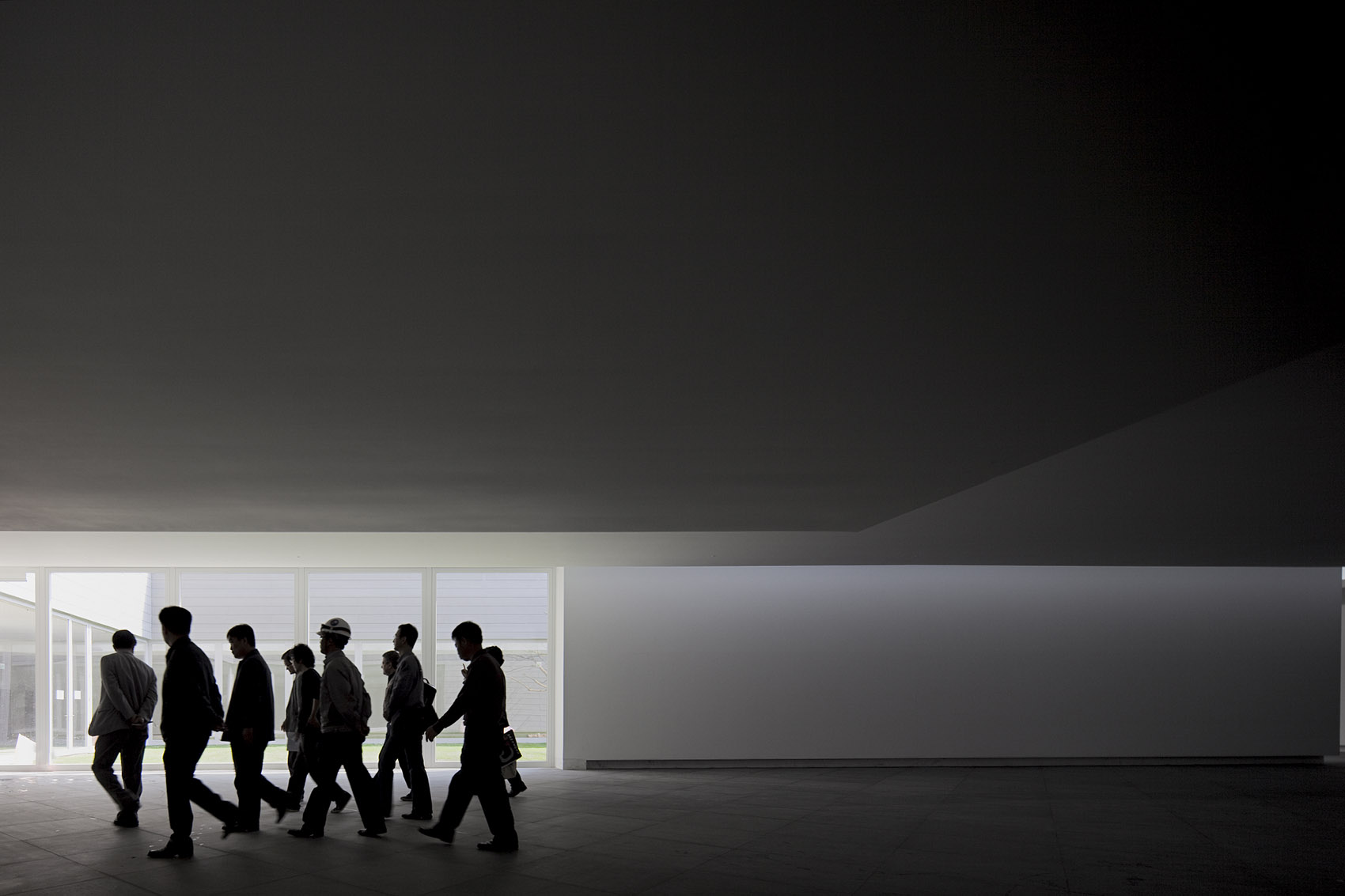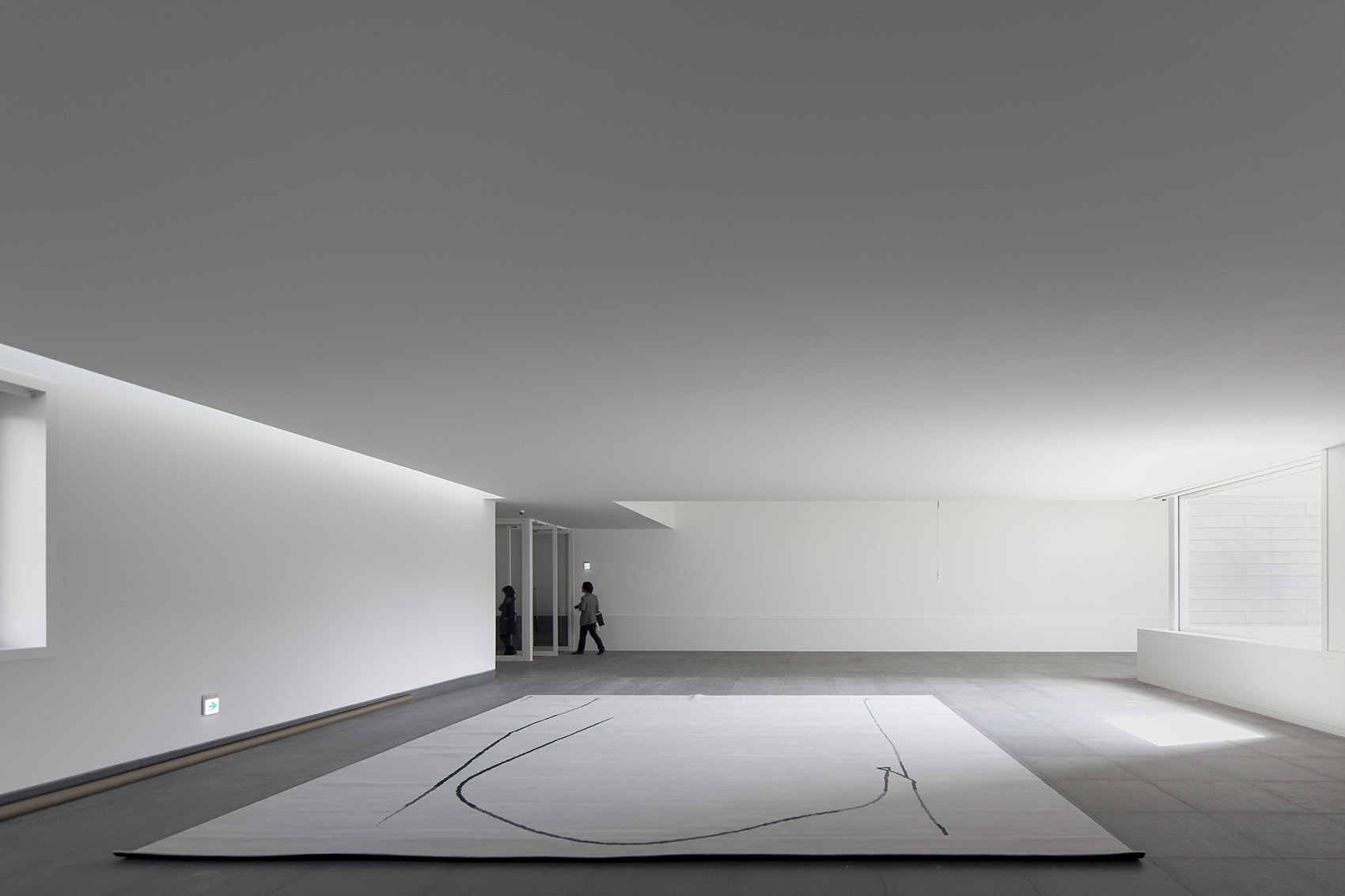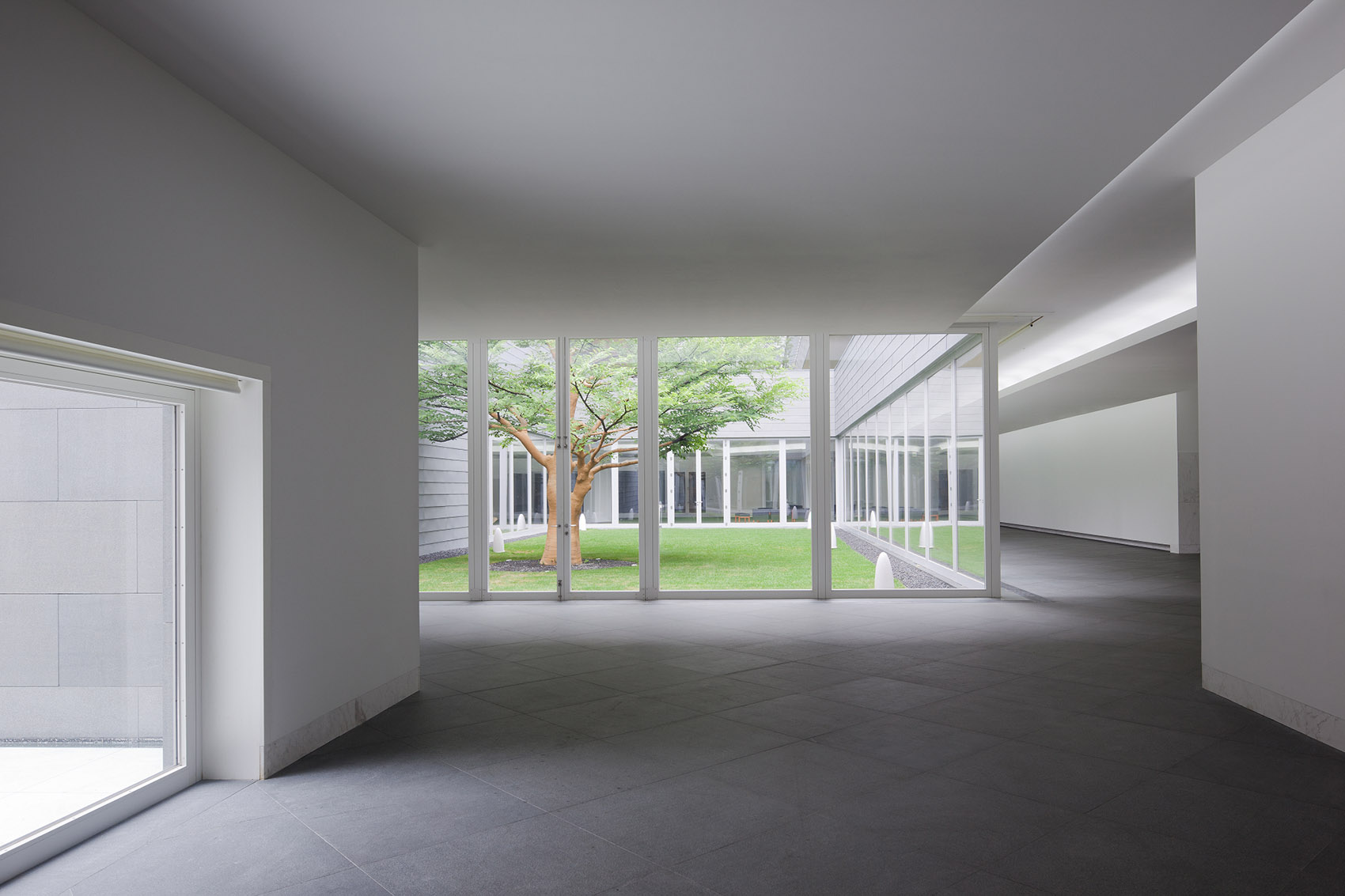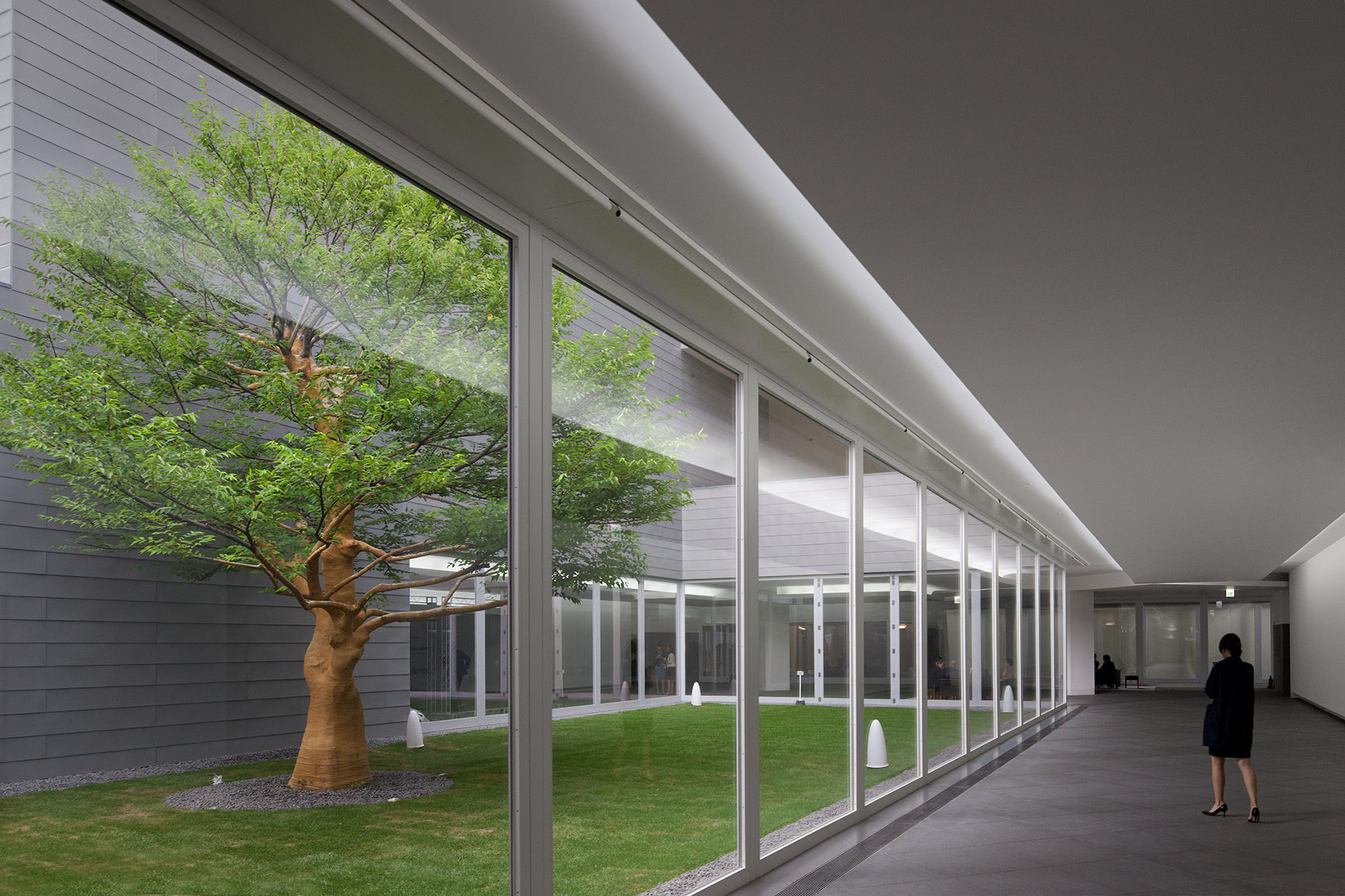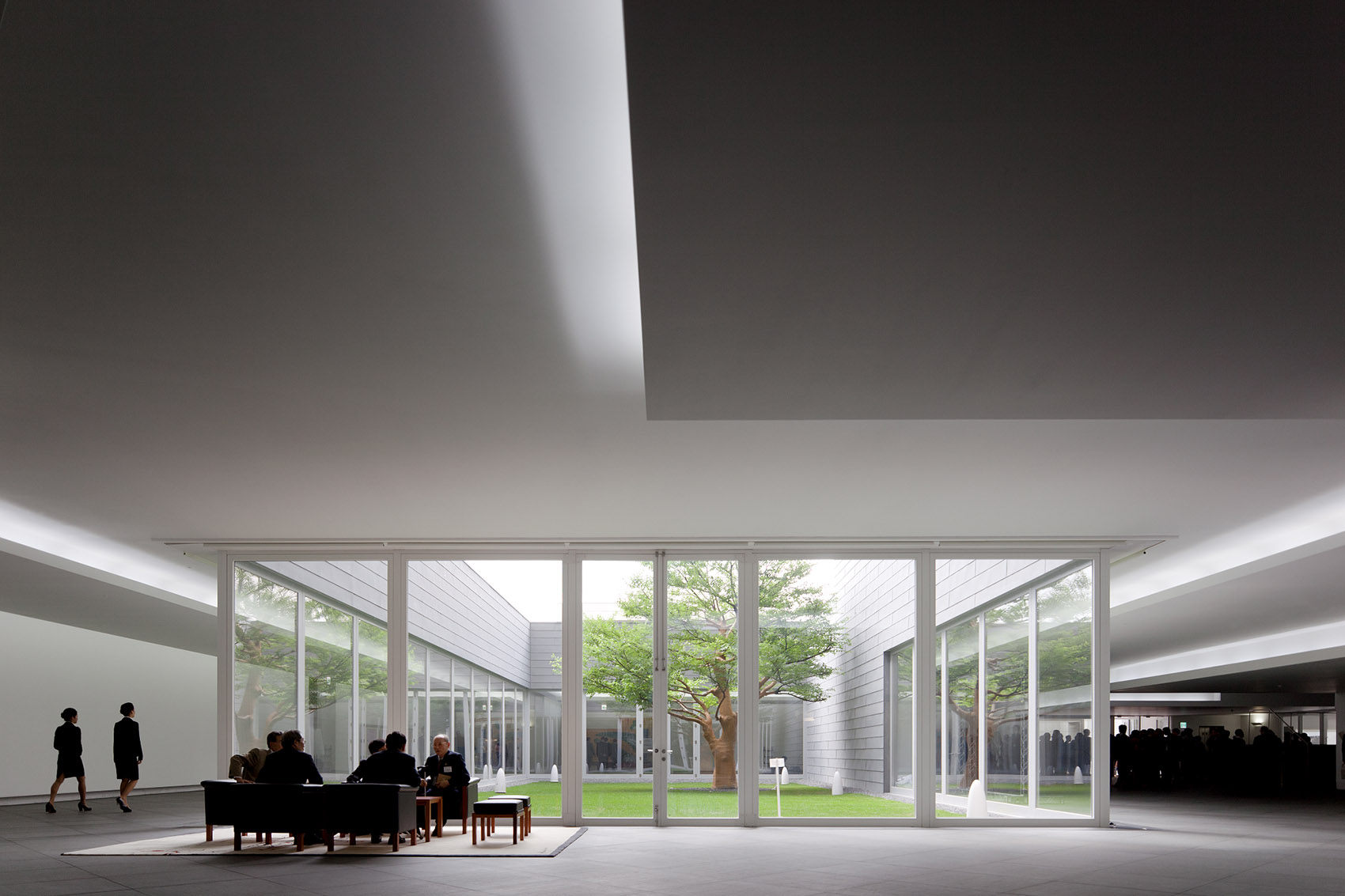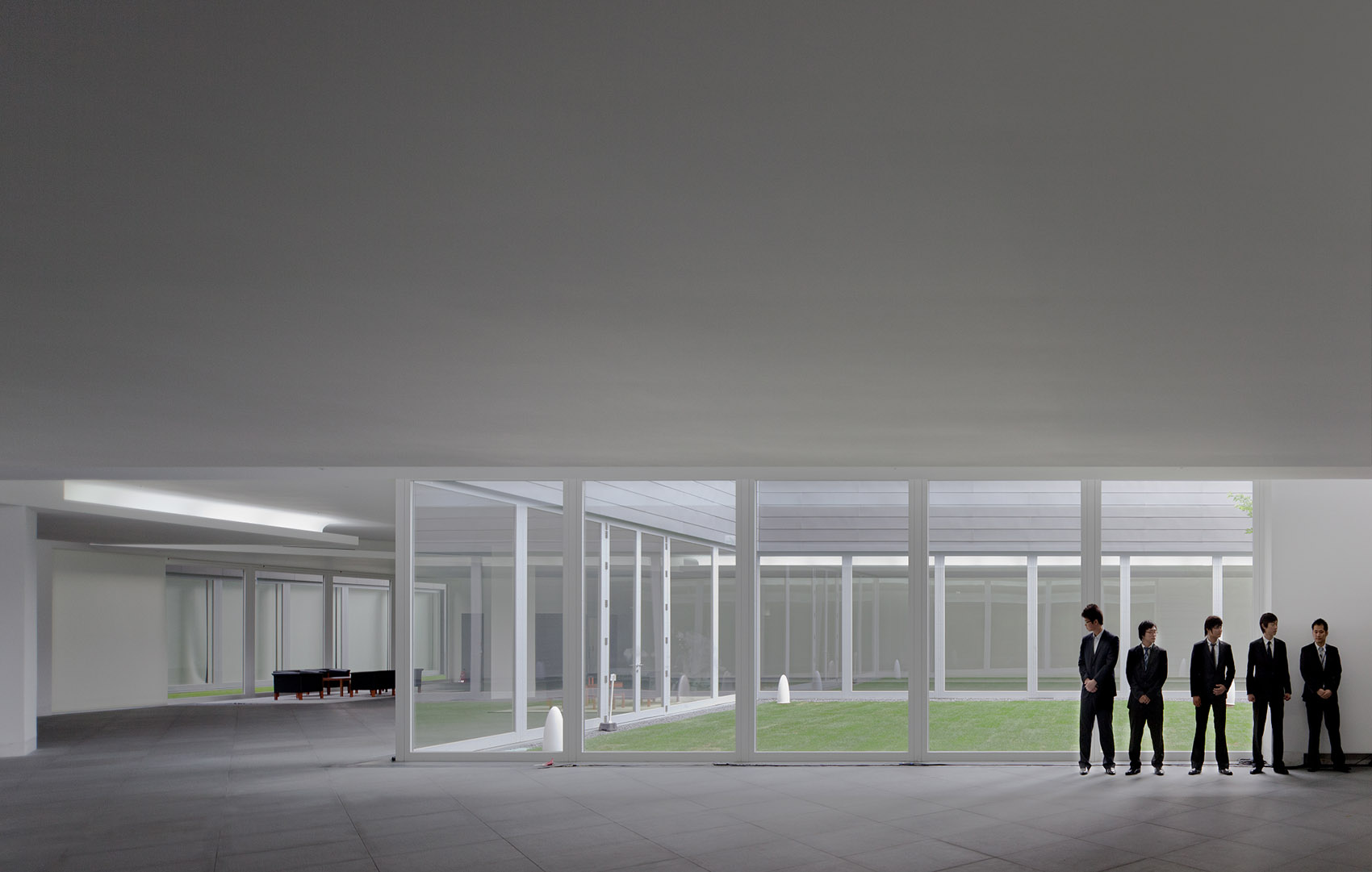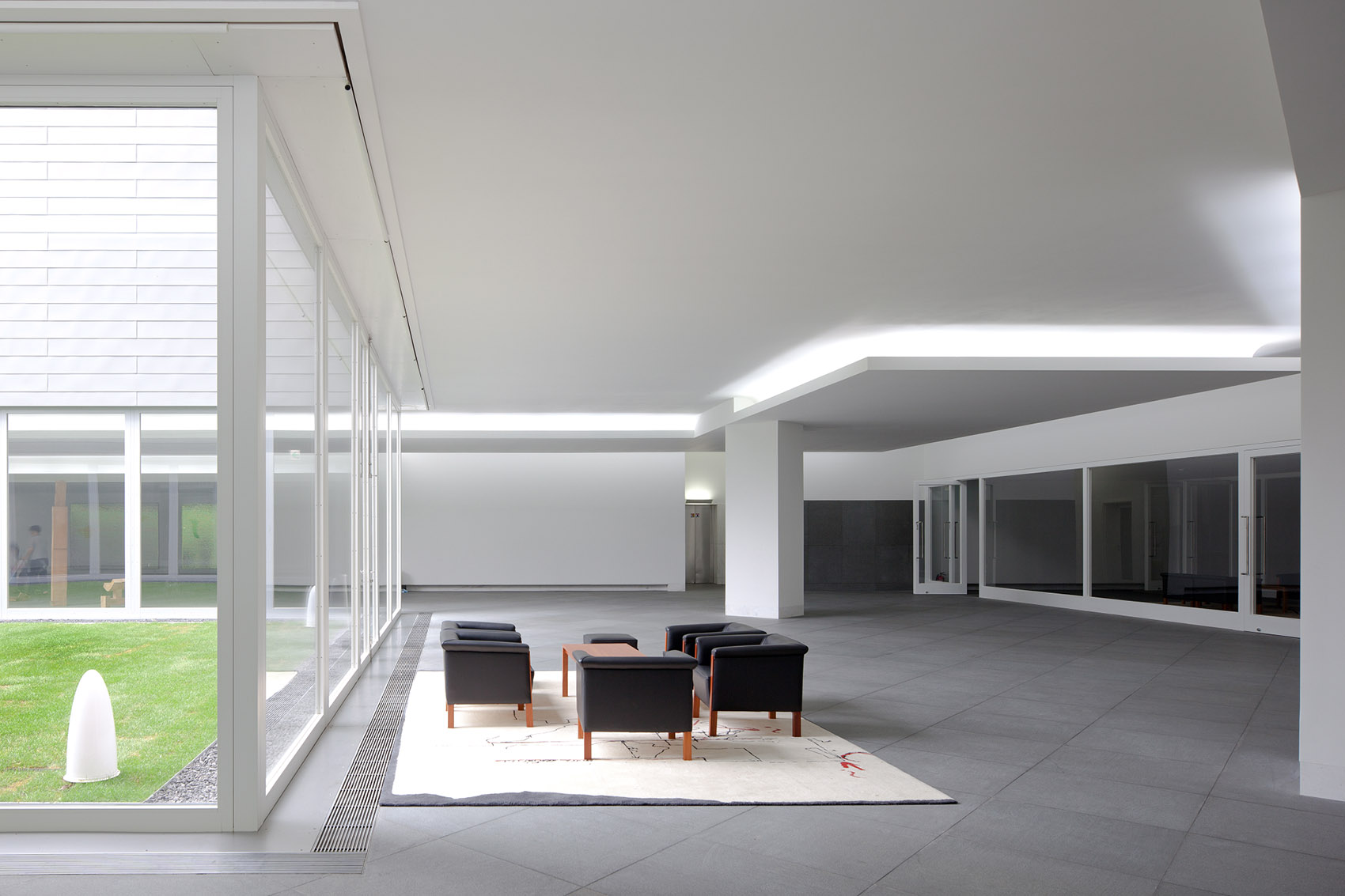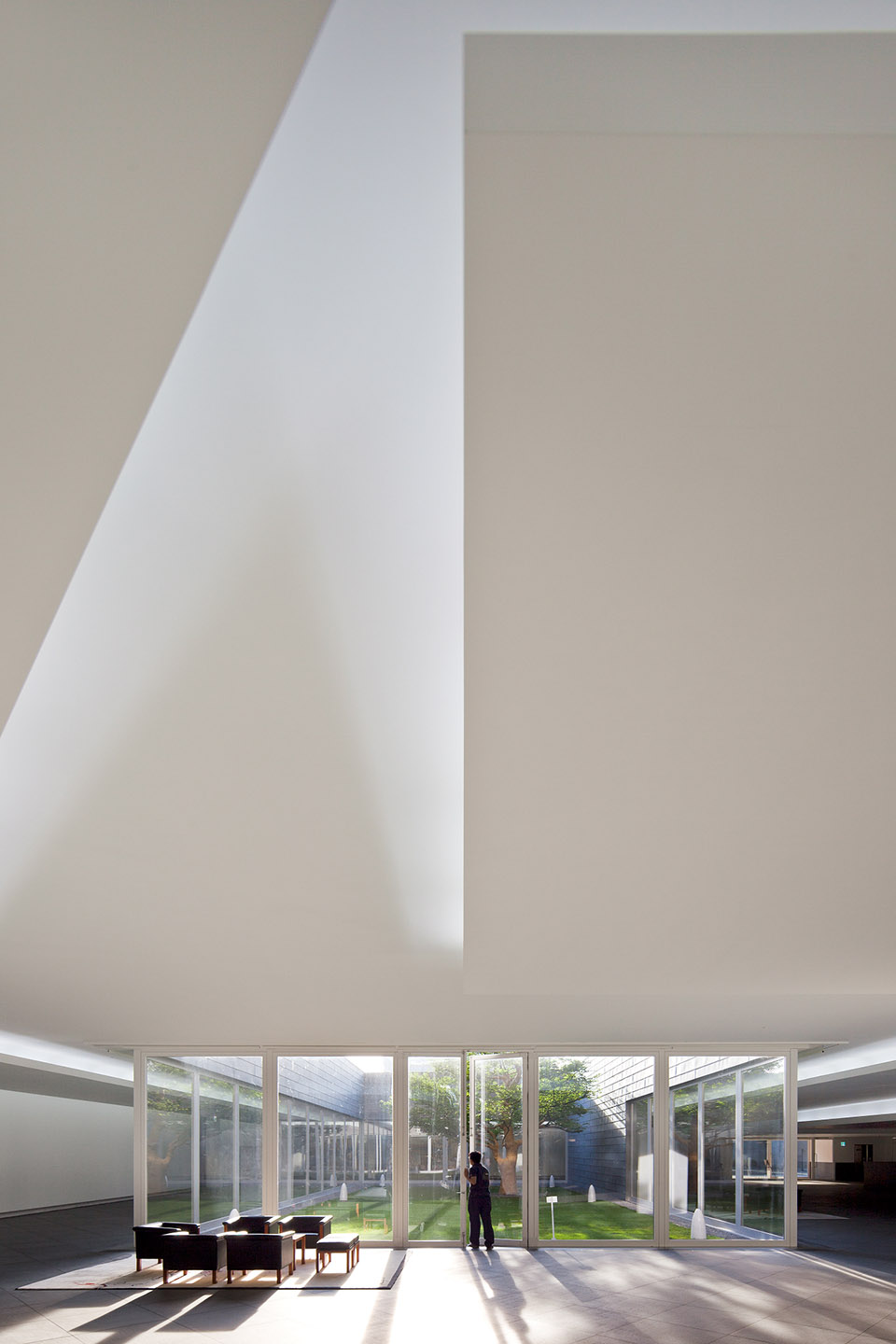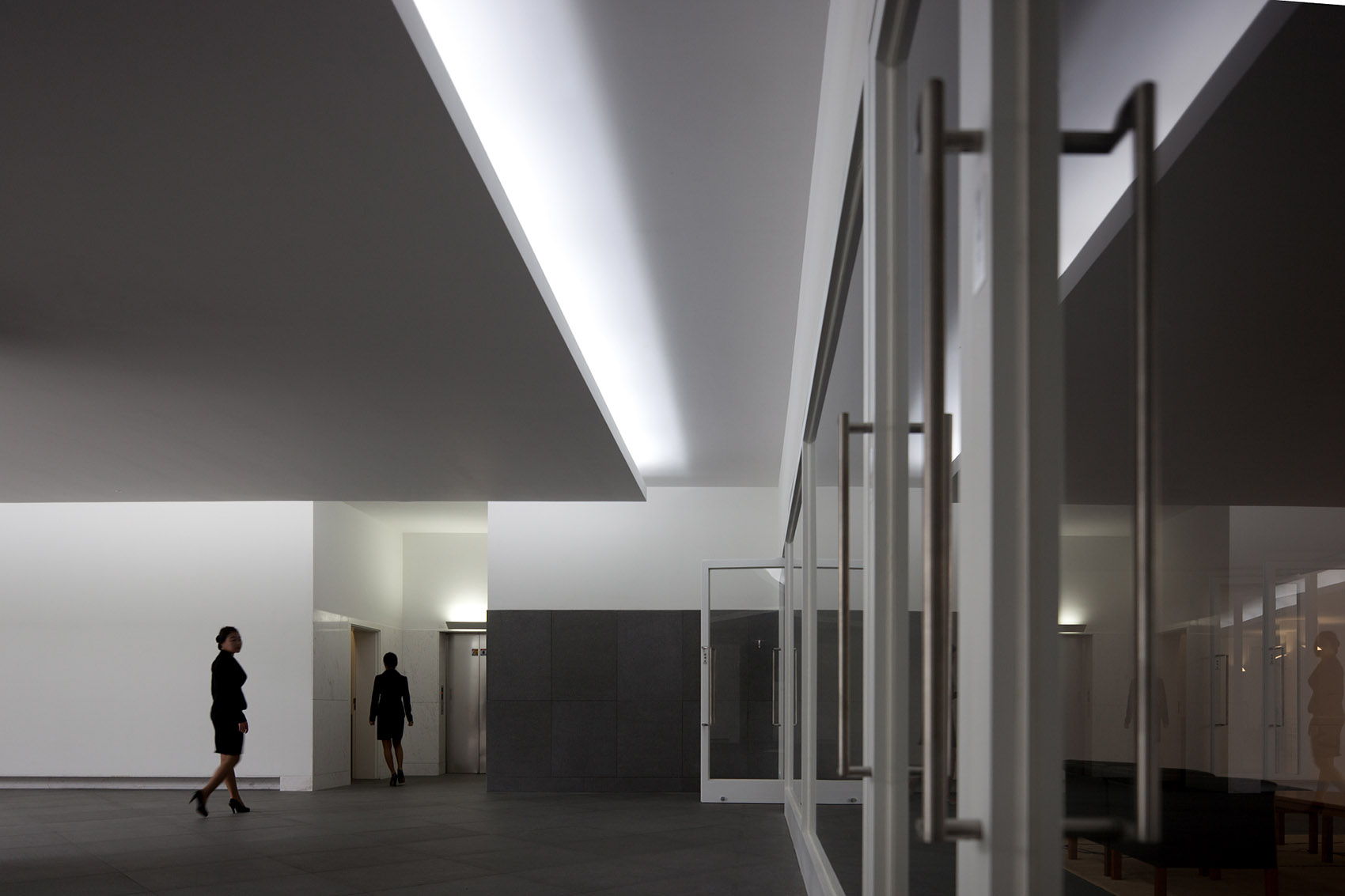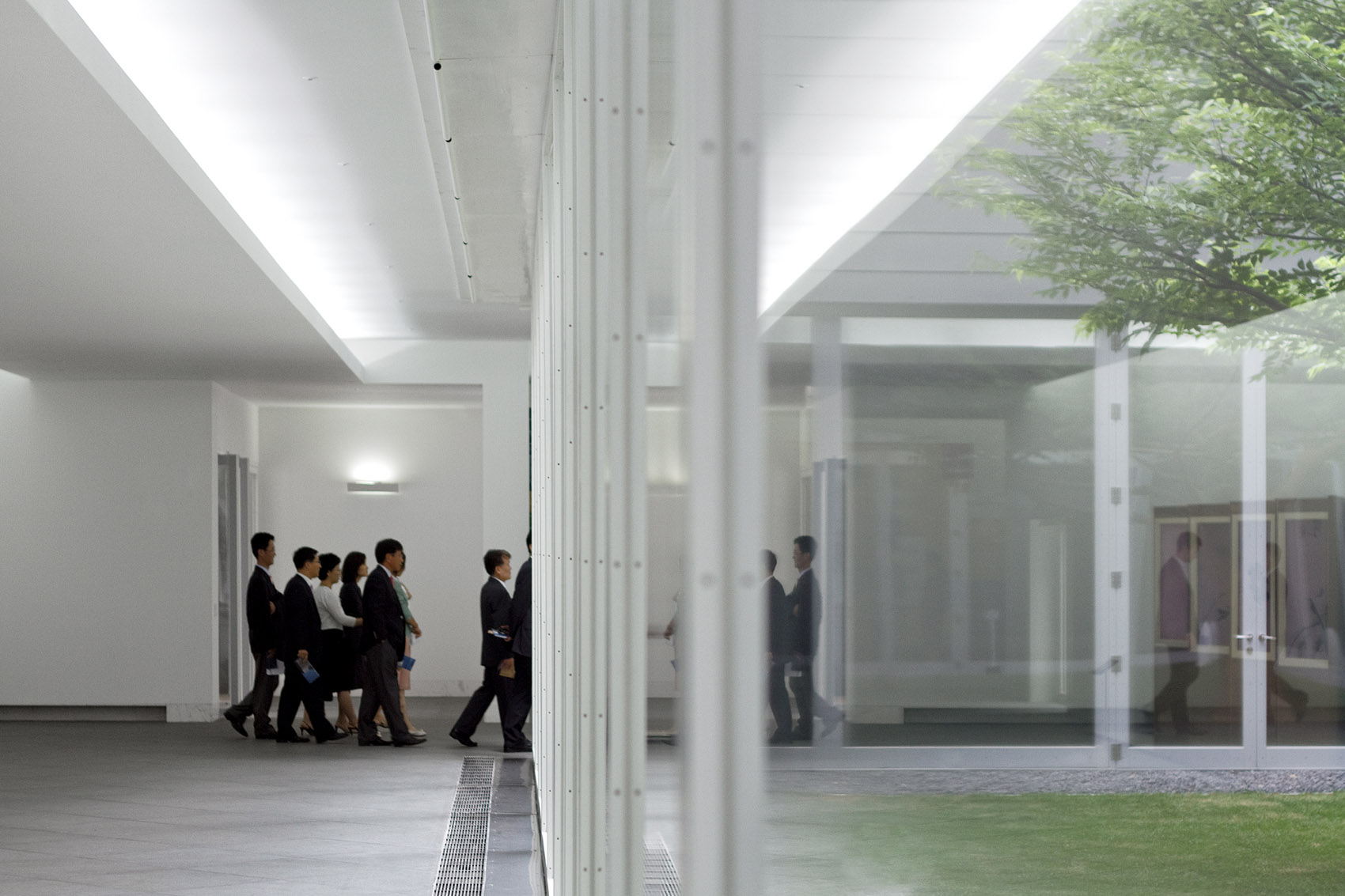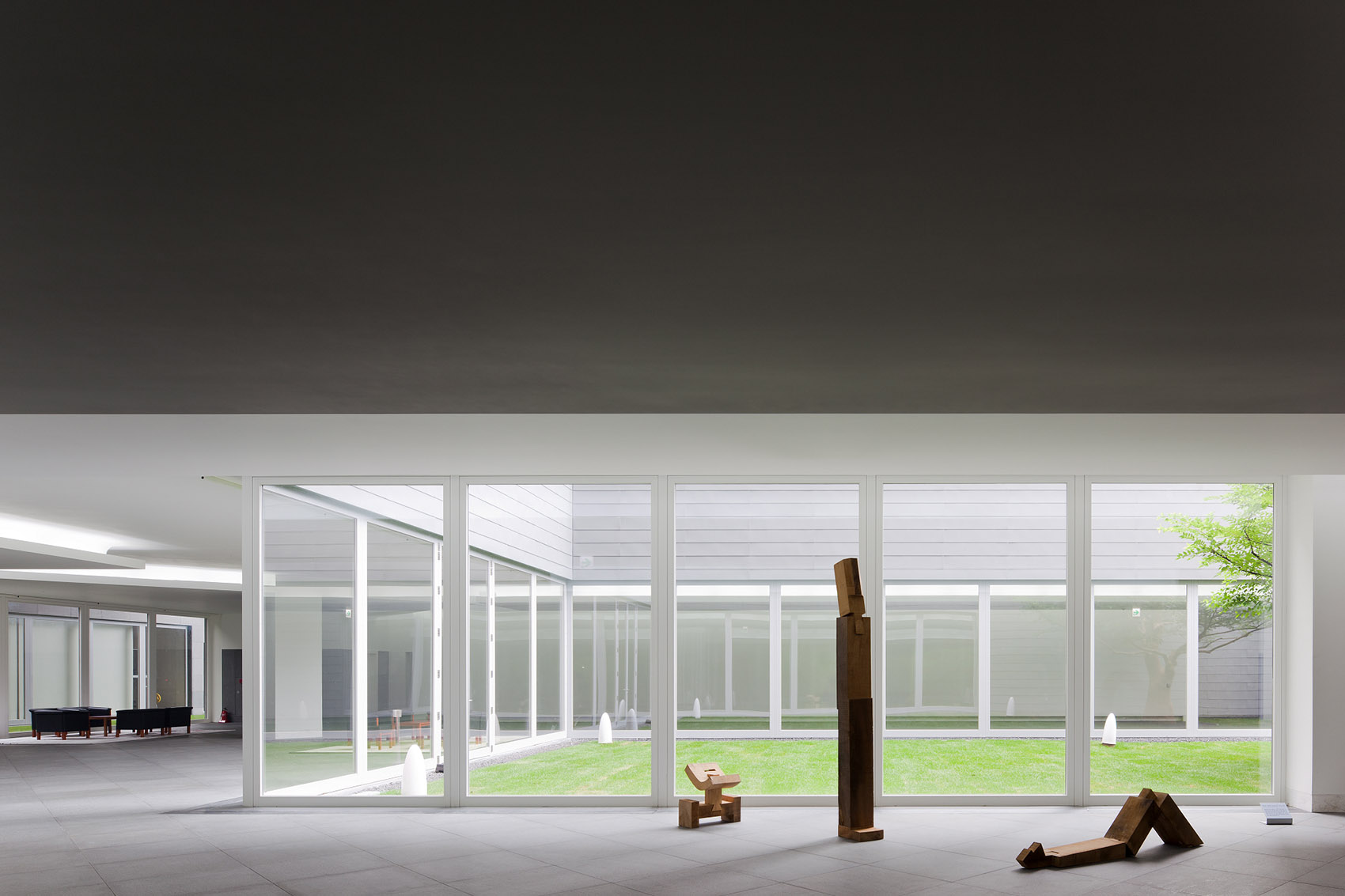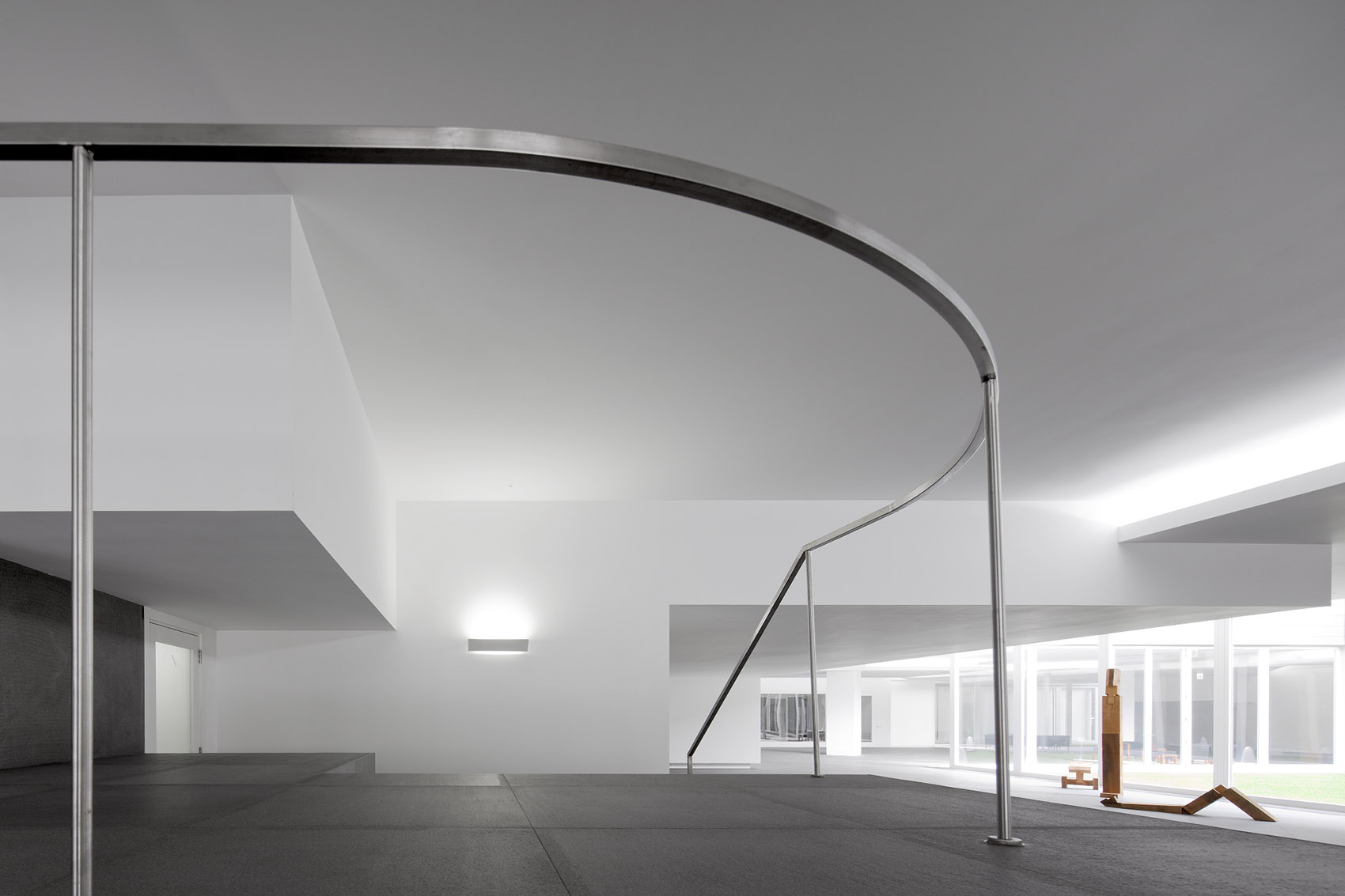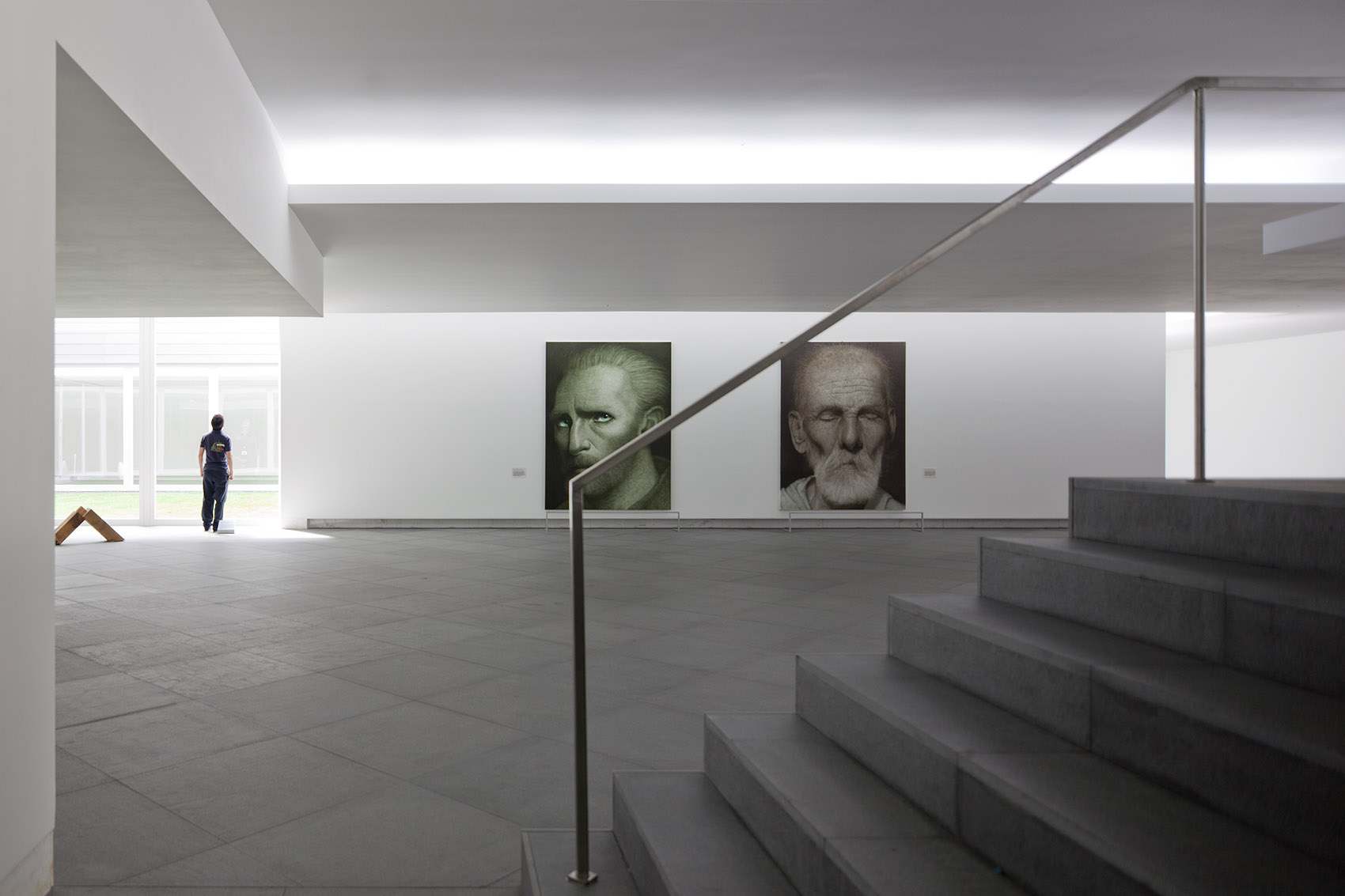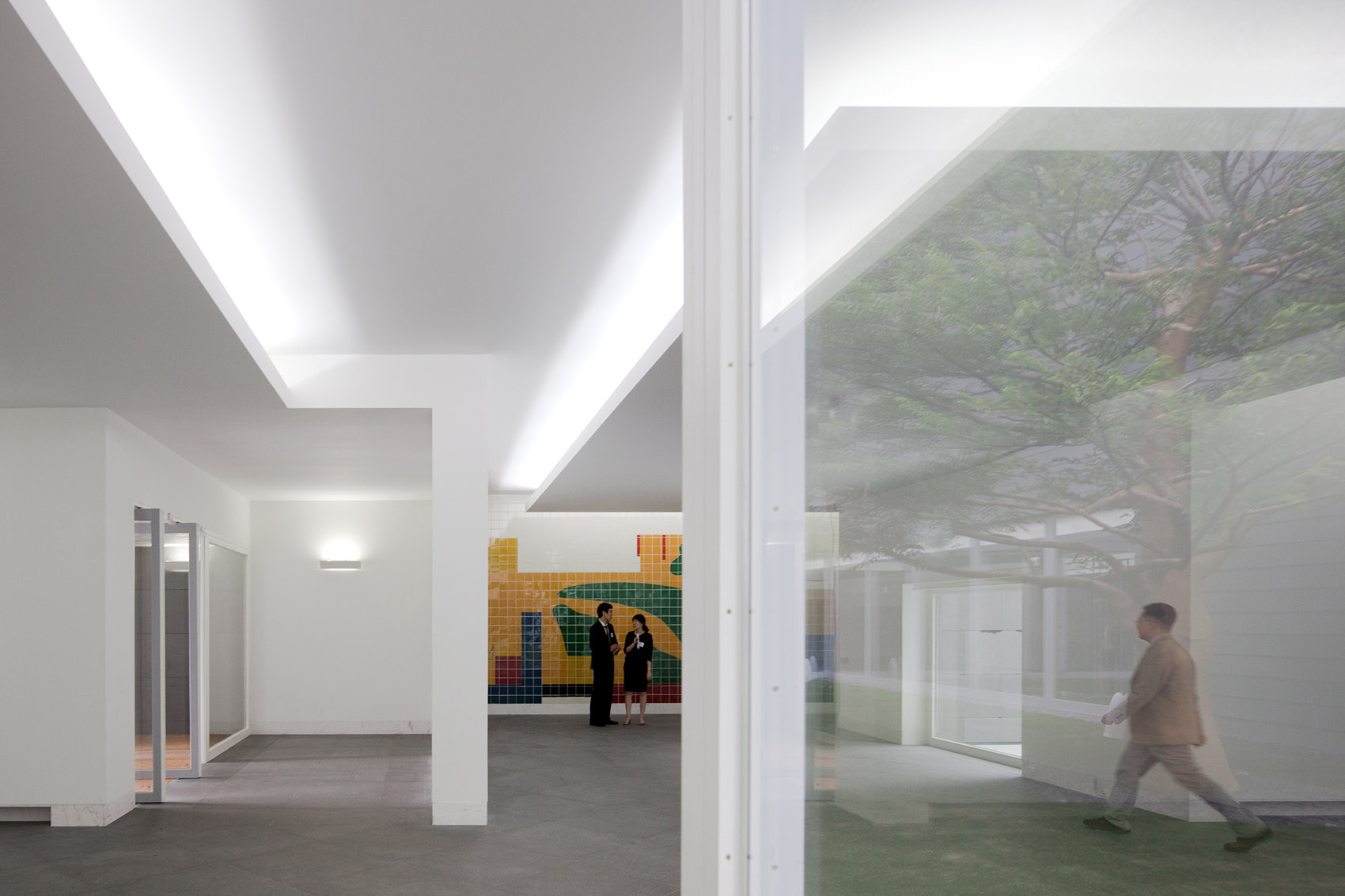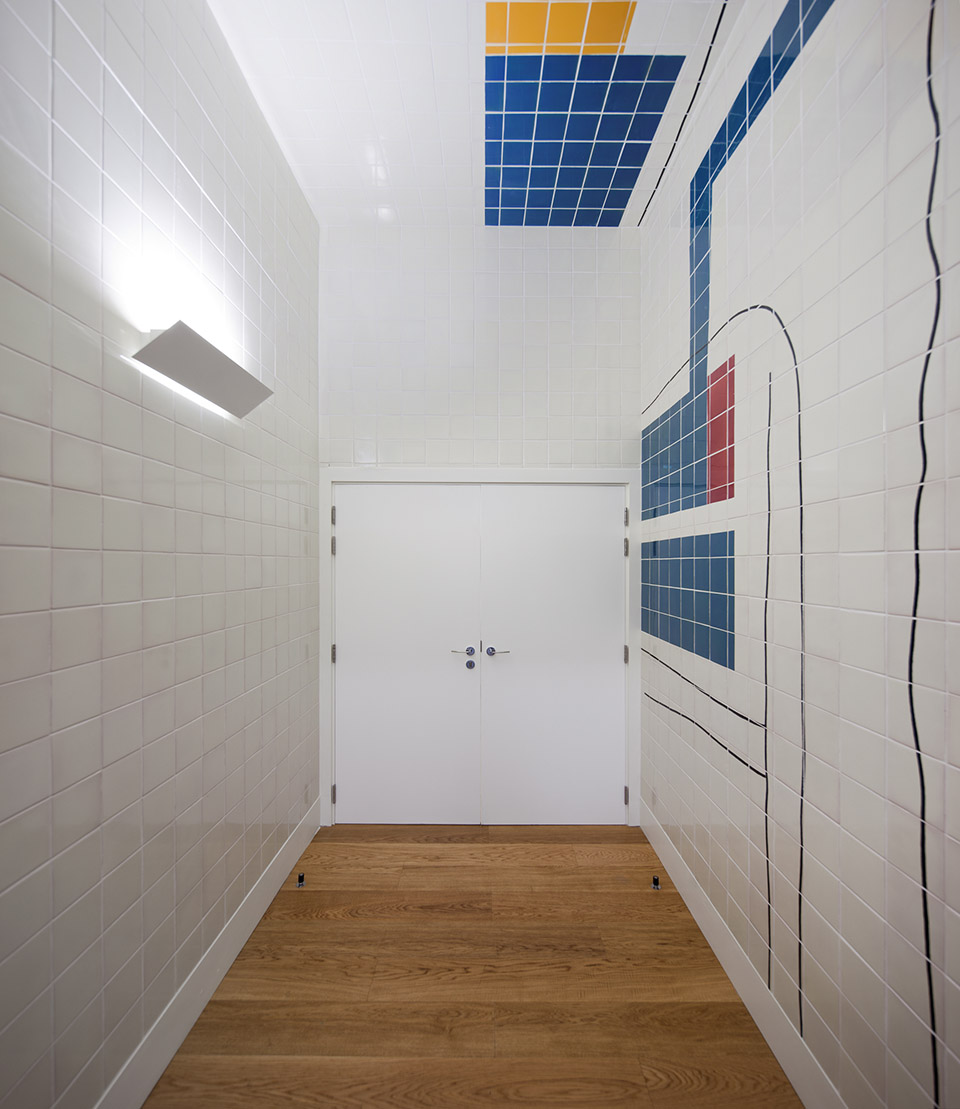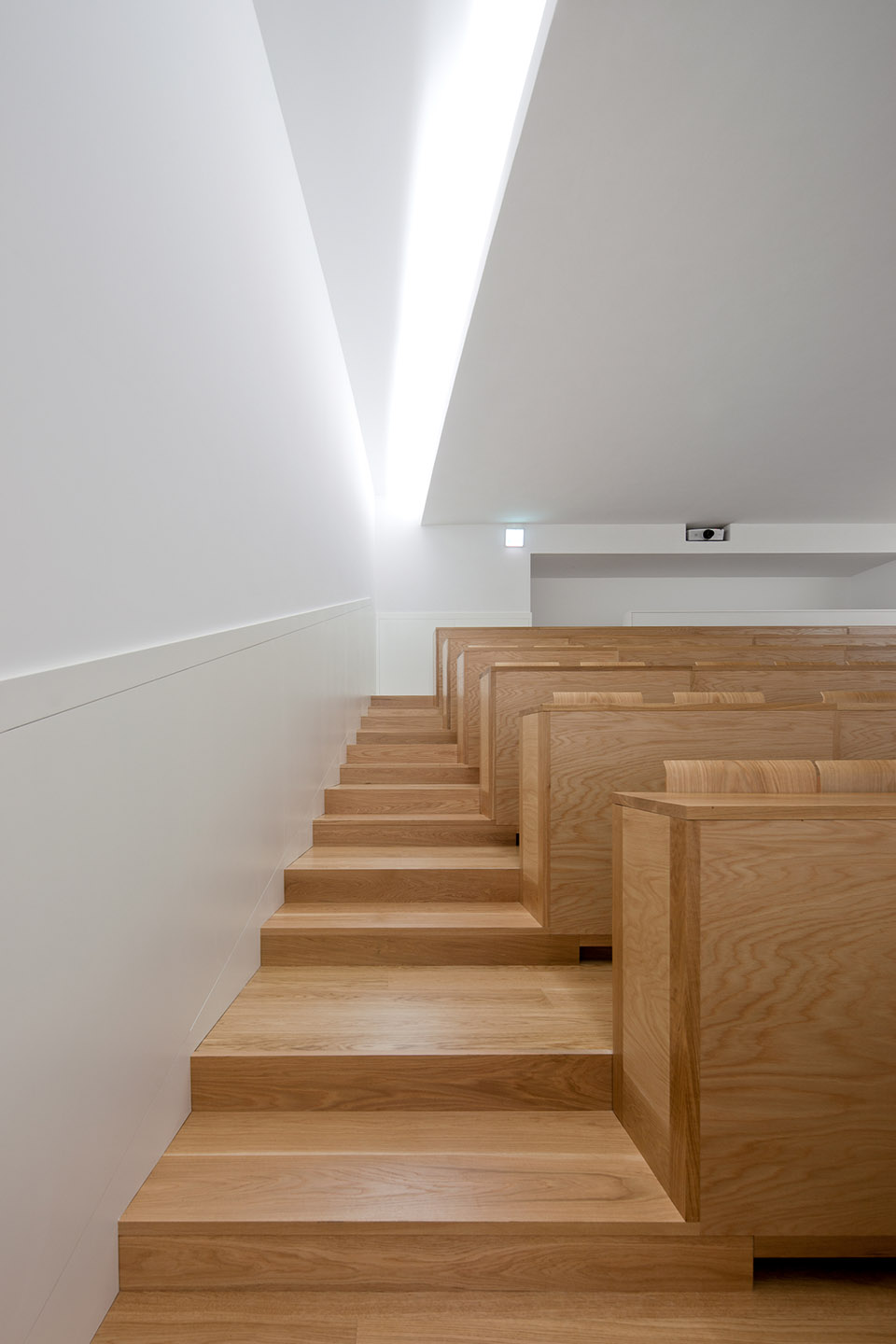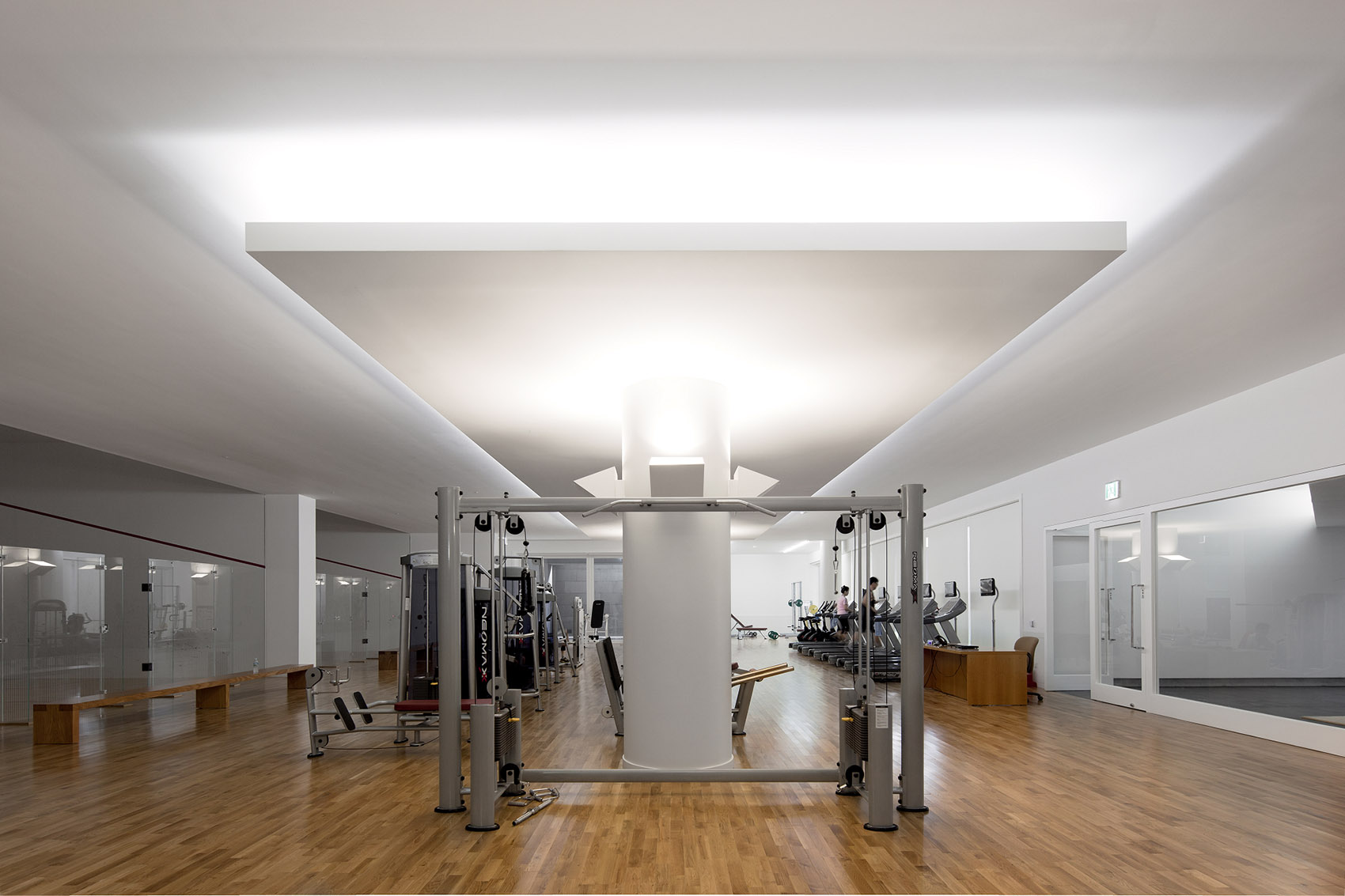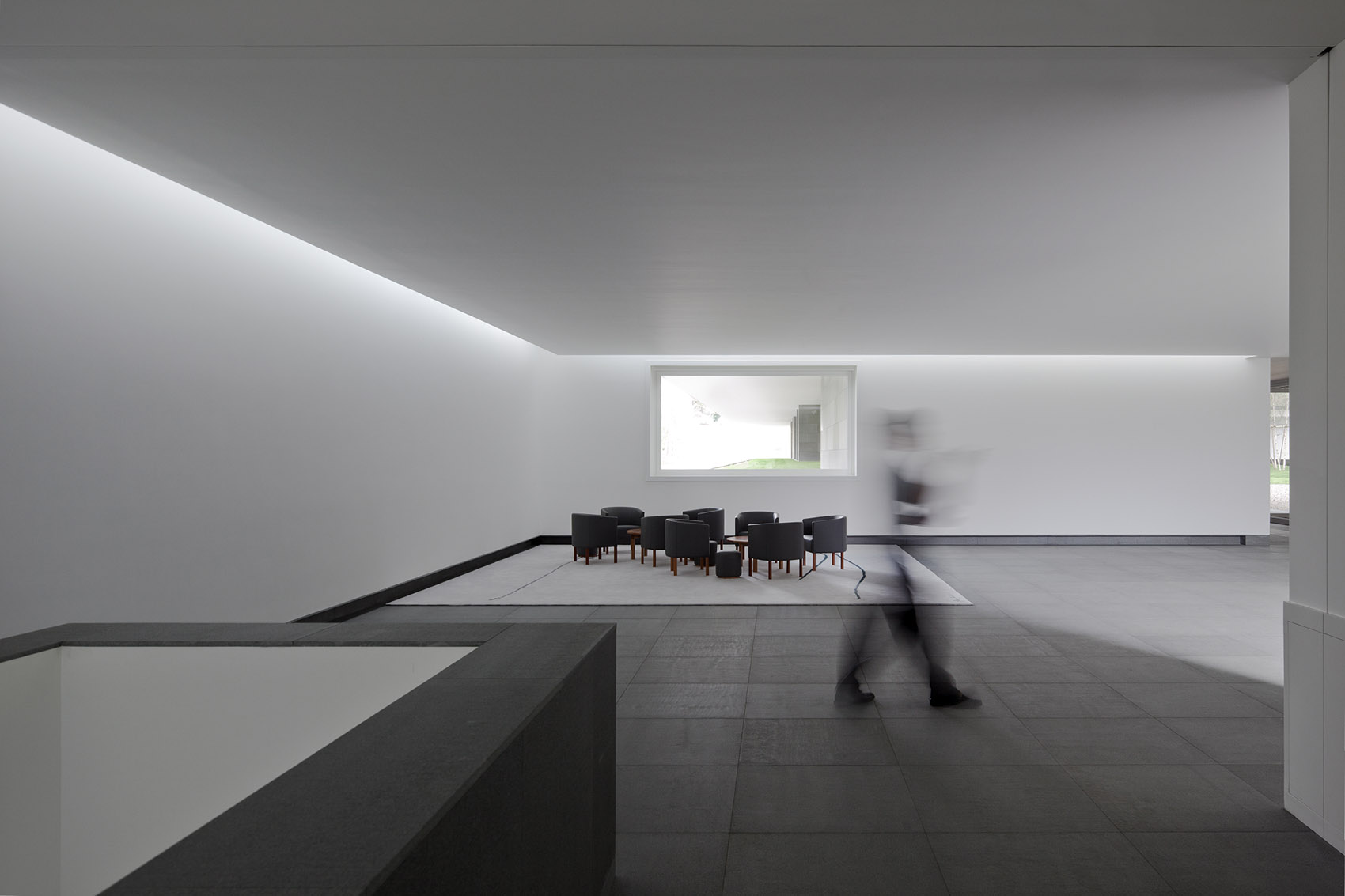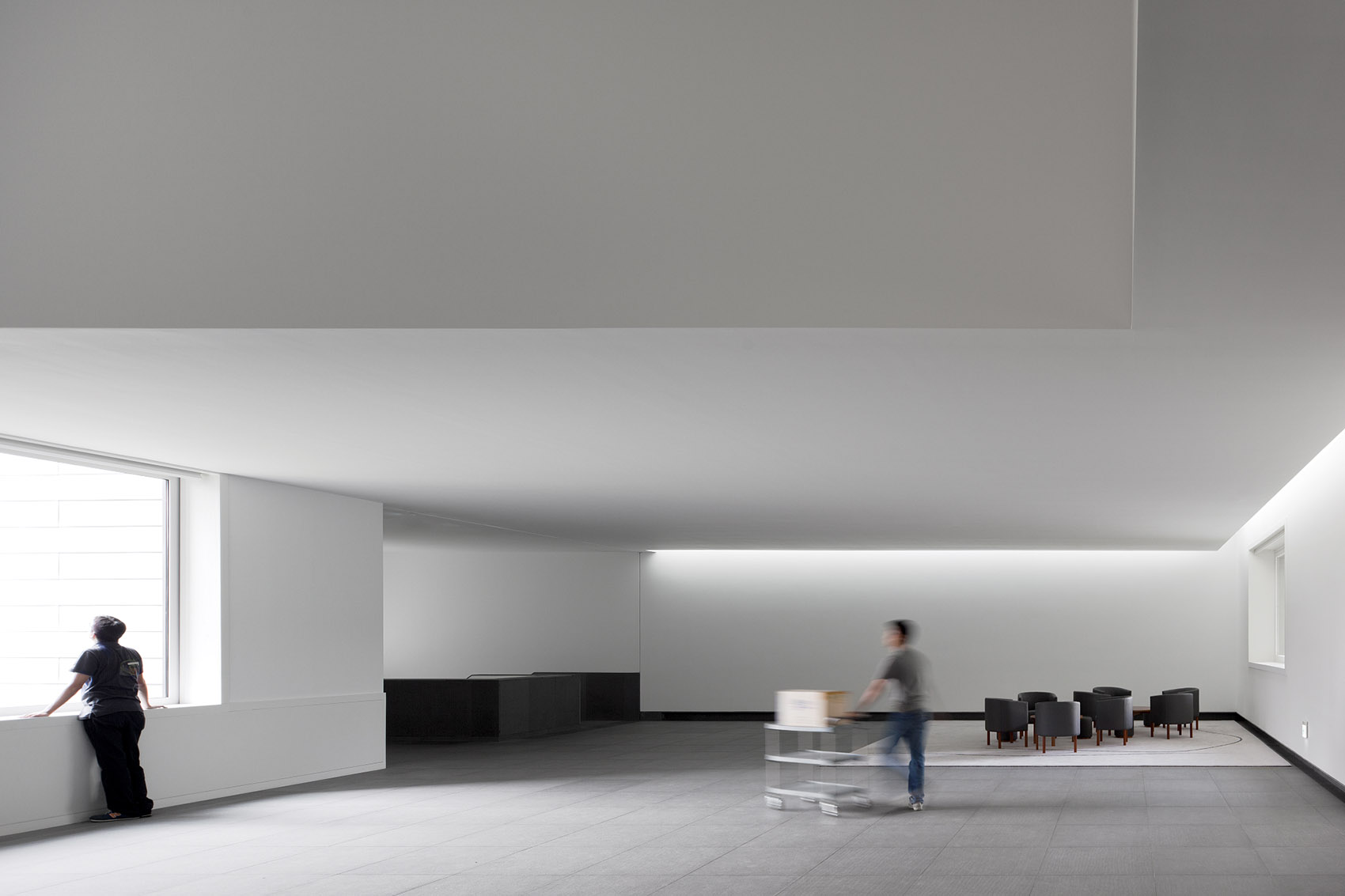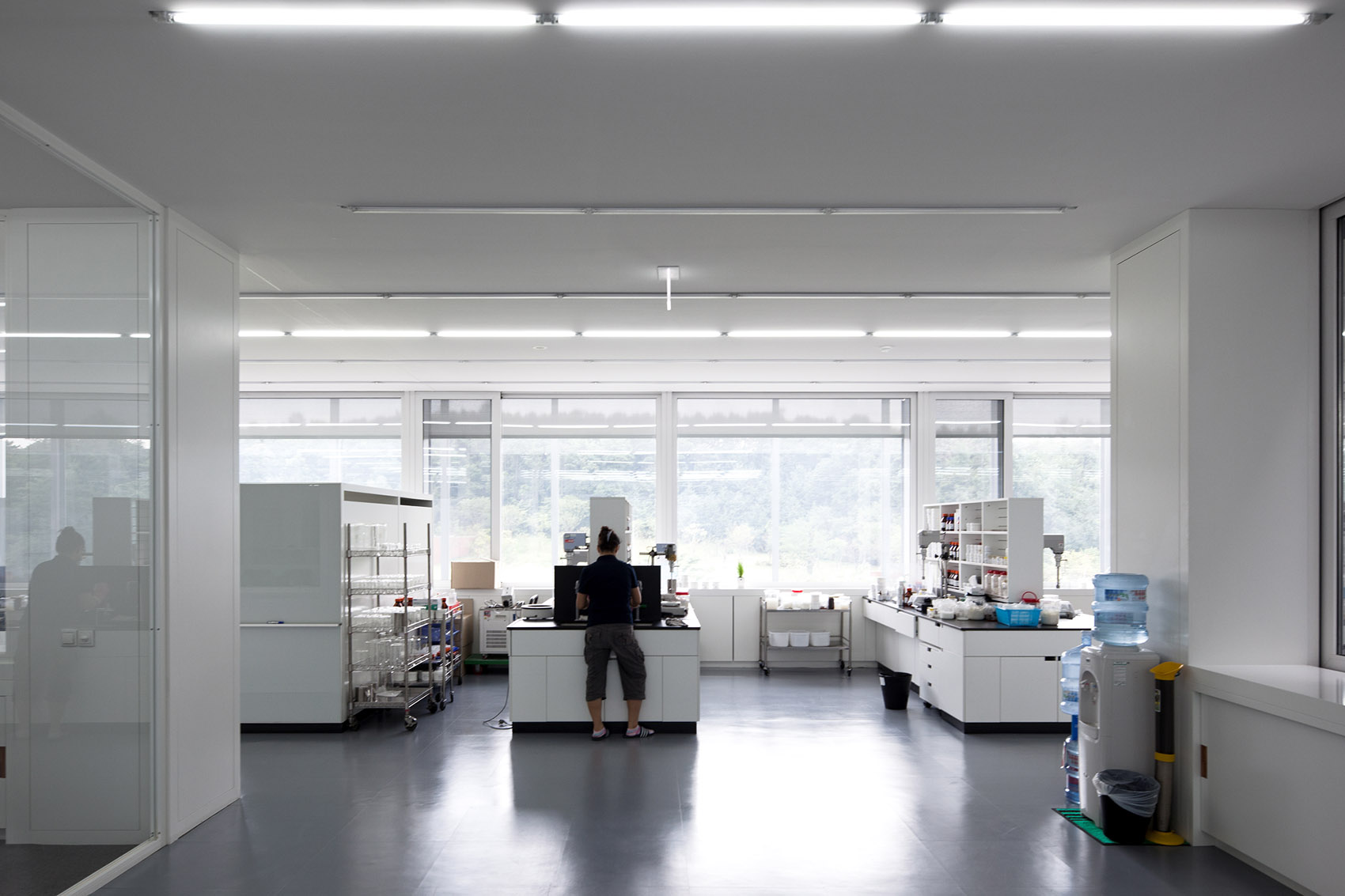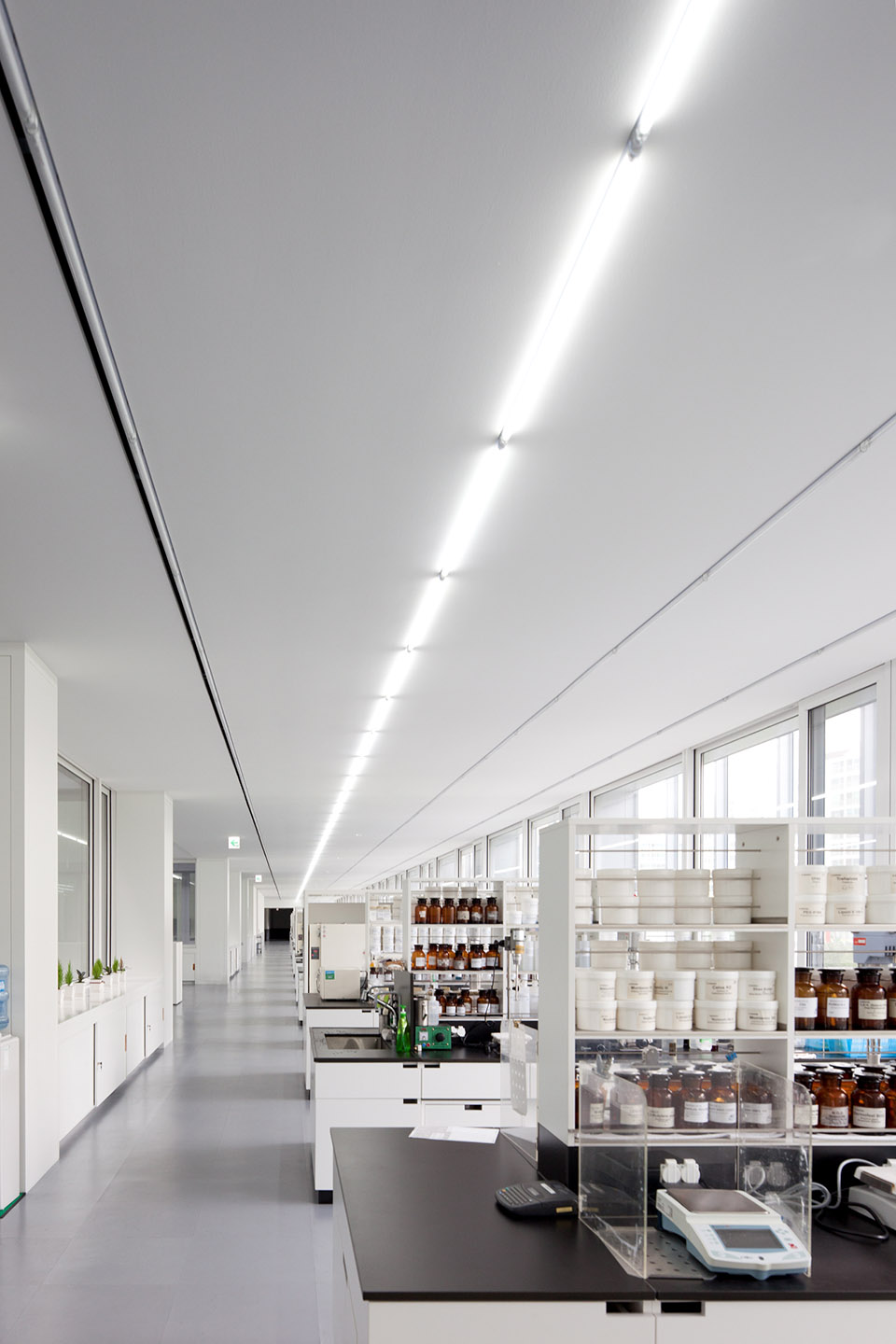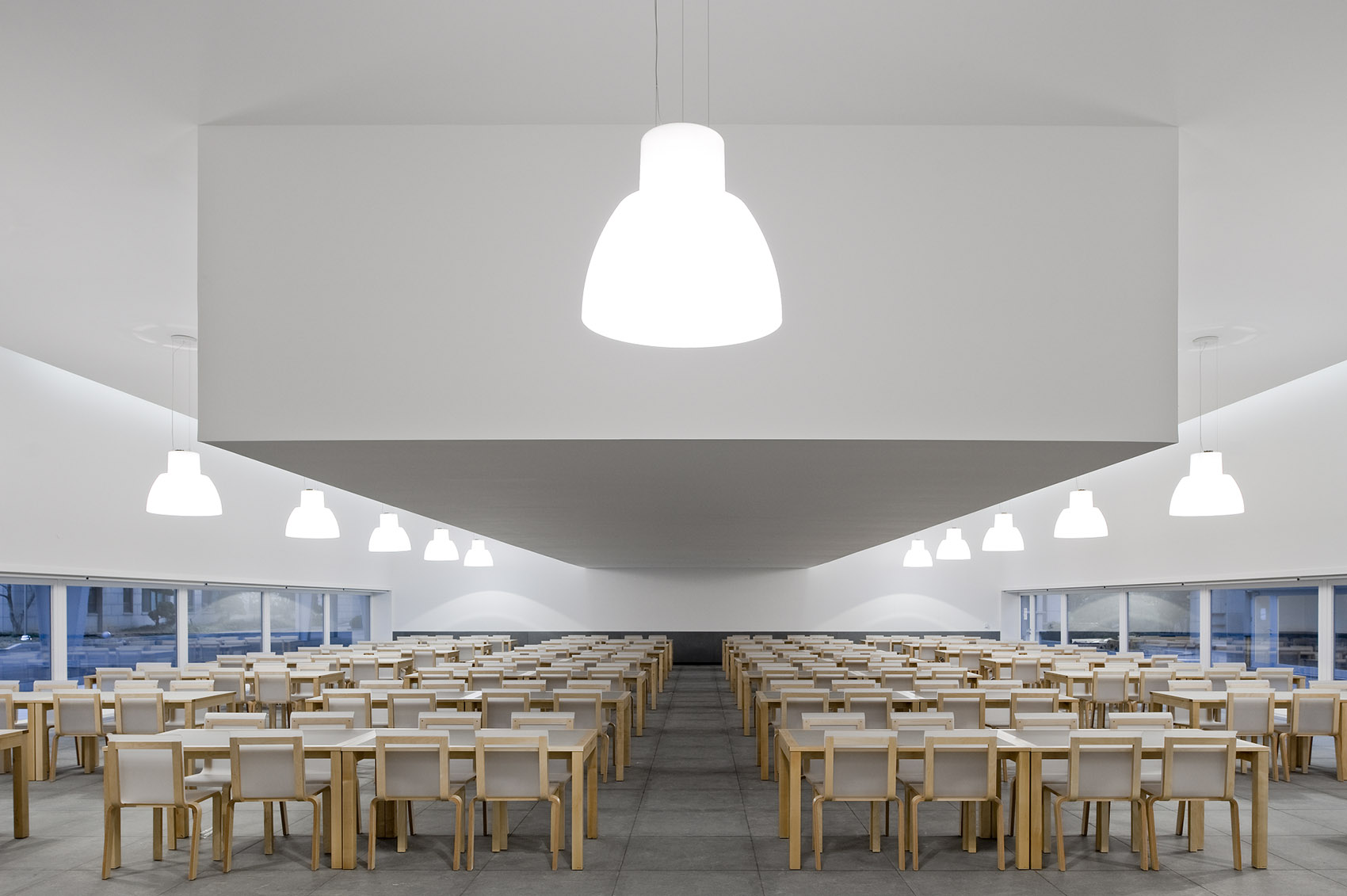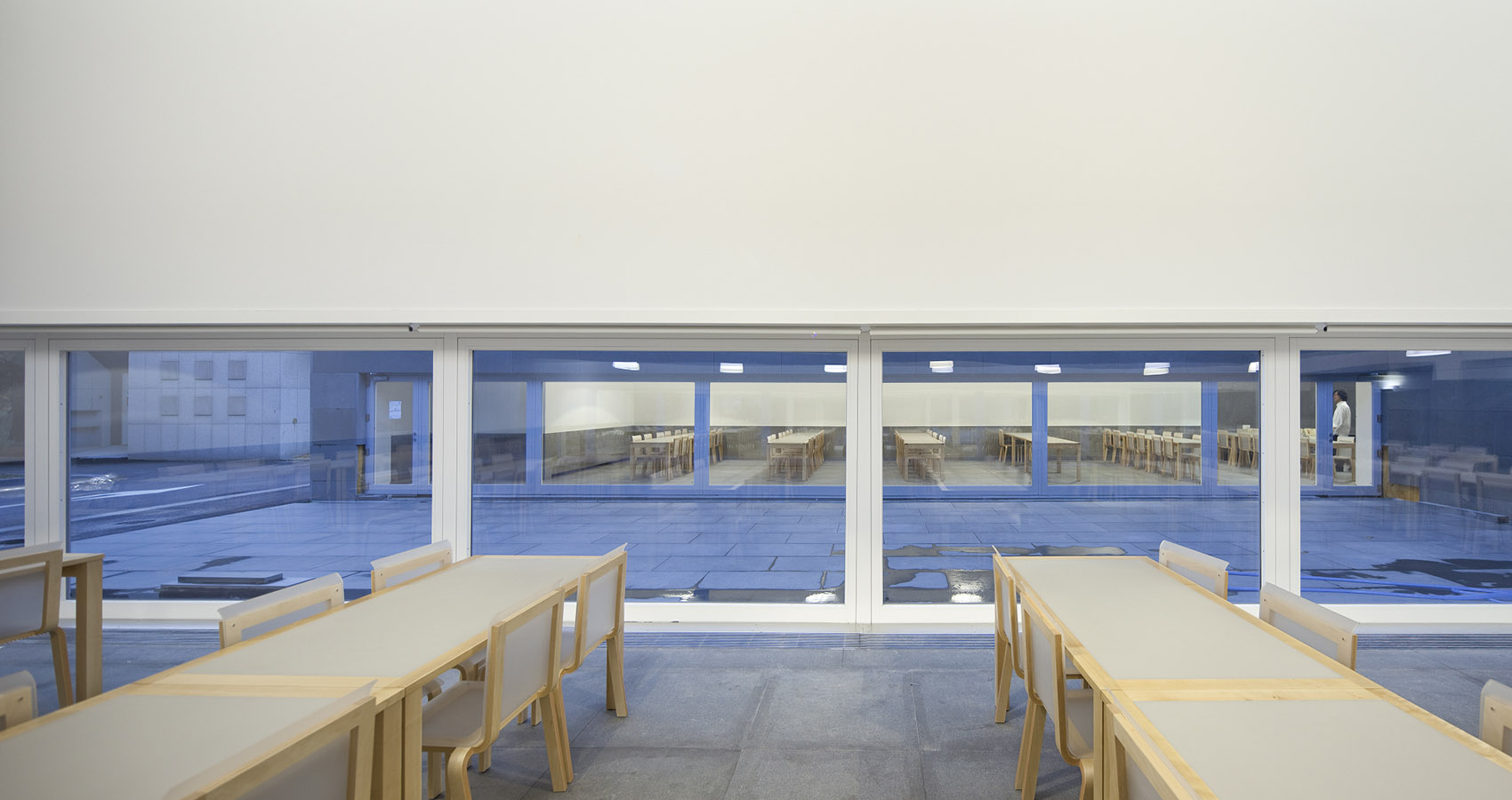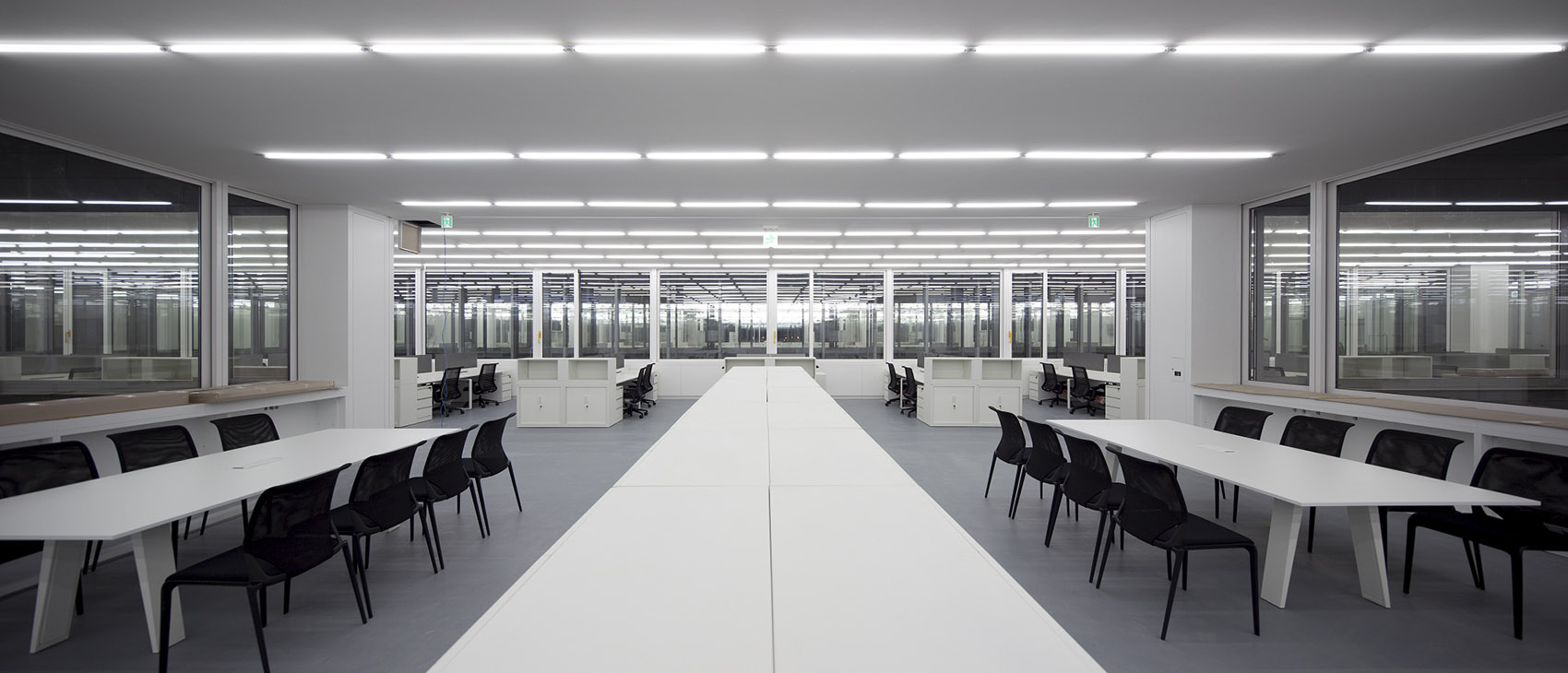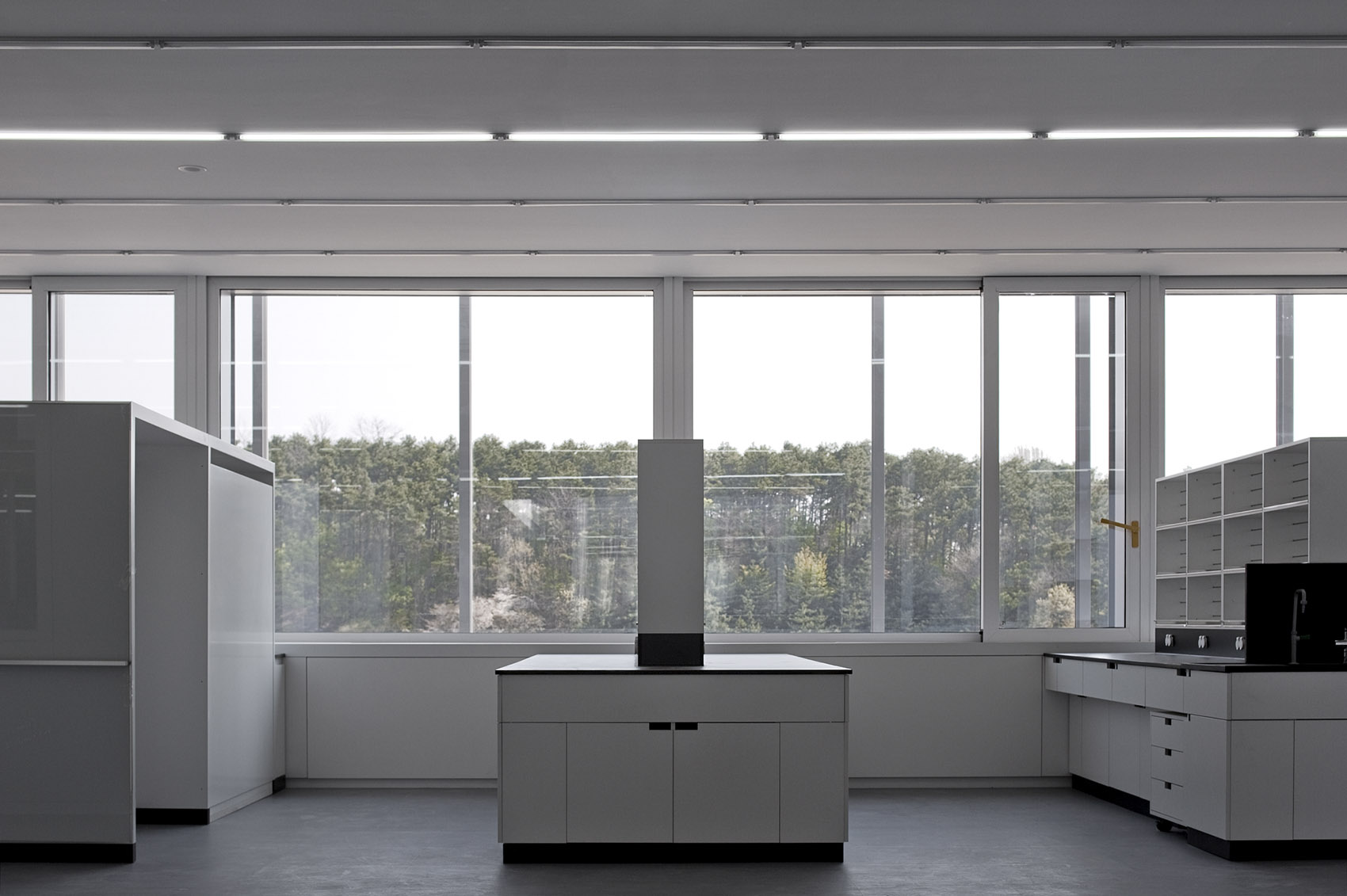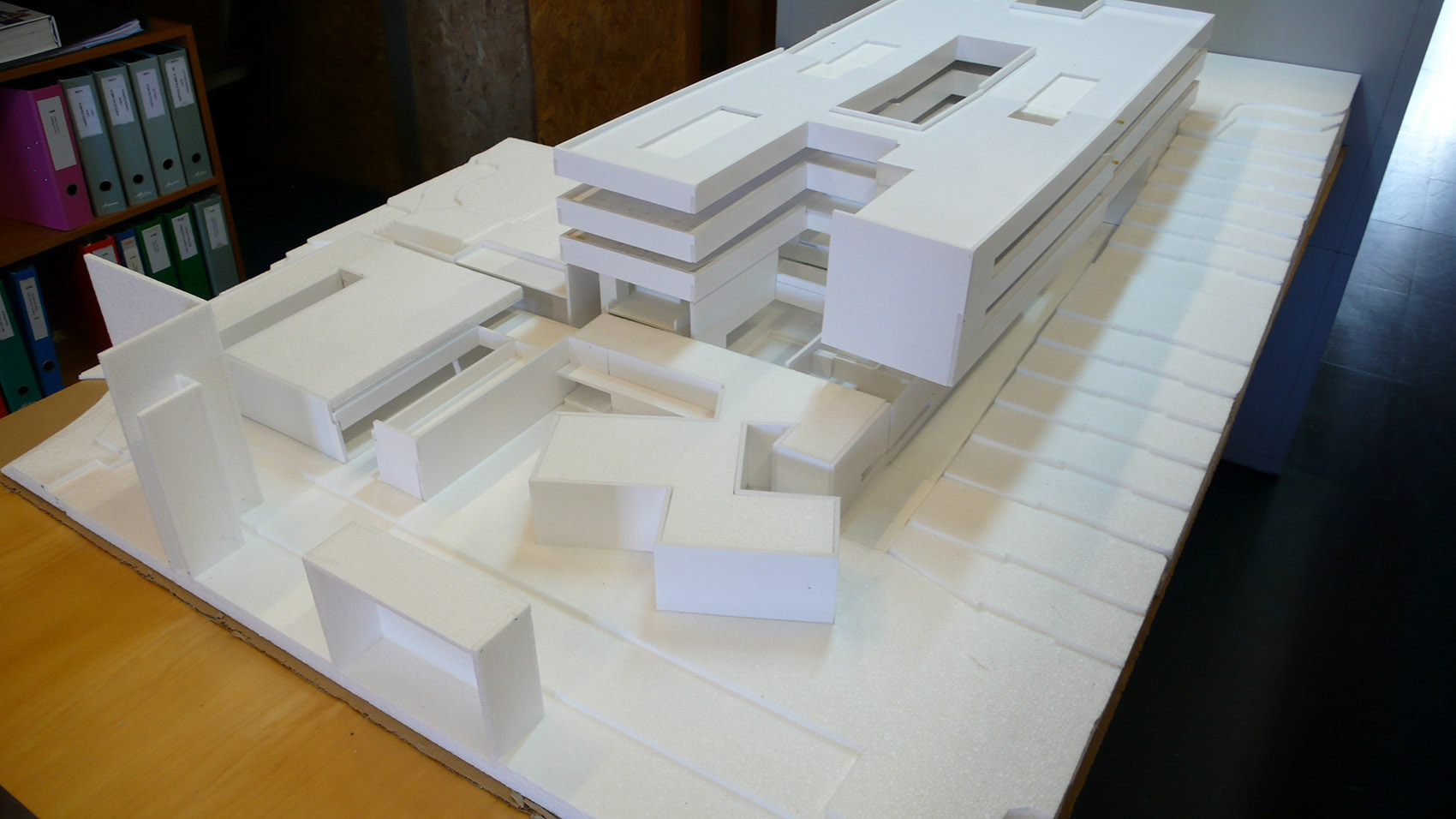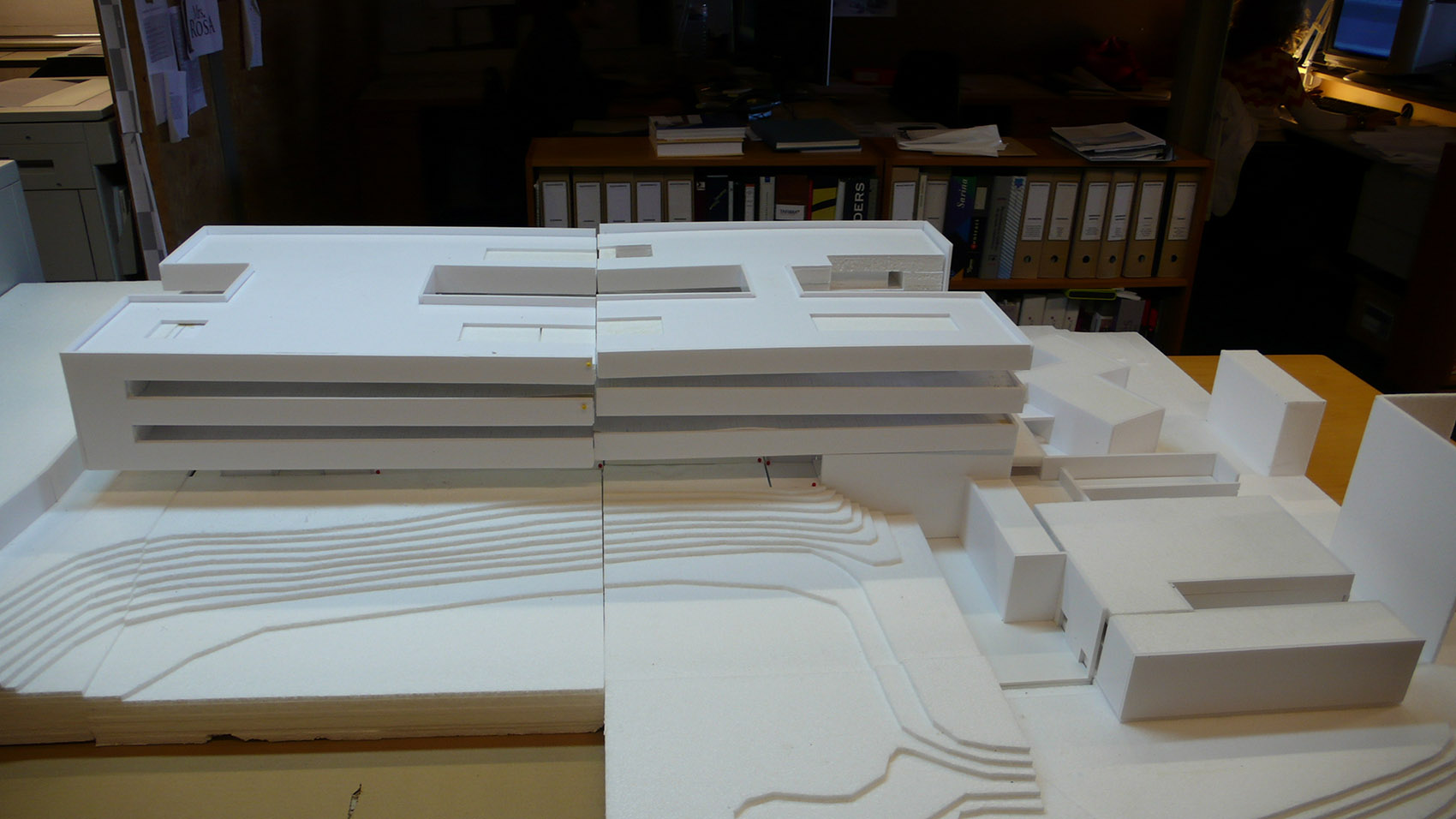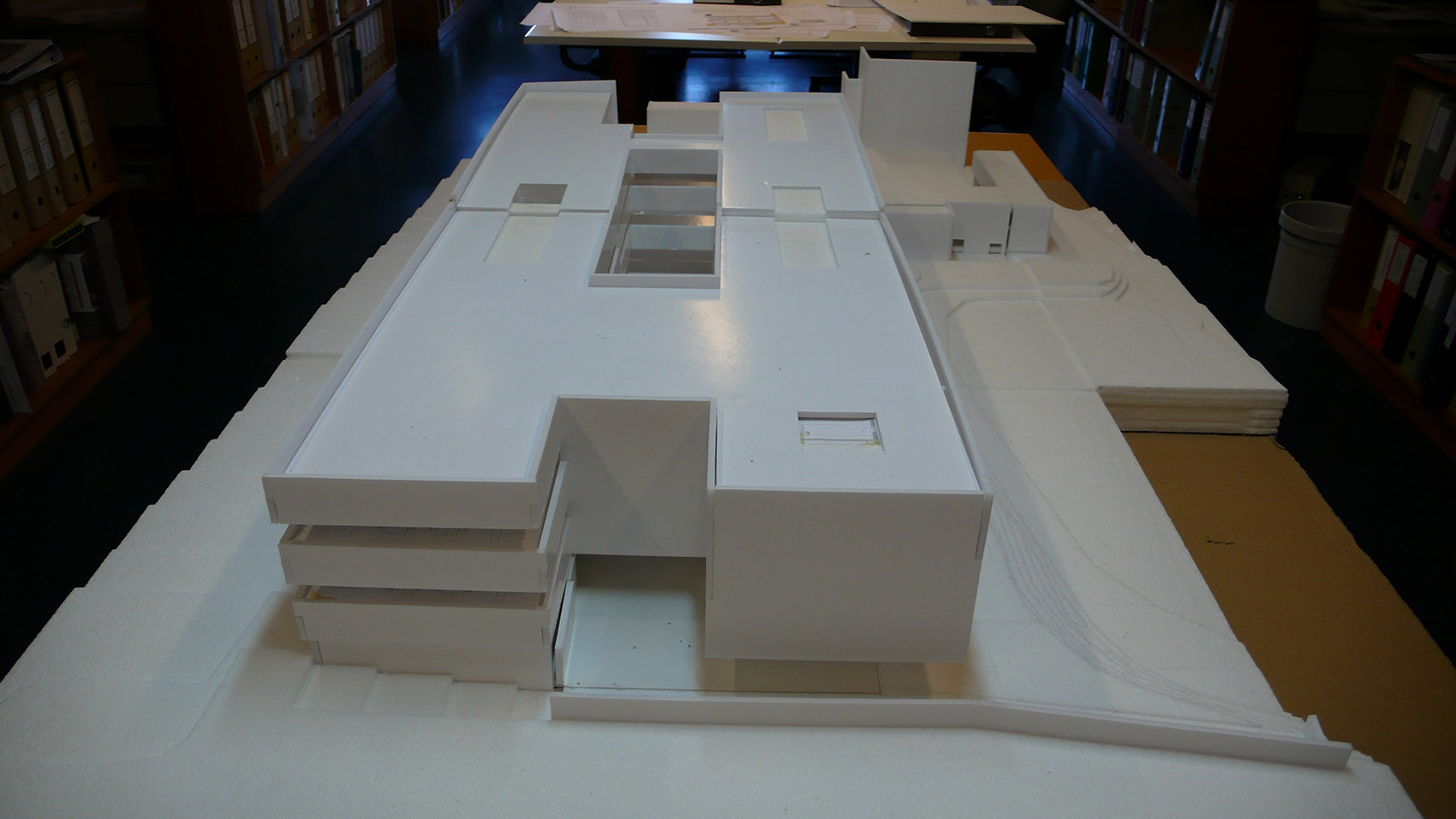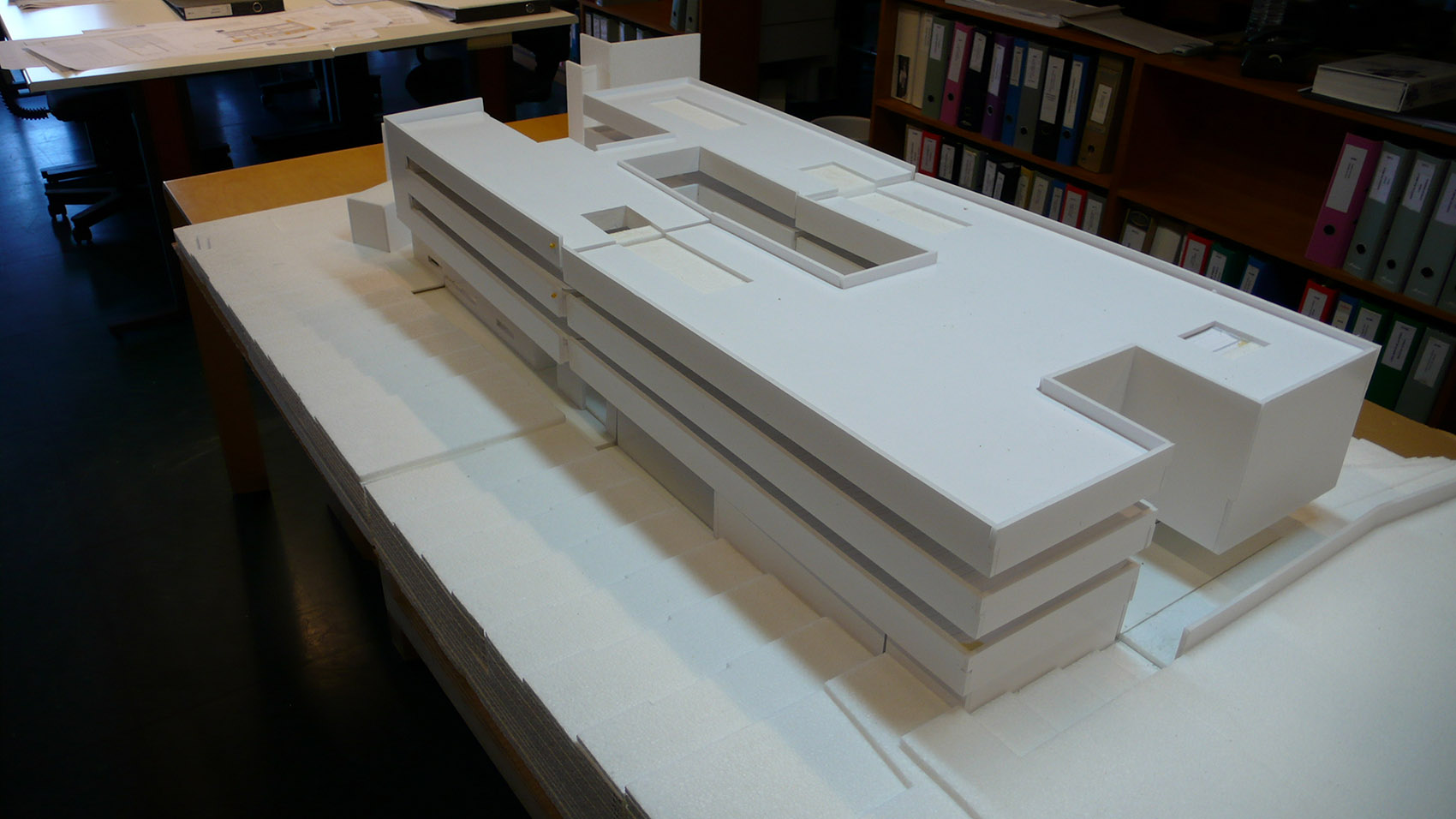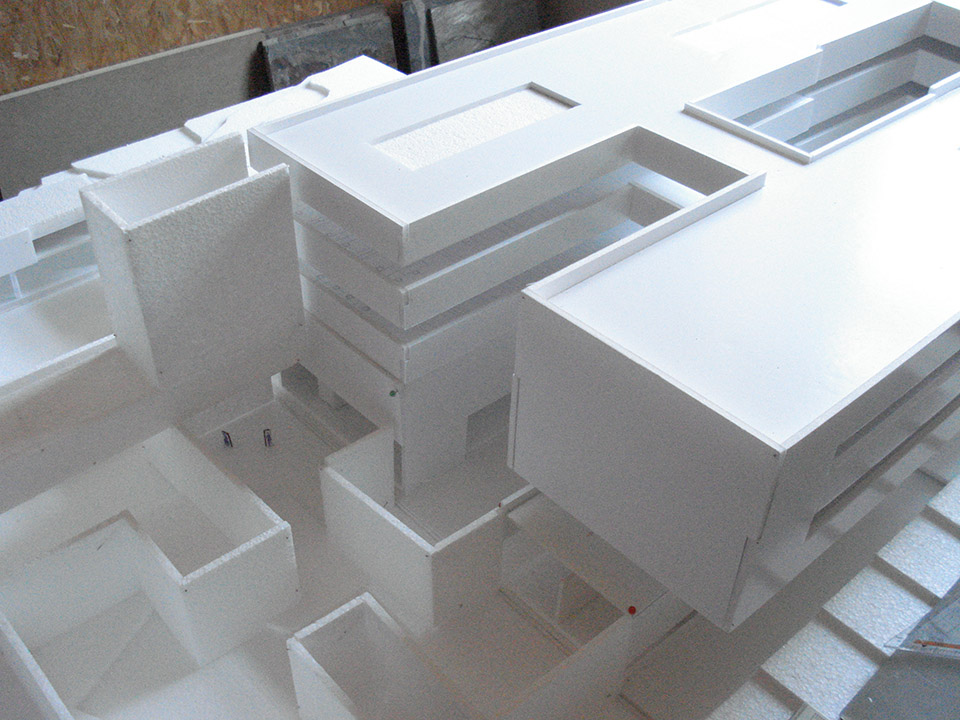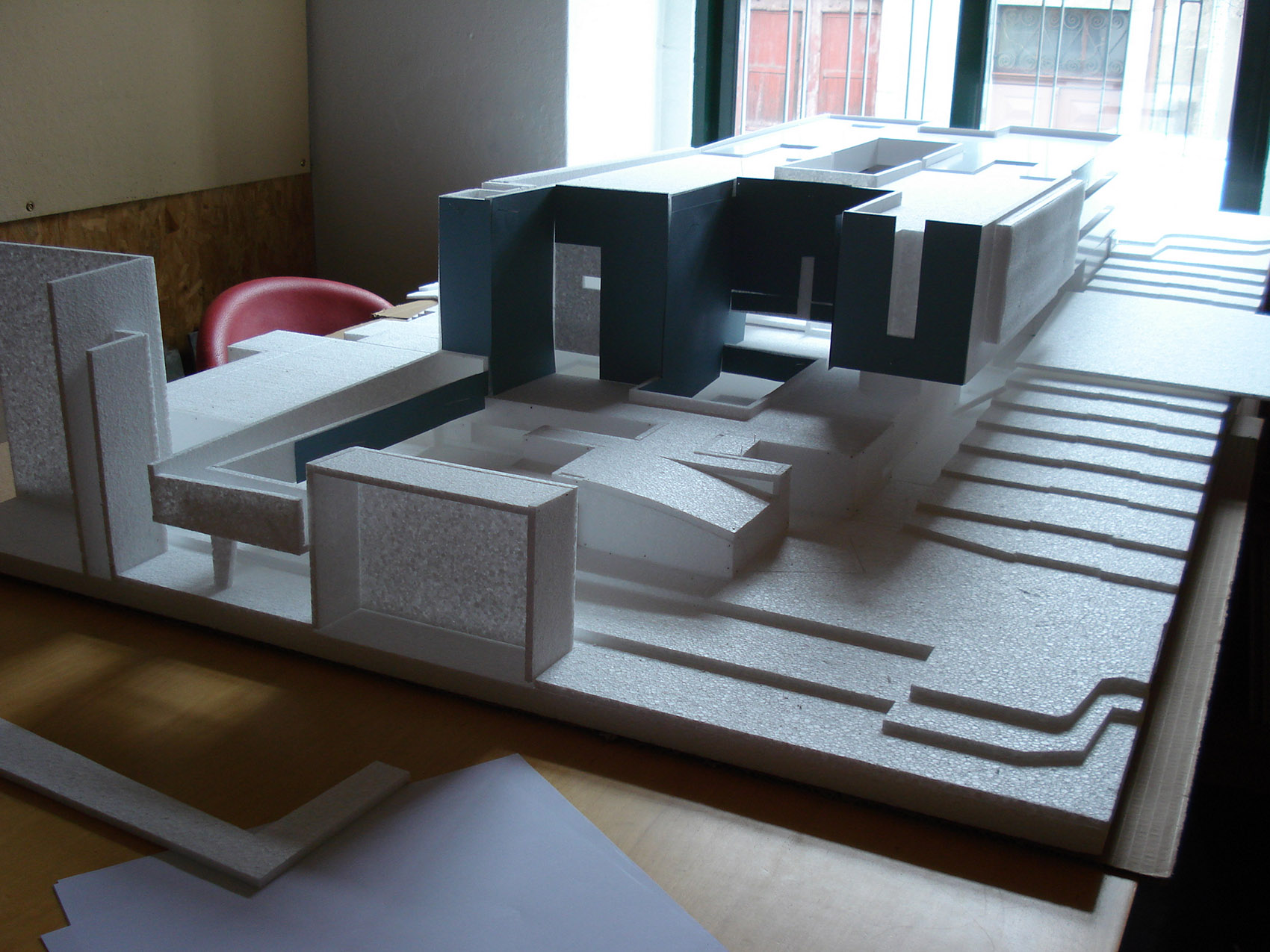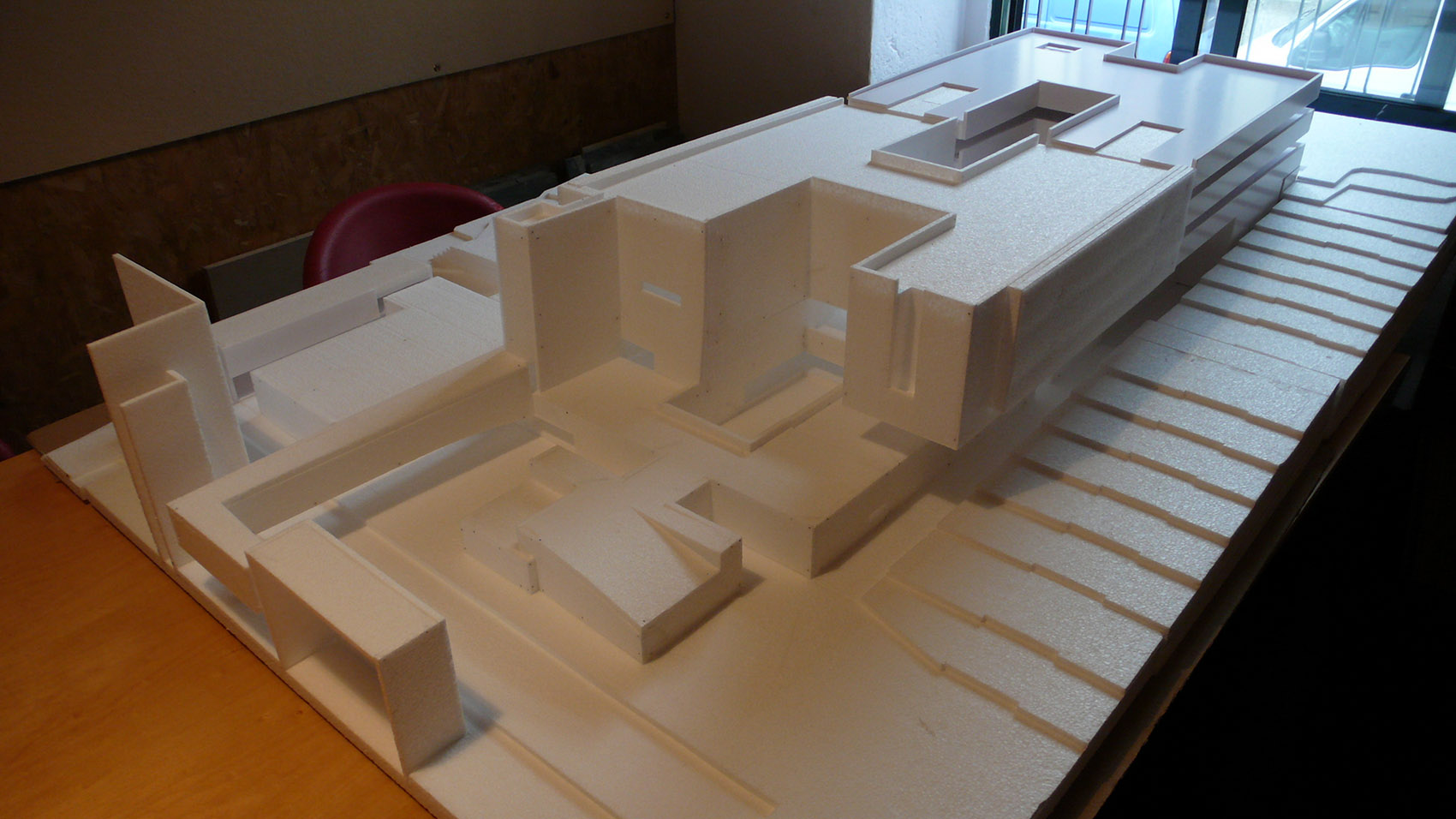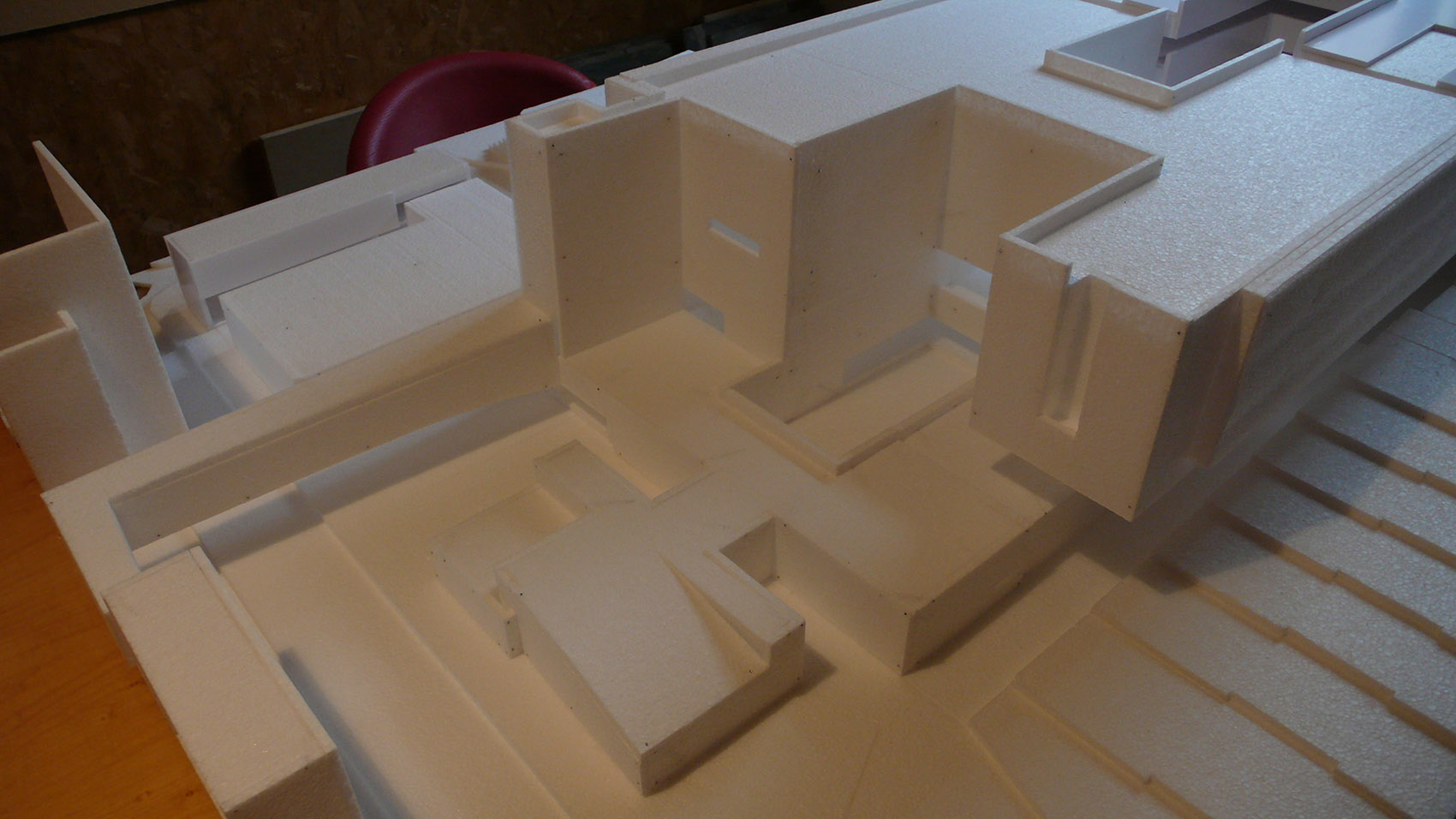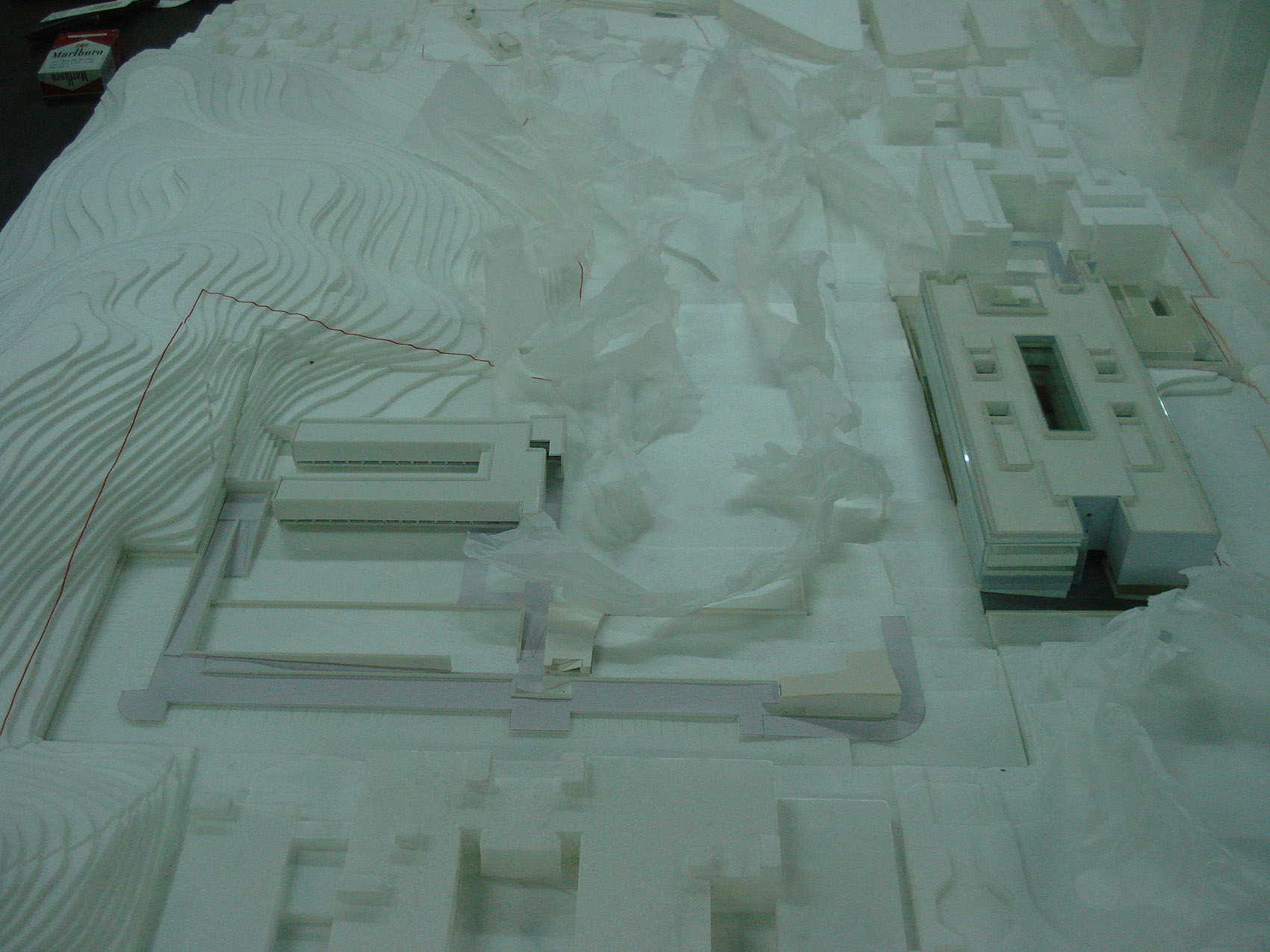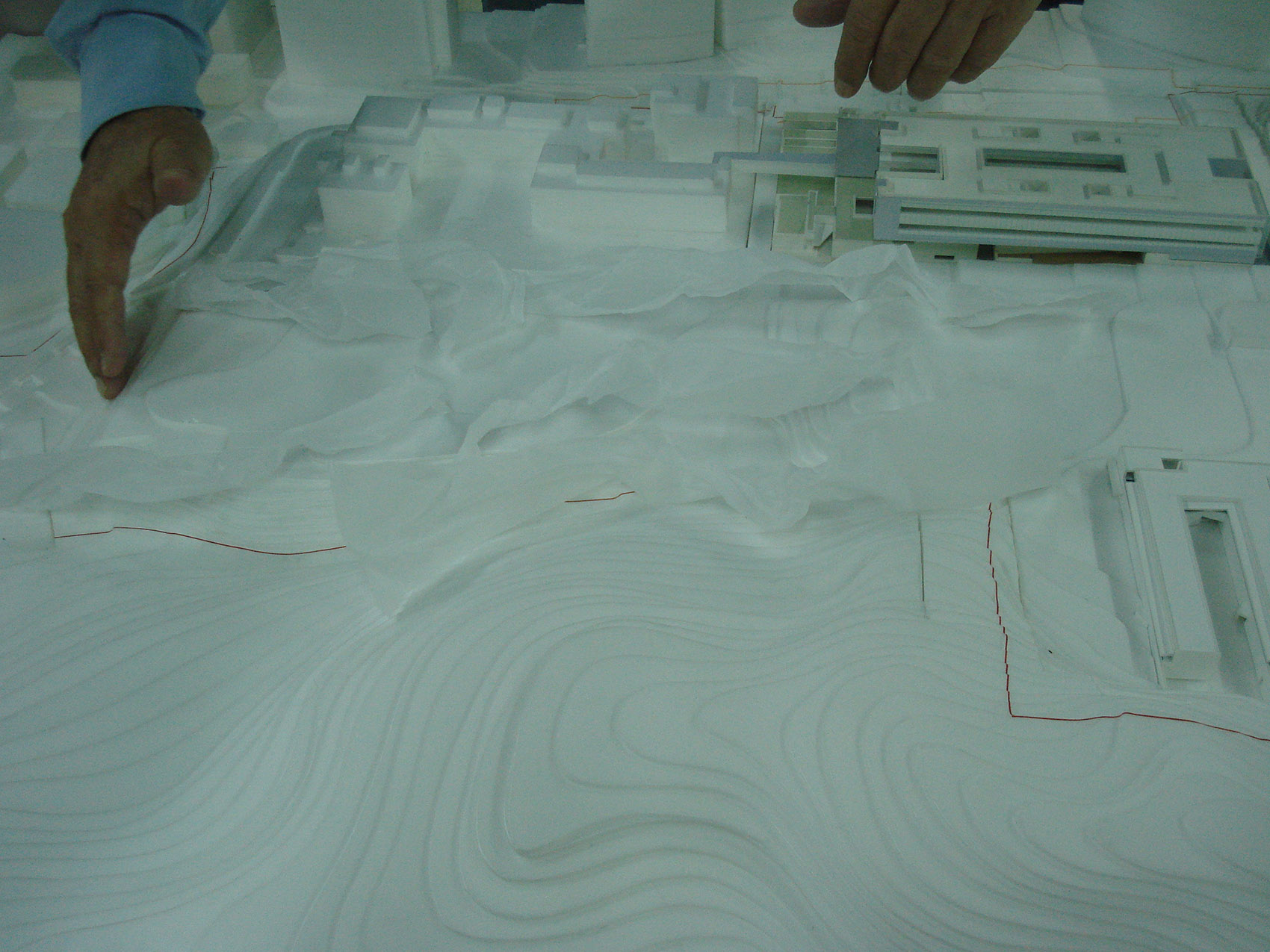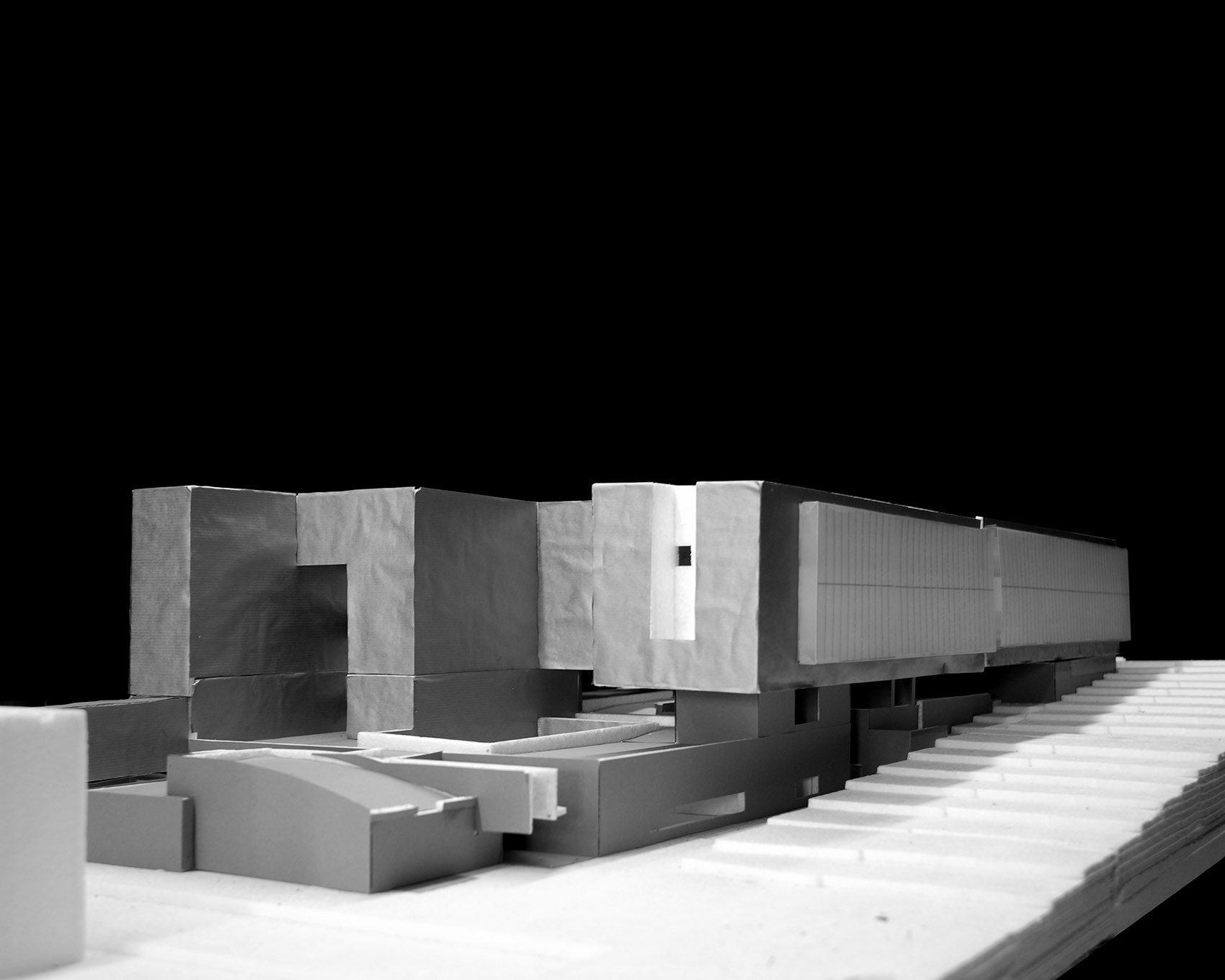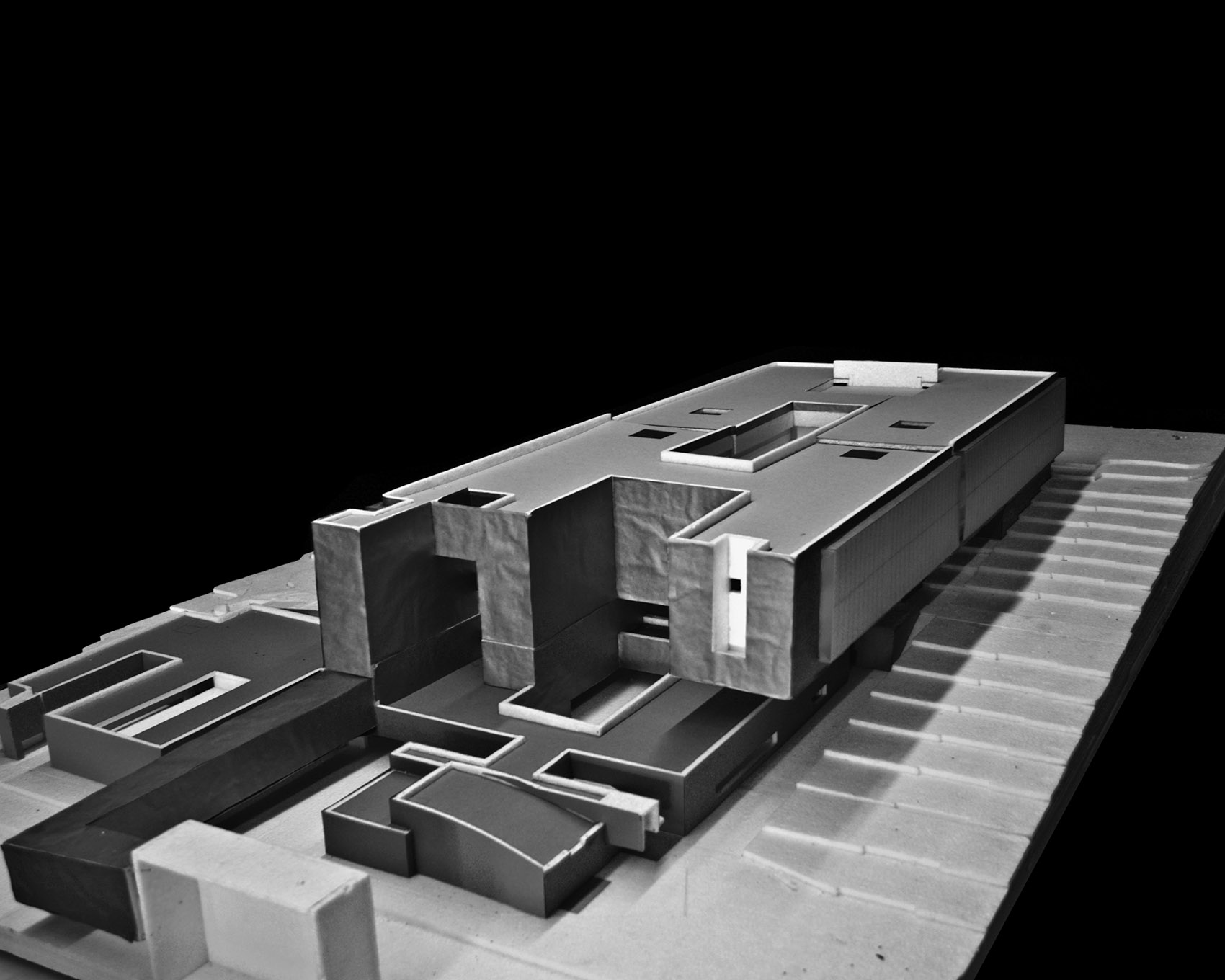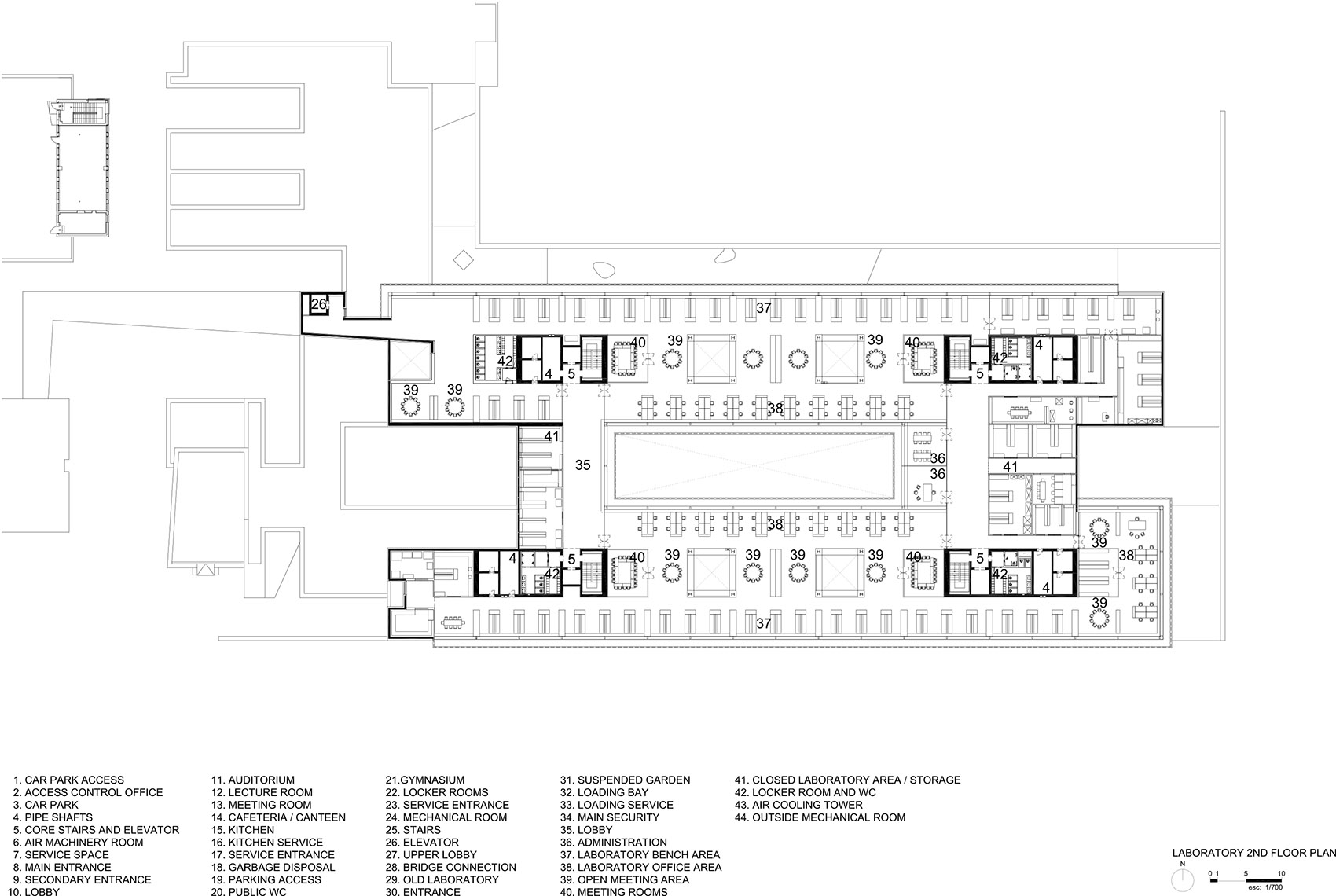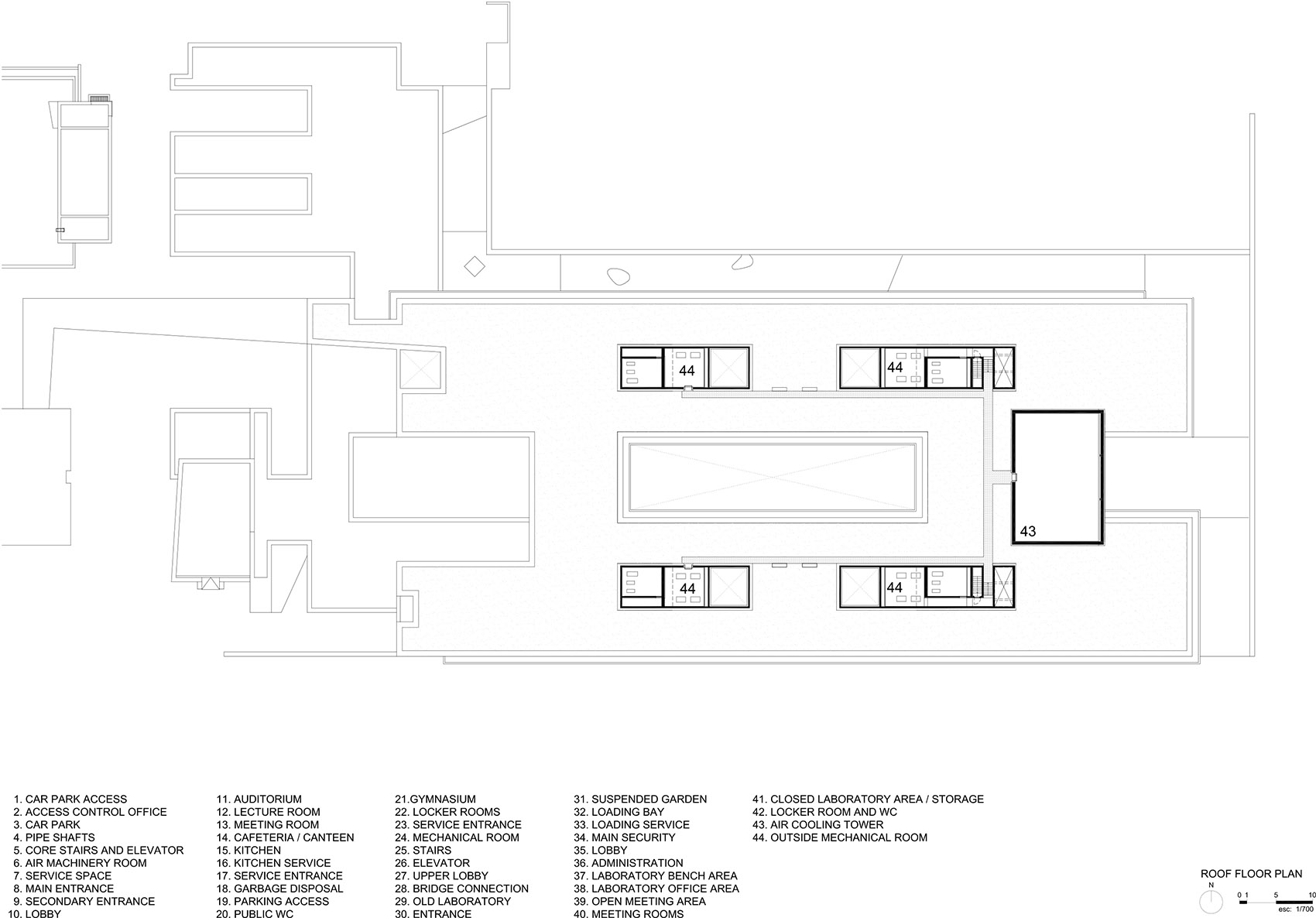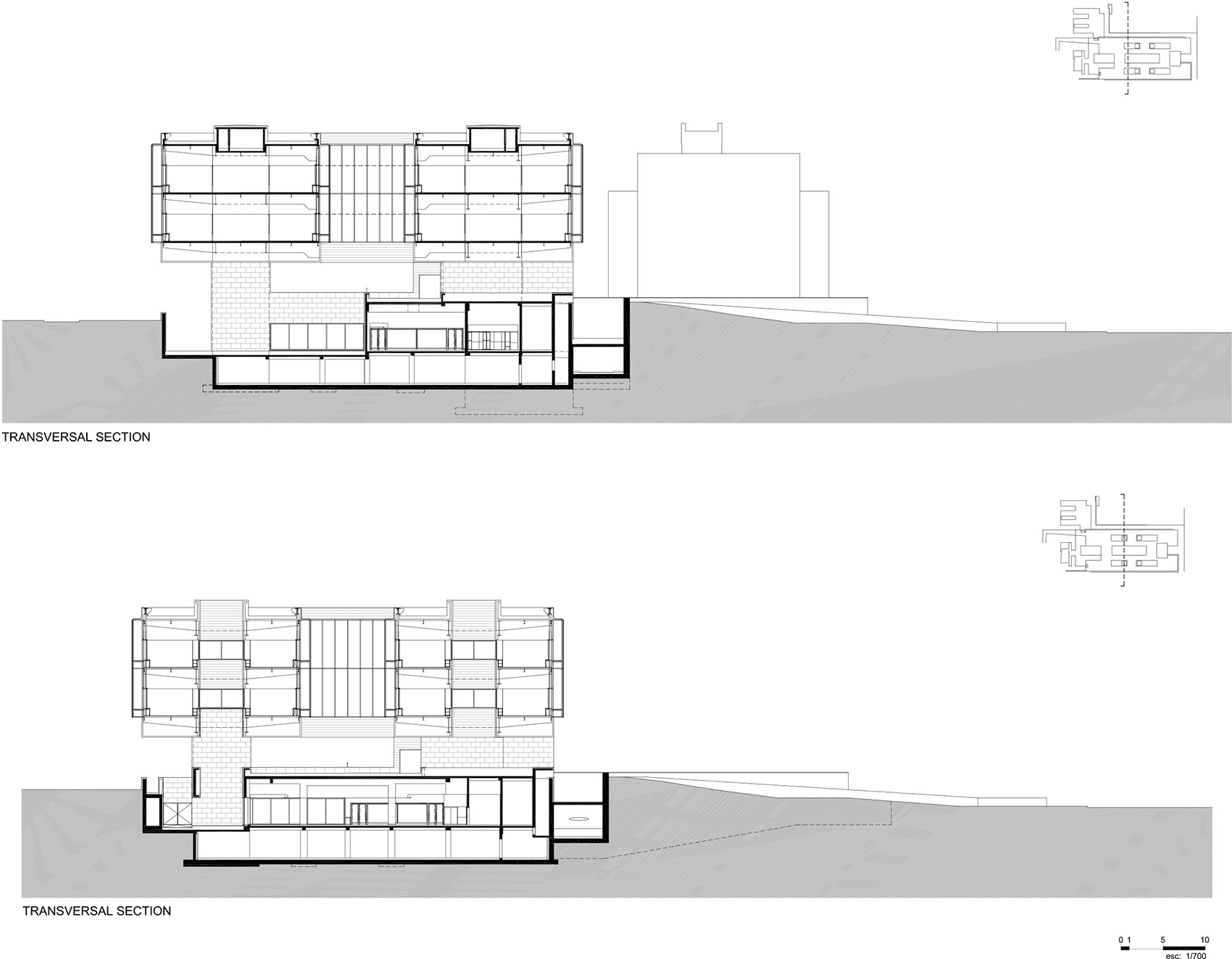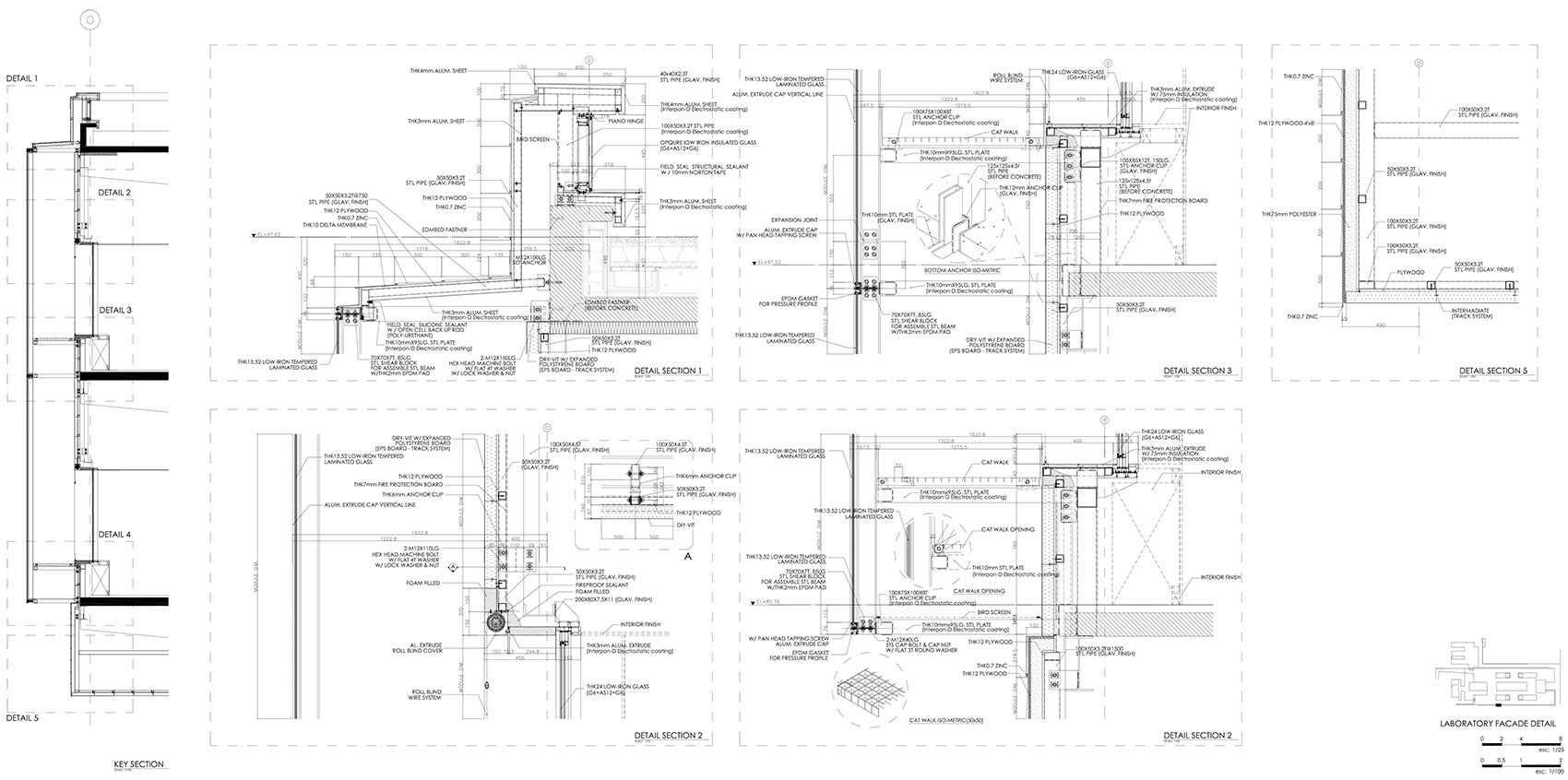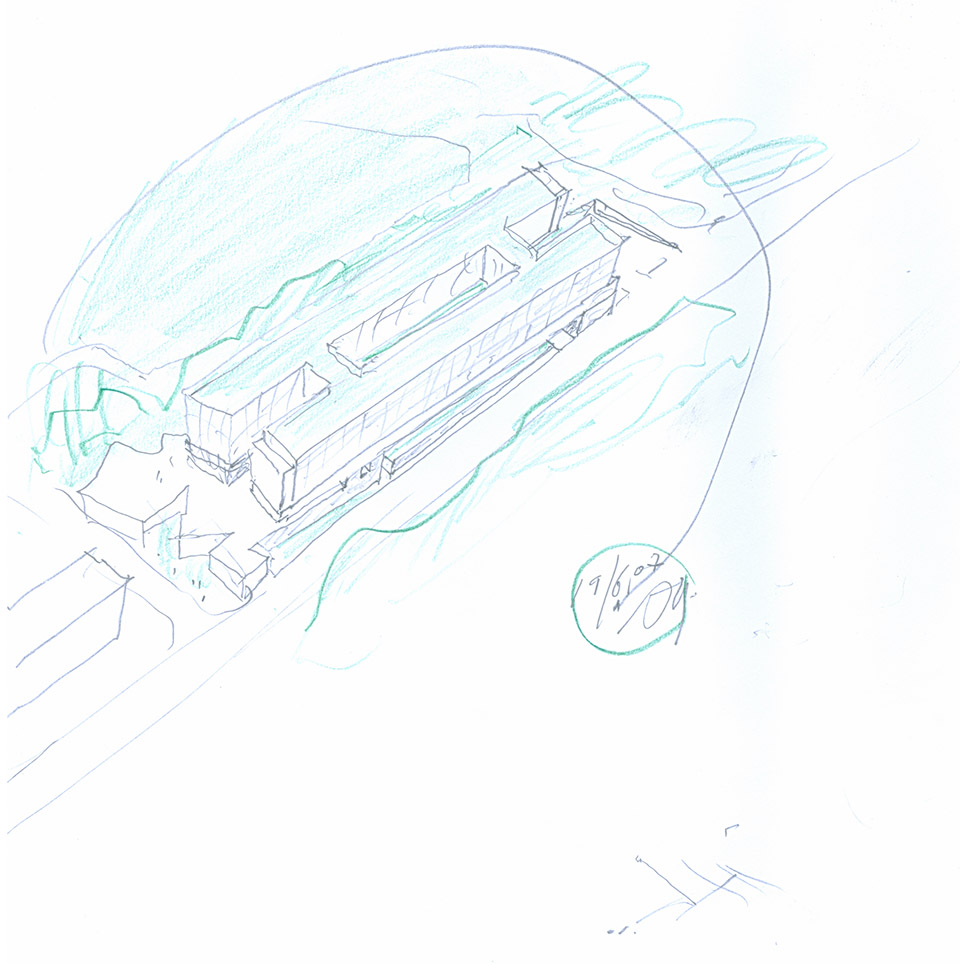Amore Pacific是一个化妆品品牌,生产美容、修容、美白等产品,是高贵与美丽的象征,深受东方女性喜爱。其知名使用者gaja,便以她白净的外貌、迷人的魅力和音乐能力成为了大众崇拜和渴望的对象。该化妆品公司由现任老板的祖母创办,曾经涵盖了所有与妇女幸福生活相关的产品,包括化妆品、衣物、饰品、乃至茶道用具等。如今,公司不仅有着巨大的产量,还十分关注产品的品质和美观,认为数量也是质量,体现国家的价值和利益。
Amore Pacific is a brand of cosmetics, products used in industrial quantities by oriental women to enhance their beauty, hide imperfections or to deepen the whiteness of their skin, a sign of nobility and beauty, like the gaja* whose white features, charm and musical sensibility turned her into an object of cult and desire. Initiated by his grandmother, the cosmetics company had almost by chance begun to collect items related to the wellbeing of women. Cosmetic items, clothing items, decorative items as well as items relating to the tea ceremony. Today, the collection is immense, as are also the quality and the beauty of most of the items. Items of national value and interest, concerning things for which quantity also is quality.
▼概览,overall view ©FERNANDO GUERRA

品牌老板曾去葡萄牙考察西扎的作品,成为了邀请这位建筑大师在韩国设计项目的契机。当时,业主的计划是请西扎设计一座博物馆,为此他们参观了许多场所。
业主希望将博物馆建在首尔市中心,随之又在这个寸土寸金的地方买下了越来越多的土地,等待第一个项目从图纸变成现实。
The first introduction that resulted in work in Korea, (the southern half, that is, since for many Koreans there is only one Korea, temporarily subdivided), coincided with the visit to Portugal by the owner of Amore Pacific, for the purpose of getting to know Álvaro Siza’s work. As I knew the architects who accompanied with him, it was my job to show them around. His intention was to formalise an invitation to design a museum.
Enthused, the client wants to locate the museum in the centre of the city of Seoul, and so purchases more and more land, something which is so scarce on those shores and expensive, very expensive. We wait and the first project has not yet got off the paper.
▼设计草图,design sketch ©Álvaro Siza
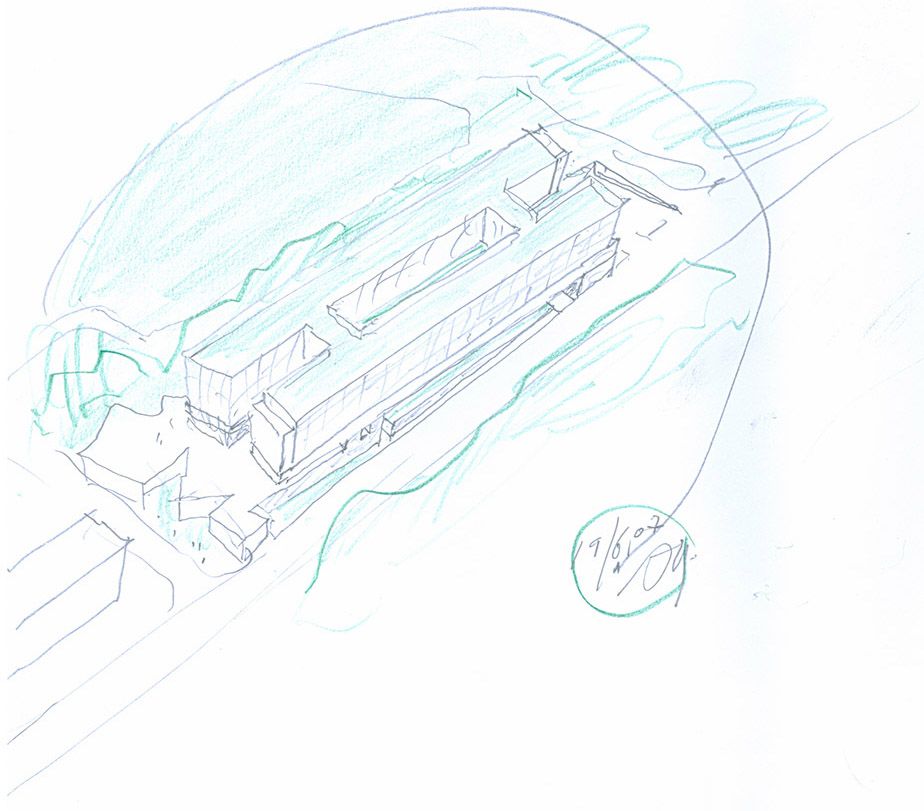
在距首尔四十分钟车程的龙仁市京畿道,Amore Pacific拥有一片广阔的地产,几乎可以称之为园区。这里设置了公司的研发中心和训练部门。调研实验室集中在一栋巨大的灰色花岗岩建筑中。建筑经过了多次加建和改造,急需一次整体上的翻新。另一栋深色砖楼中设有全部员工培训设施和一个临时博物馆,只能展示很小一部分产品,其余不断增加的产品只能被弃置在地下的储藏室中。一栋小楼孤零零地待在场地东北处的角落中,为远道来参加培训或研究的人提供住宿。
Forty minutes drive from Seoul, in the outlying city of Yongin-si, Gyeonggi-do, Amore Pacific has a very large estate, which I like to call a campus, as that is what it seems like. In this campus are gathered the R&D – Research and Development, and the training departments. There is a large grey granite building, where the research and investigation laboratories are concentrated. This building is the result of various additions and adaptations. And now it urgently needs major restructuring. In another dark brick building are all the staff training facilities and the improvised museum, displaying only a small part of the collection. The rest of the ever-expanding collection is in storage, in the basement. Another small building, which is isolated, as if pushed into a corner, to the northeast, serves as accommodation for anyone who comes here from a distance to do training or research.
▼设计草图,design sketch ©Álvaro Siza

项目的外围区域种满了树木和灌木,为业主特意购买或从其他地方移植而来。在韩国,从东方印刷品中常见的雕塑一般的巨松,到颜色丰富的名贵枫树,所有植物都可以移栽。这些植物被种成几组,树木与厚重的竹条相连,根茎交缠、相互支撑,如同艺术装置一般。巨大的运动场被改成了健康俱乐部。
The exterior area is characterised by a huge collection of trees and shrubs that the client buys or transplants here from elsewhere. In Korea everything gets transplanted. From the huge, sculptural pine tree, that we are used to seeing in oriental prints, to the most subtle maples in varying colours. The transplants, set in groups, seem more like art installations: the trees linked together with thick bamboo canes, supporting each other until they develop roots. The huge sports fields that still give sense to the maxima mens sana in corpore sano, are now abandoned in preference for the health club.
▼园区由树木环绕,the campus is surrounded by trees ©FERNANDO GUERRA
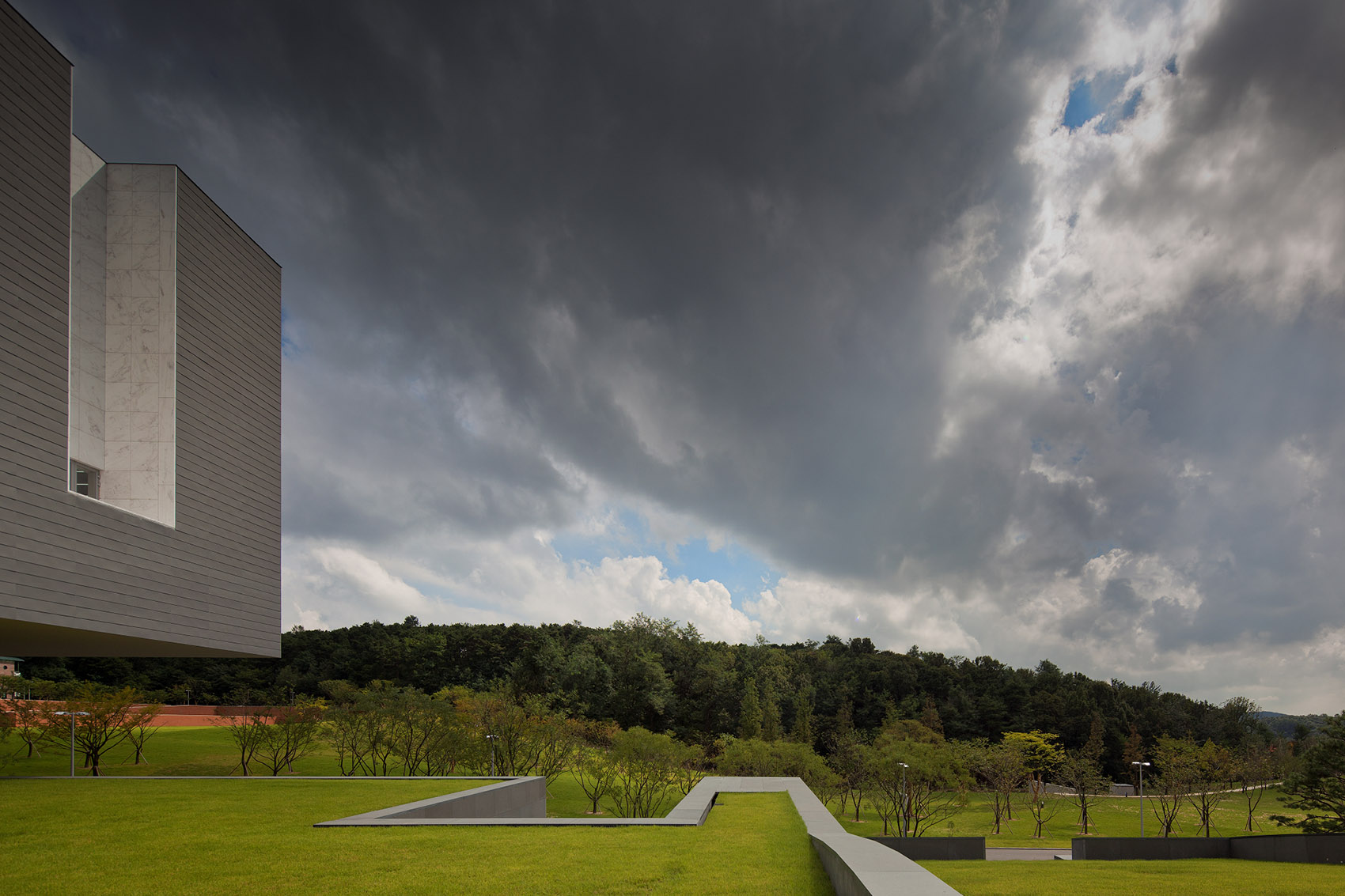
▼建筑庭院中移栽的树木,trees transplanted in the architecture courtyard ©FERNANDO GUERRA
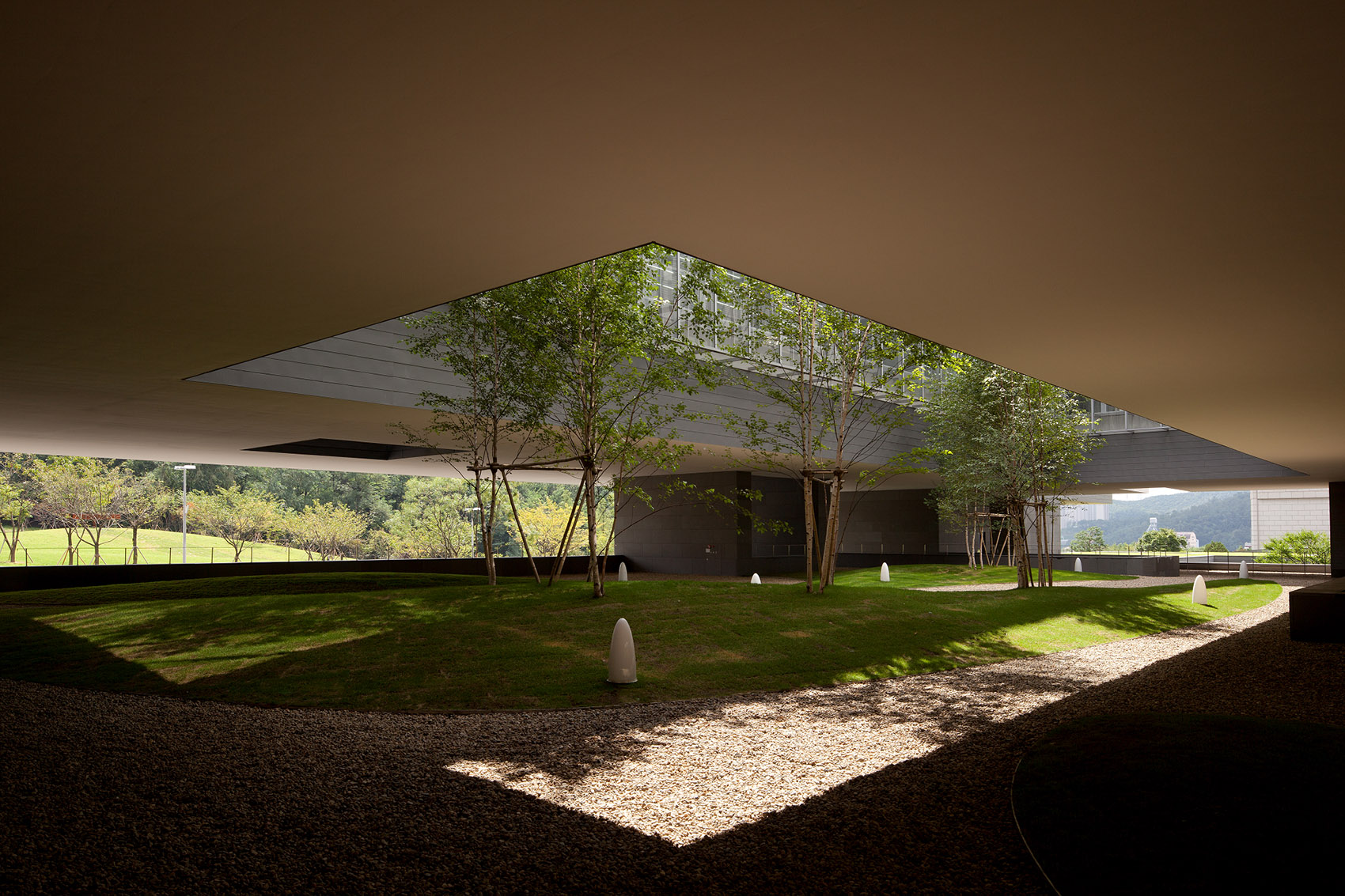

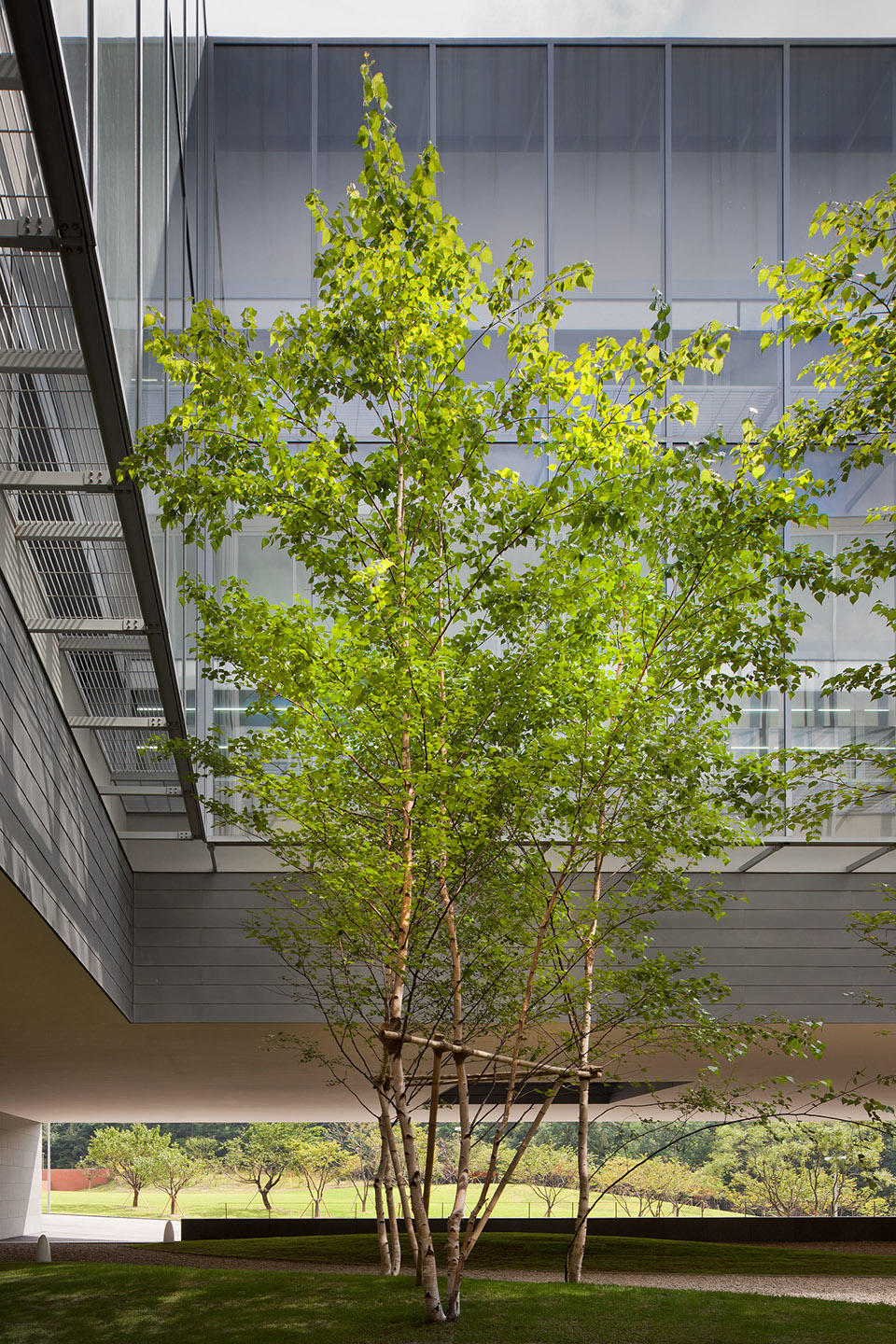
项目开始的时候,实验室被设在了原有建筑旁边,方便大部分功能转移,并且可以重复利用老旧设备。而在正常可预测的扩建过程中,则必须考虑为更多实验室建造一栋新楼的短期需要。之后建造的是将不同建筑和功能连接起来的多用途展馆,以及外部接待空间等。最后是供私人使用的酒店,取代现有建筑,为客人提供更有尊严的接待和服务。设计初期汇报后,业主要求增设一栋新的建筑,即后来的二号楼。
门楼是园区和公司的门面,设计师自然而然地对其进行了重新考量。鉴于新旧建筑之间有着明显差异,室外空间也得到了重新规划。园区究竟是建筑为主,外部空间为辅,还是反过来?这也是设计需要思考的问题。
At the start of the project the Laboratory was envisaged in the space next to the existing one, allowing most of the services to be moved and for the desired re-use of the old equipment. The short term need to include a new building for more laboratories would have to be considered, in the normal and predictable expansion process. Then came the Pavilion, a multi-use space linking buildings and functions. And the respective outside spaces, extensive, generous. Next came the hotel, exclusively for private use to substitute the existing buildings which didn’t provide for the dignified reception of guests. After the presentation of the sketch designs, another pavilion was requested. So, Pavilion II appeared.
While we are at it, it would be convenient to re-think the Gate House as it is the front of the Campus, of the Company. And why not re-think the outside spaces, now that the relationship between the existing buildings and the planned ones has become so obvious? A Campus is actually this, a relationship between buildings, where the external spaces act as a support. Or is it the other way around?
▼模型,model ©Álvaro Siza

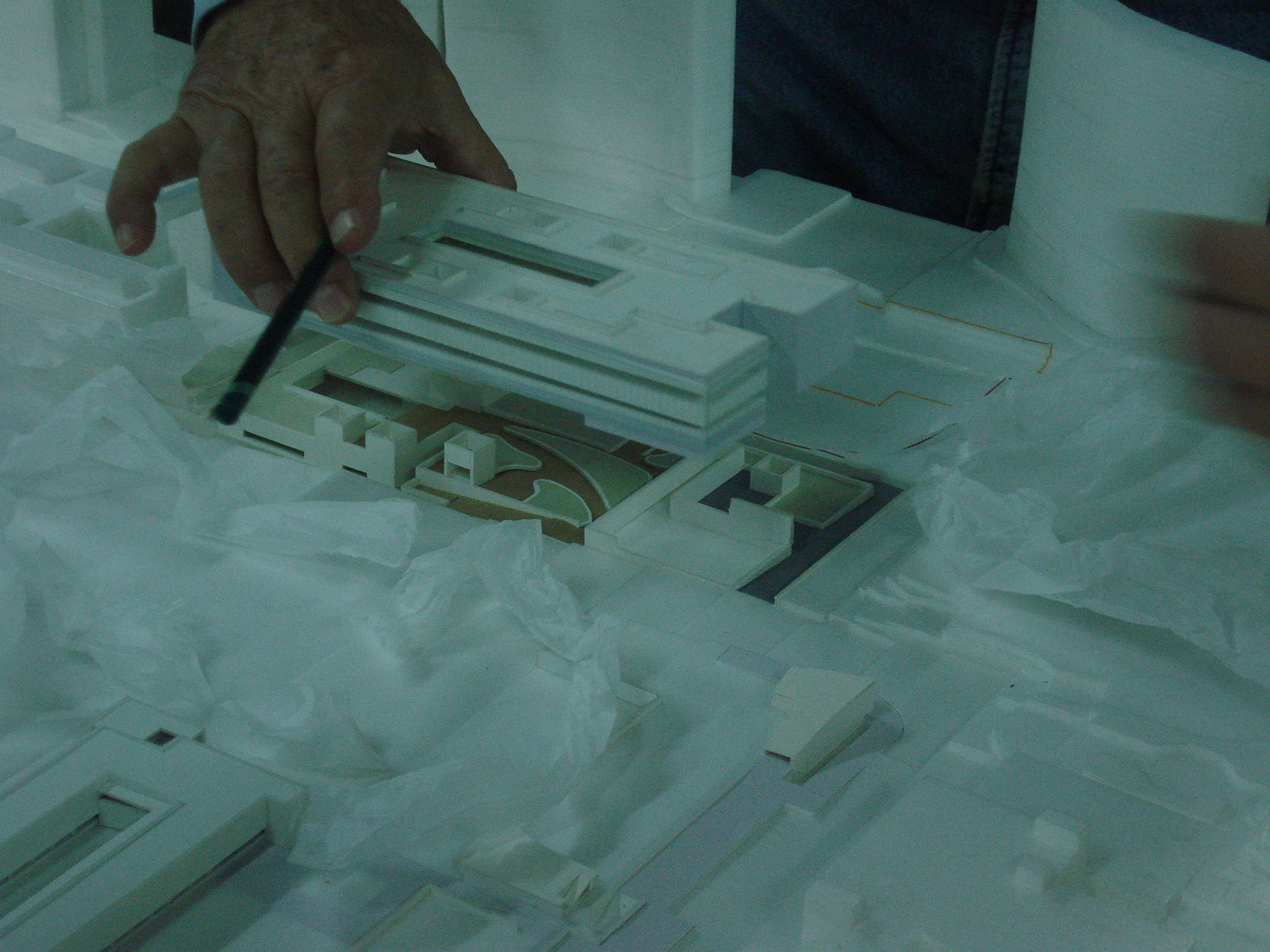
根据业主的要求,建筑师设计了一栋巨大的实验楼。停车场位于地下,社交和技术区域位于半地下。地上两层设置研究和工作空间,以保证空间之间的衔接和视野畅通。
The laboratory building is big because the brief was big. Parking in the basement. Social and technical areas in the semi-basement. Research and work areas in two floors that are raised above the ground in order to maintain the relationship of spaces and views.
▼实验楼外观,external view of the Research and Design Center ©FERNANDO GUERRA
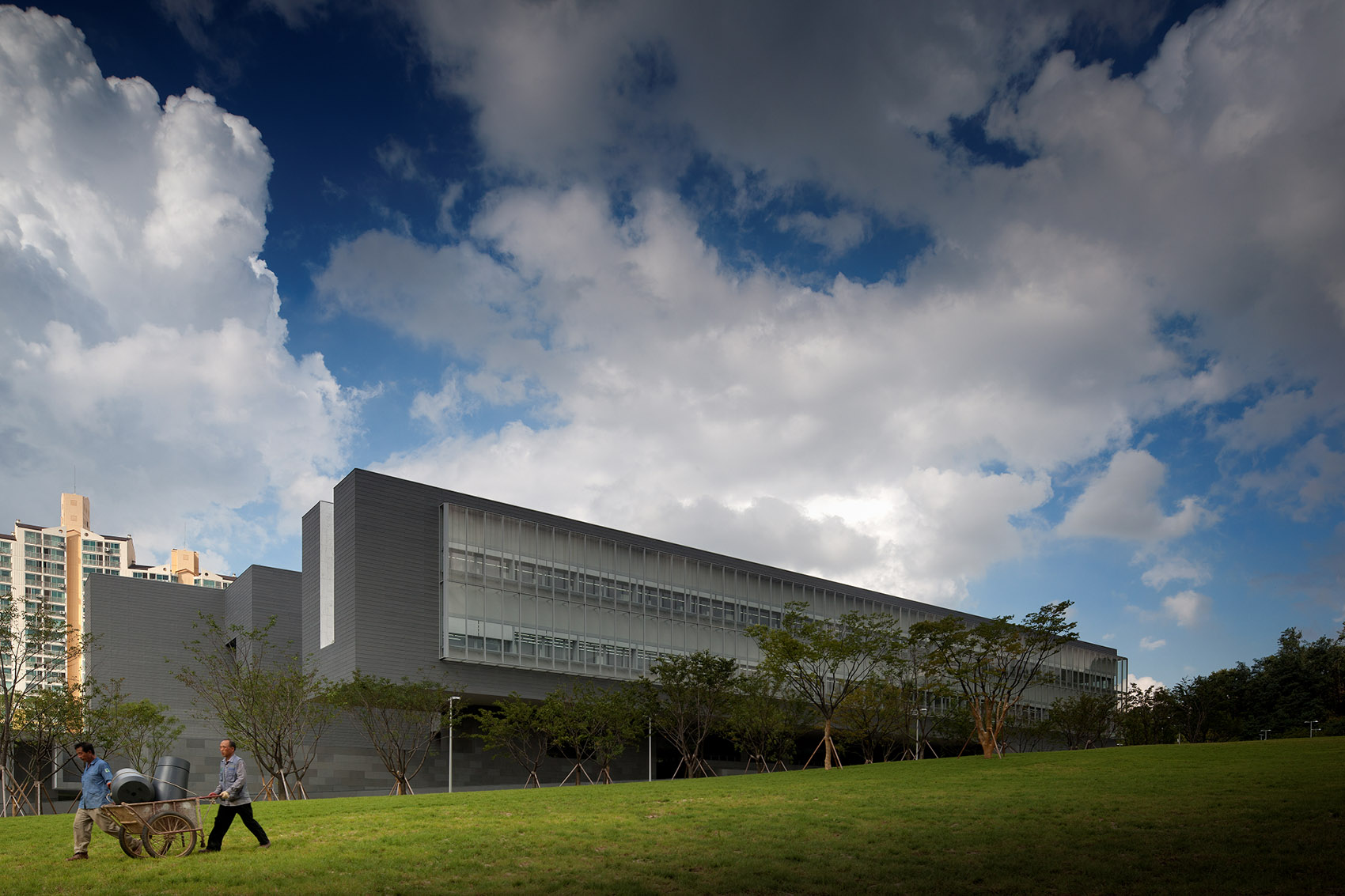
作为基座的建筑表面覆以略显粗糙的黑色花岗岩板。上方为一片部分绿化的露台,不同路径在此交汇又分离,一条通往地面,一条悬入空中。
The base; the building which forms the base is clad with slabs of slightly rough black granite. Over this building there is a partially landscaped terrace where the confluence of pathways and the separation of that which is on the ground and that which is suspended in cantilevers occurs.
▼花岗岩板覆盖的建筑基座,architectural base covered by granite panels ©FERNANDO GUERRA

▼露台上的巨大悬挑,large cantilevers above the terrace ©FERNANDO GUERRA

▼景观露台和交错的路径 partially landscaped terrace and confluence of paths ©FERNANDO GUERRA
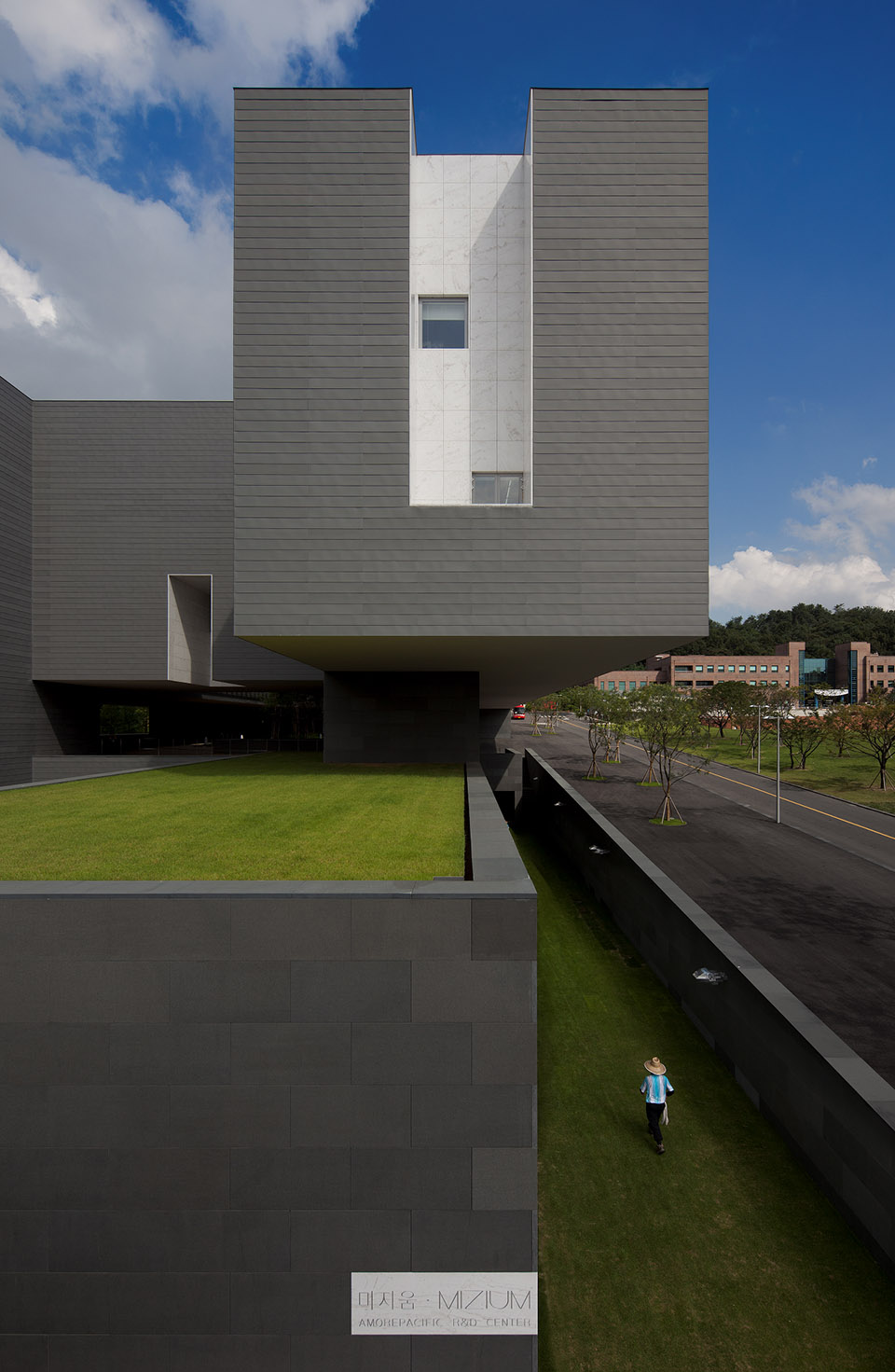
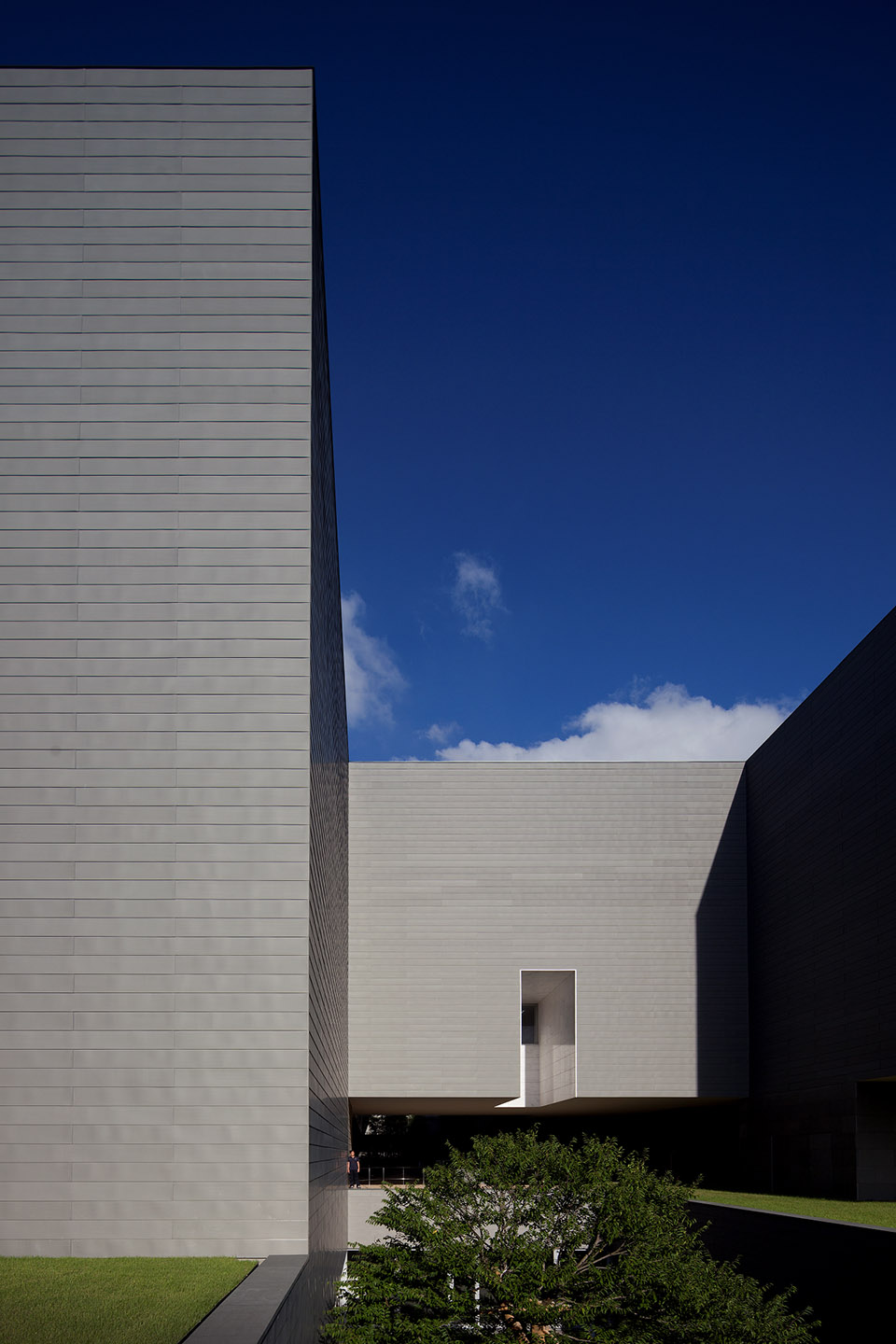
▼悬挑下的空间,space under the cantilever ©FERNANDO GUERRA
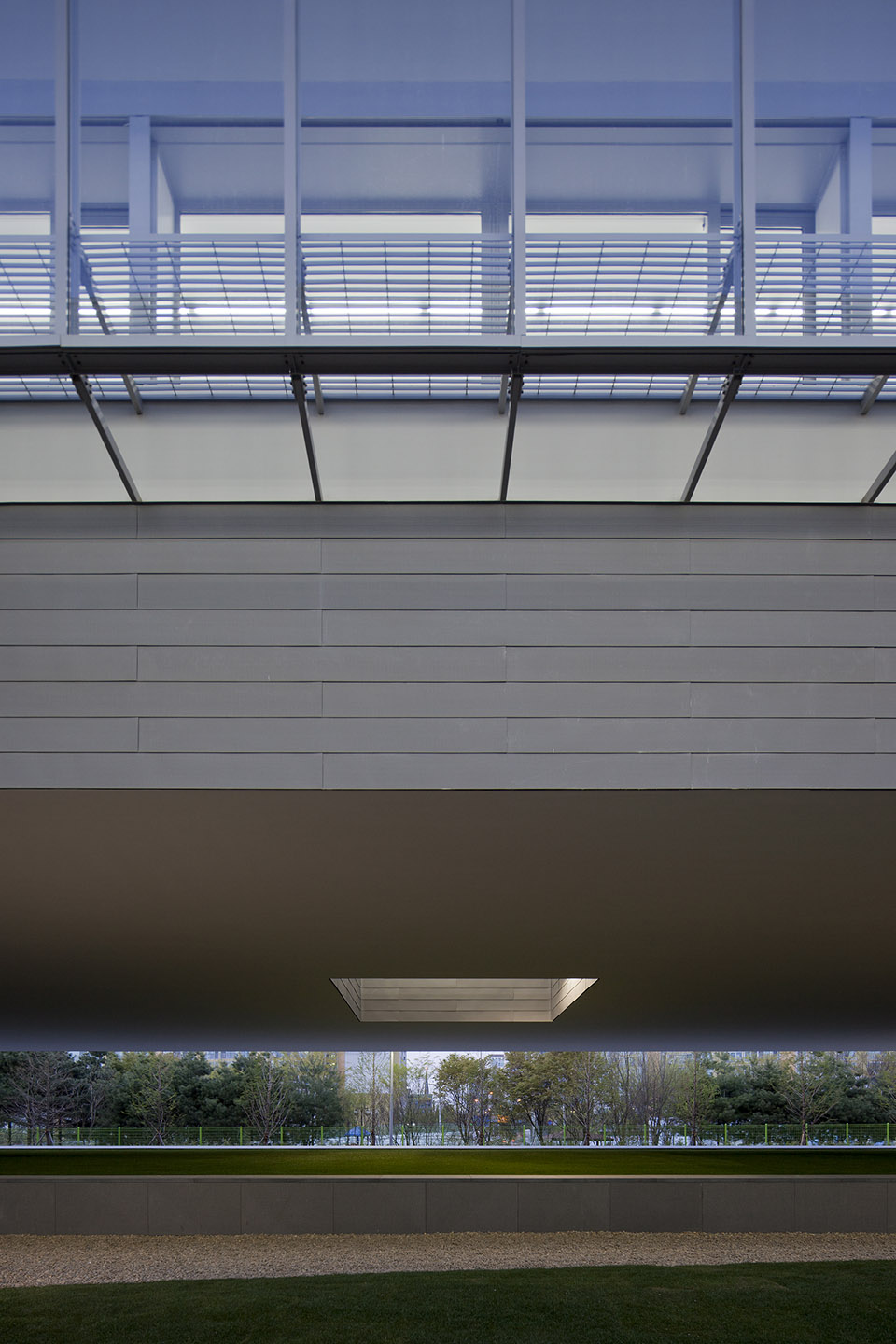
▼从露台看向远处,view to the distance from the terrace ©FERNANDO GUERRA
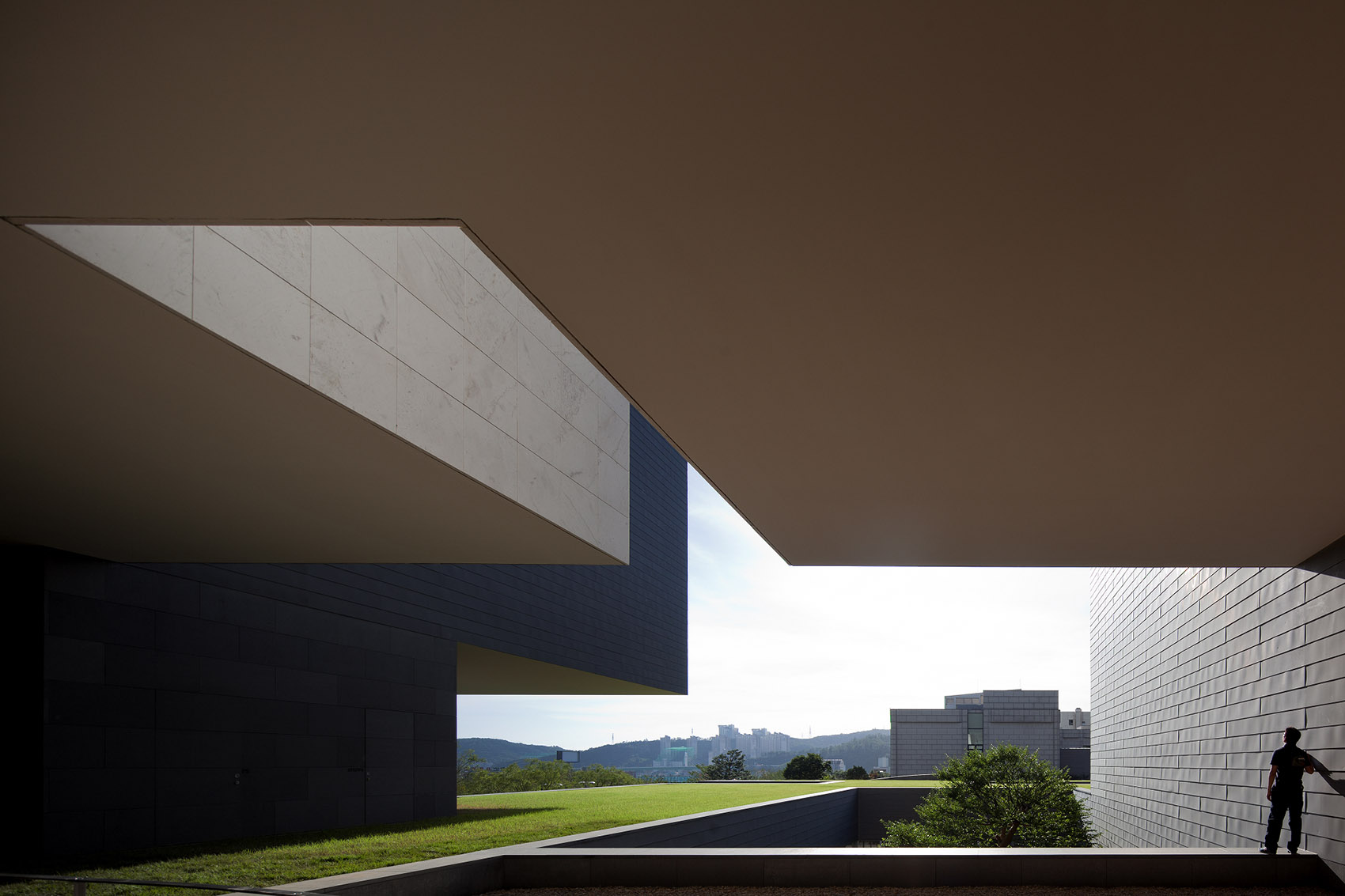
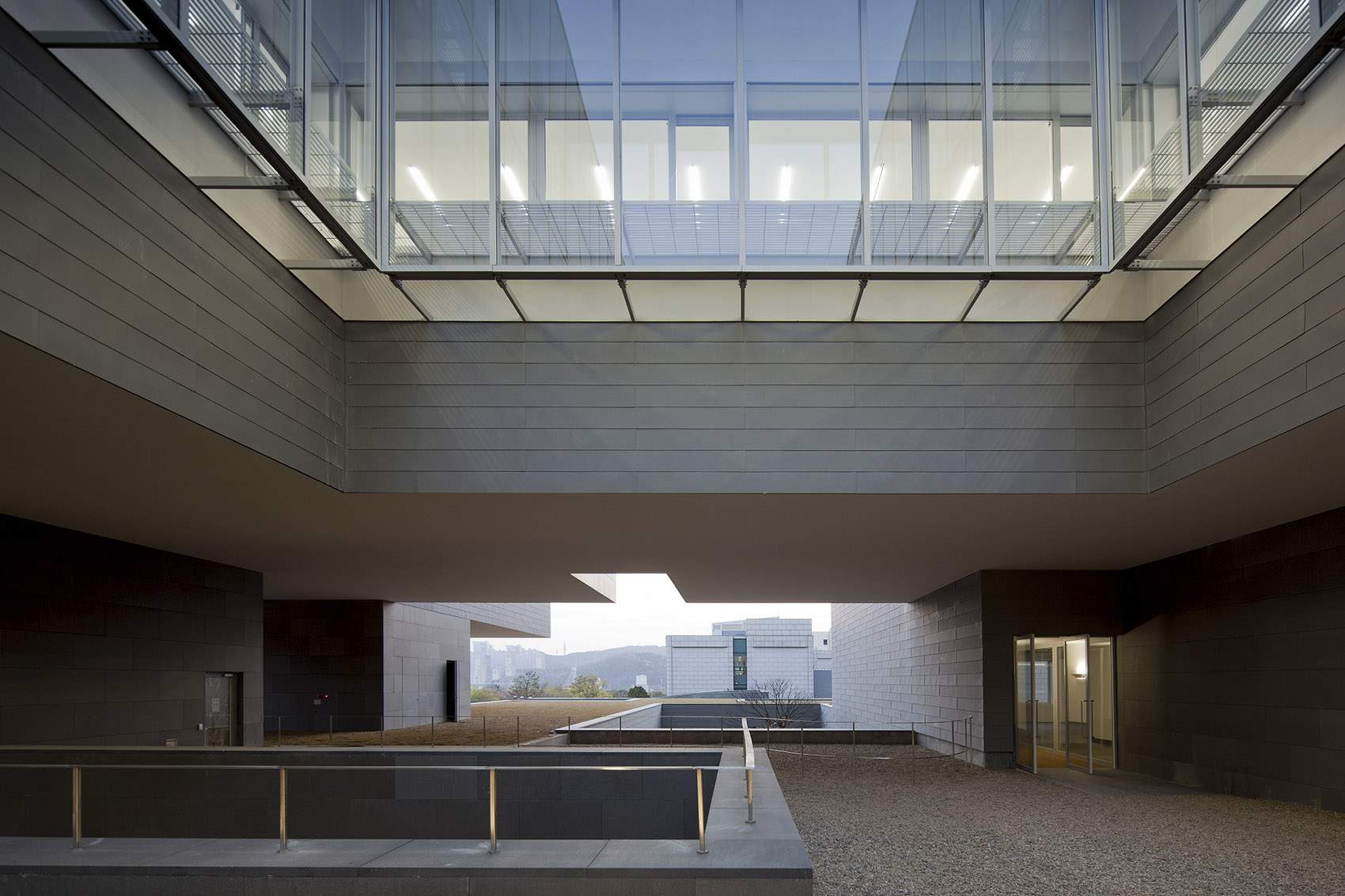
▼立面细部,facade details ©FERNANDO GUERRA
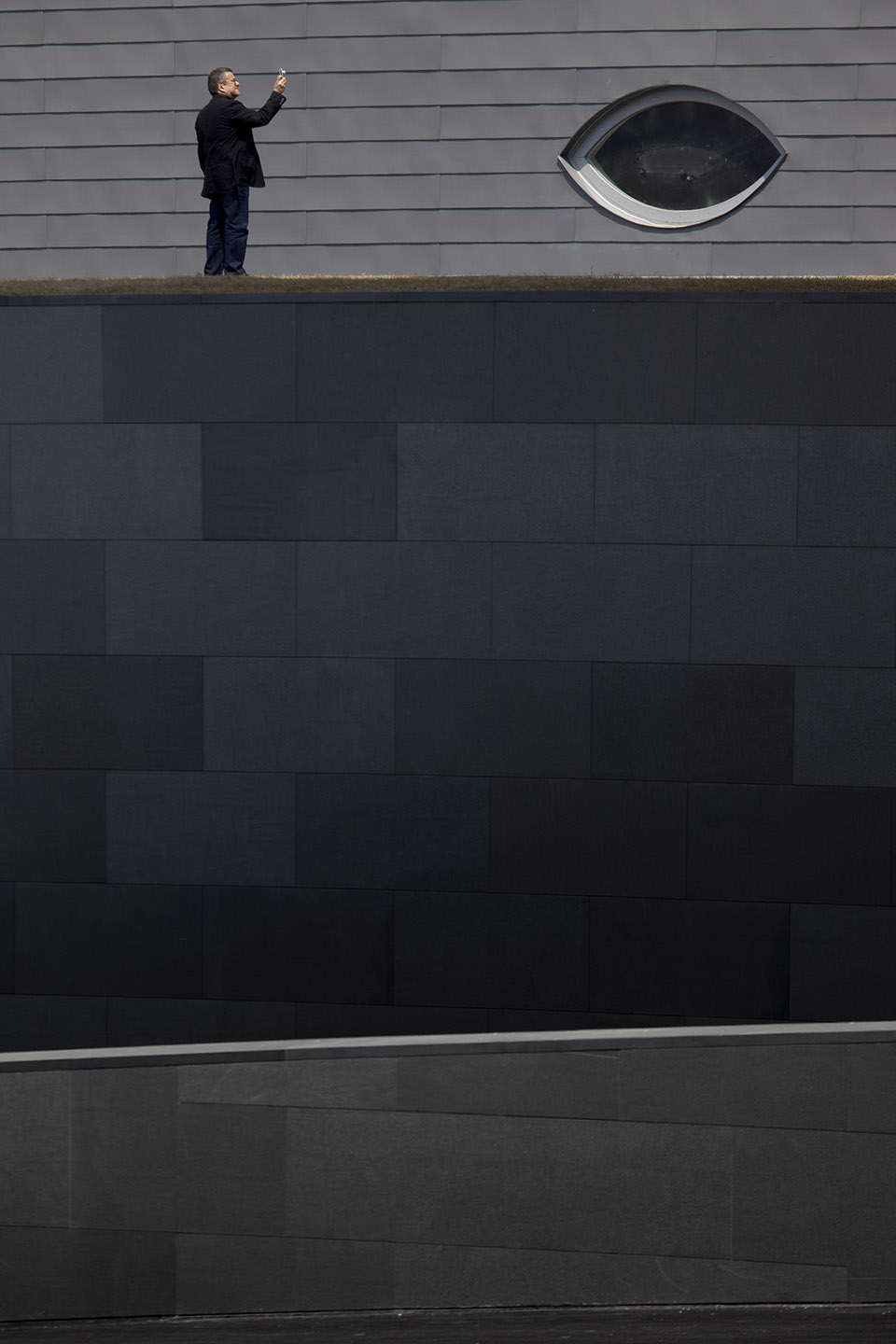
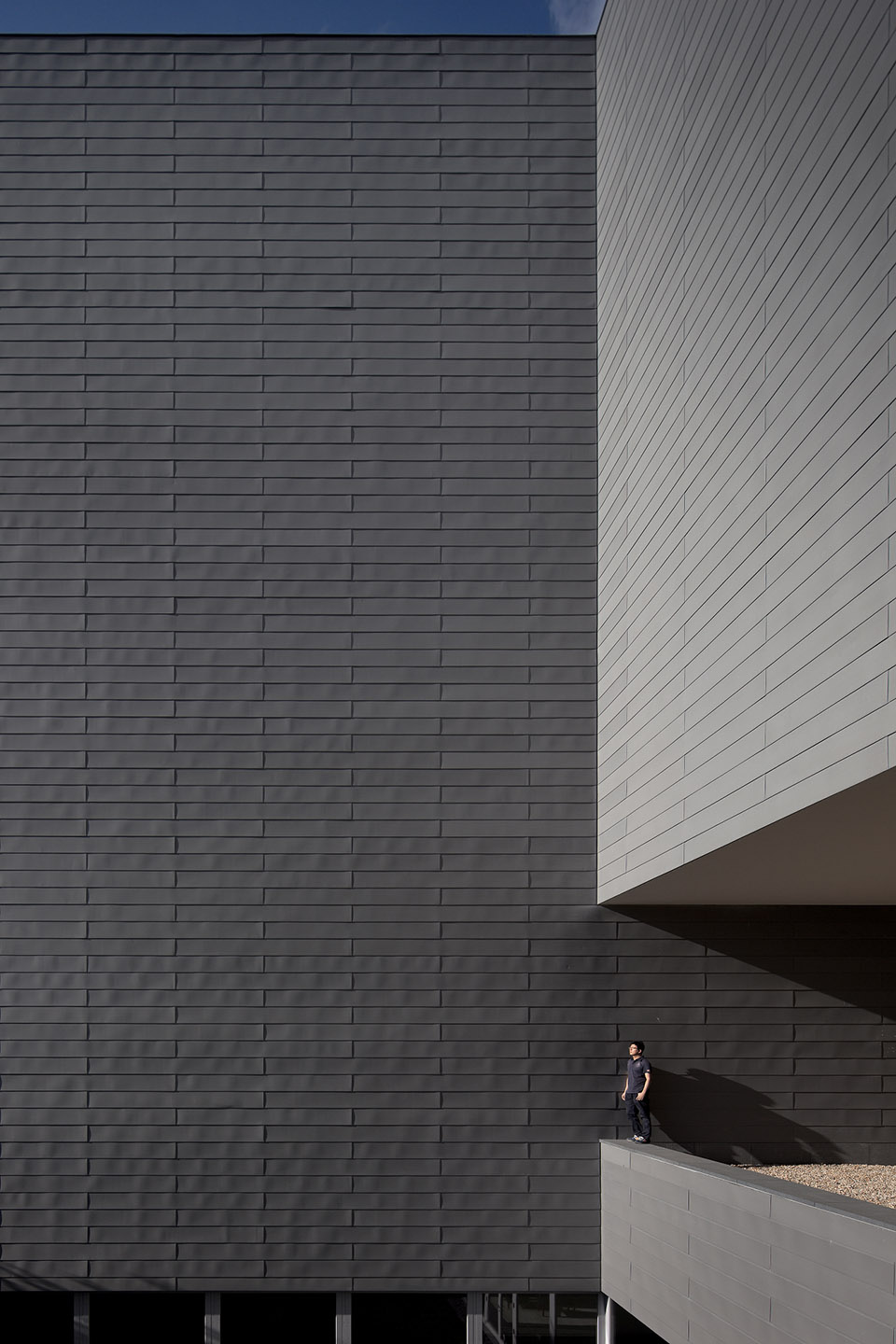
▼地下停车场,parking in the basement ©FERNANDO GUERRA

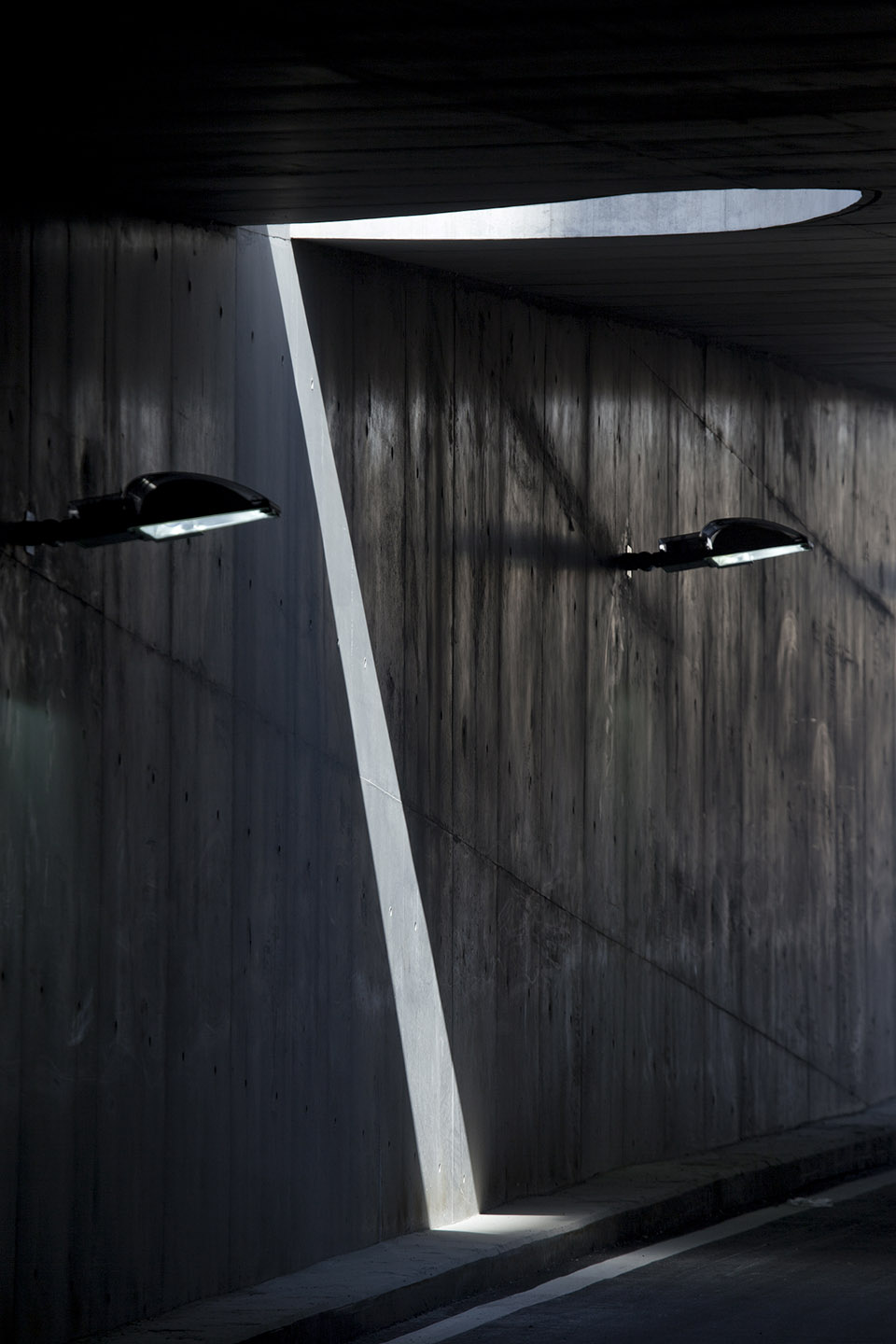

社交区域由展览区、会议室、餐厅、两间讨论室和健康俱乐部组成。其中展览区用来展示公司的艺术藏品,讨论室之一采用露天剧场的形式。
The social areas are made up of exhibition areas for the company’s art collection, meeting rooms, a restaurant and two conference rooms, one of which is in the form of an amphitheatre. And the Health Club.
▼入口空间,entrance space ©FERNANDO GUERRA
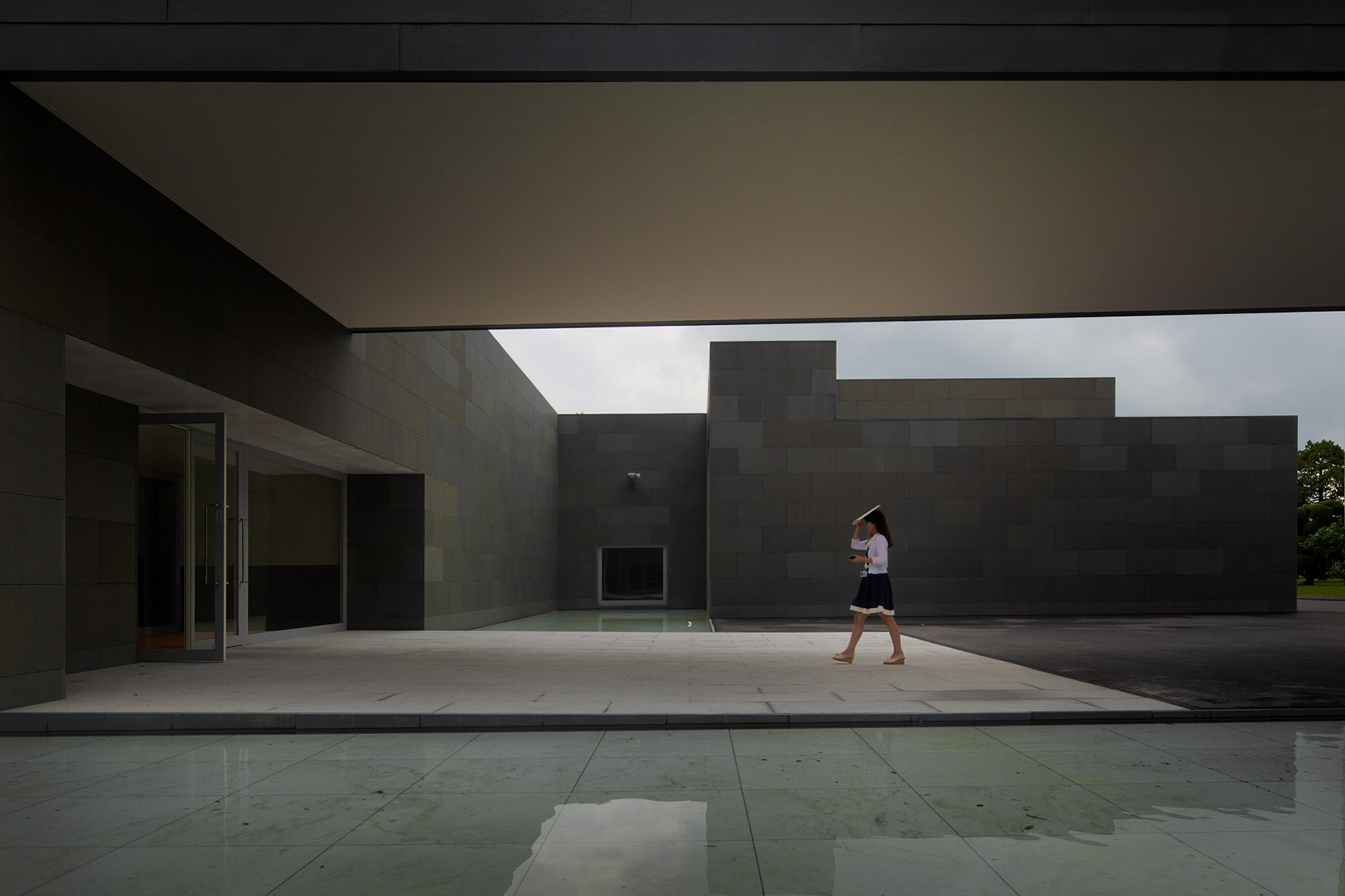
▼室外公共区域,outdoor public area ©FERNANDO GUERRA
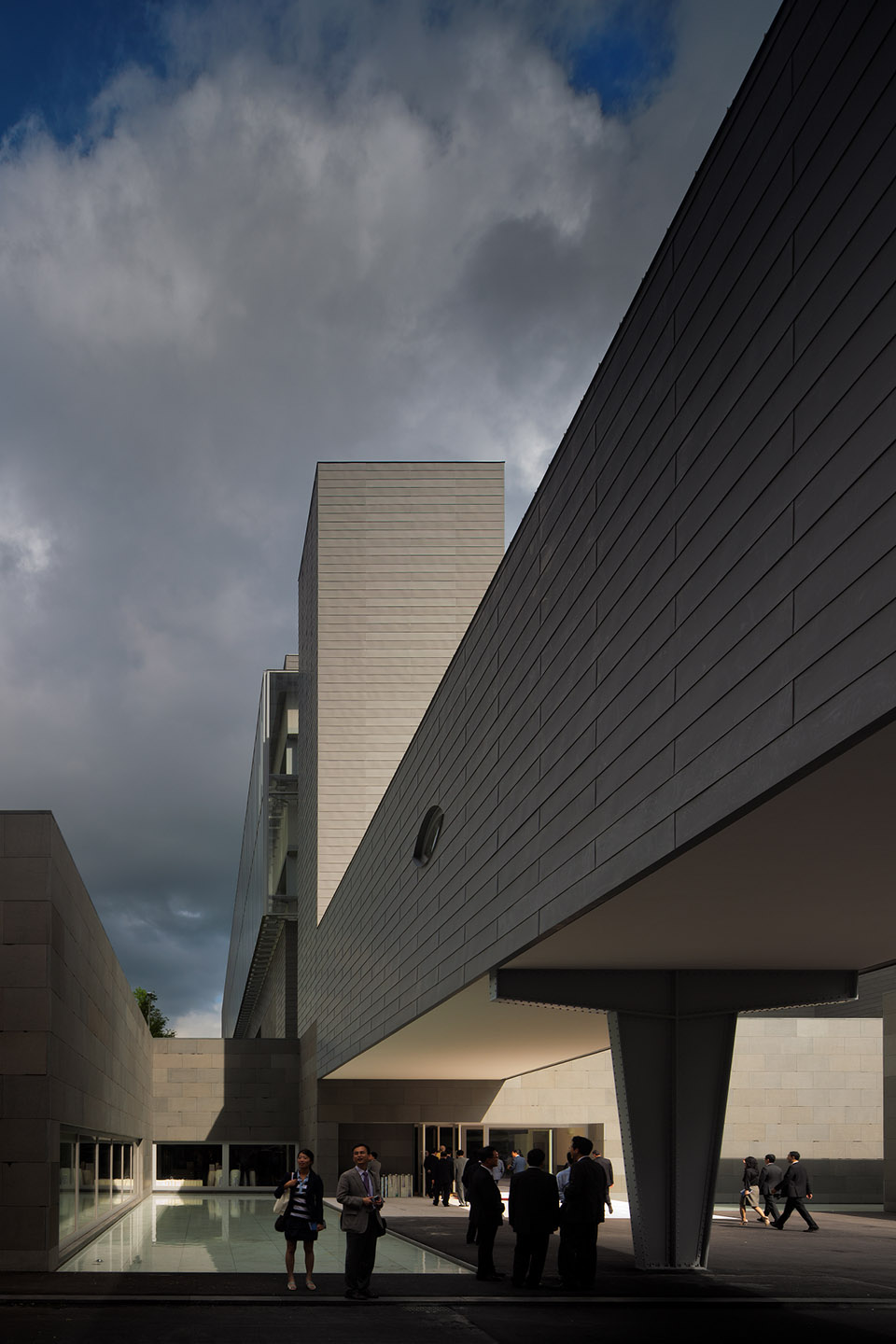
▼大堂,lobby ©FERNANDO GUERRA
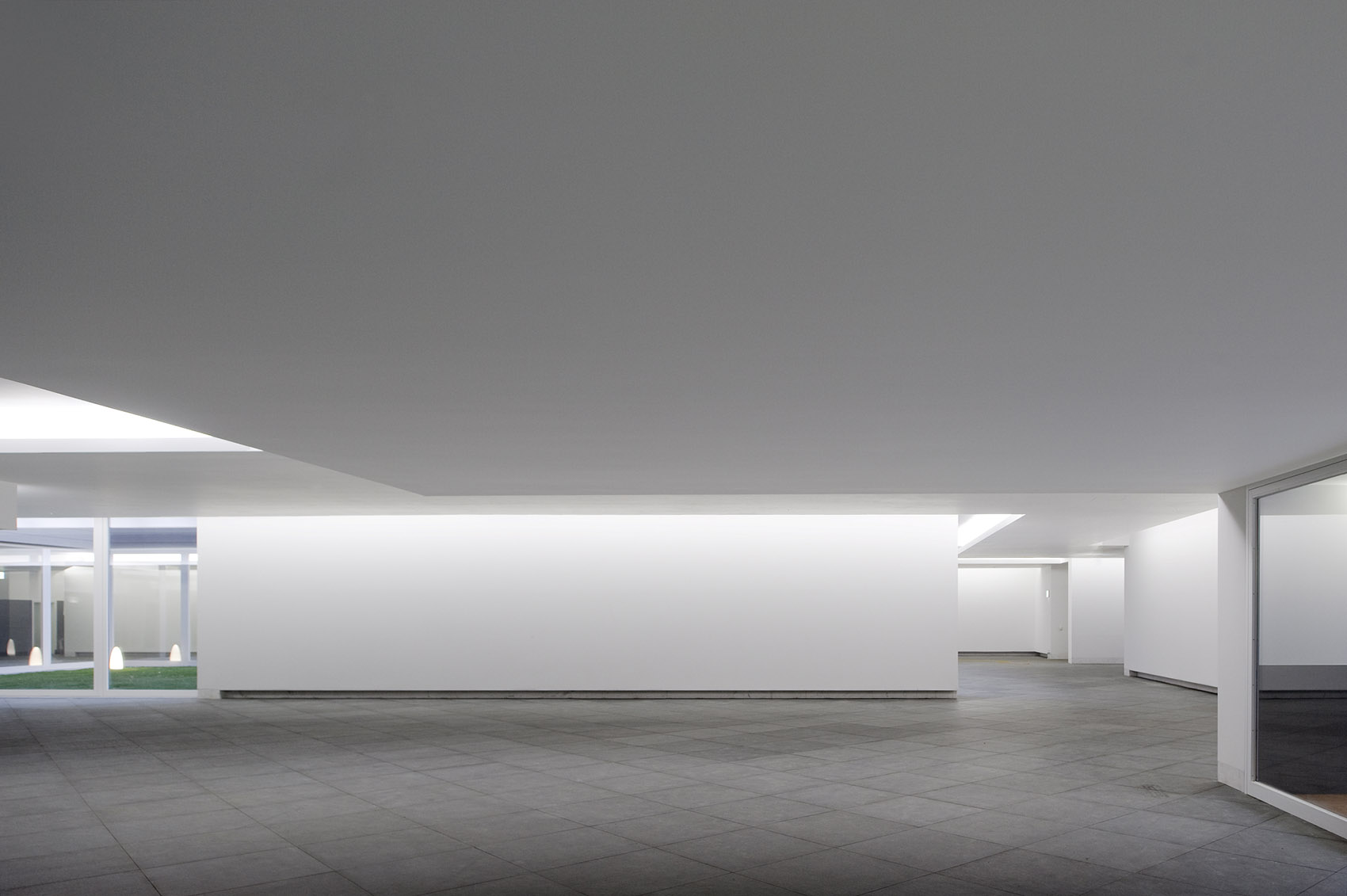
▼围绕庭院的走廊和社交空间,corridor and social space around the courtyard ©FERNANDO GUERRA
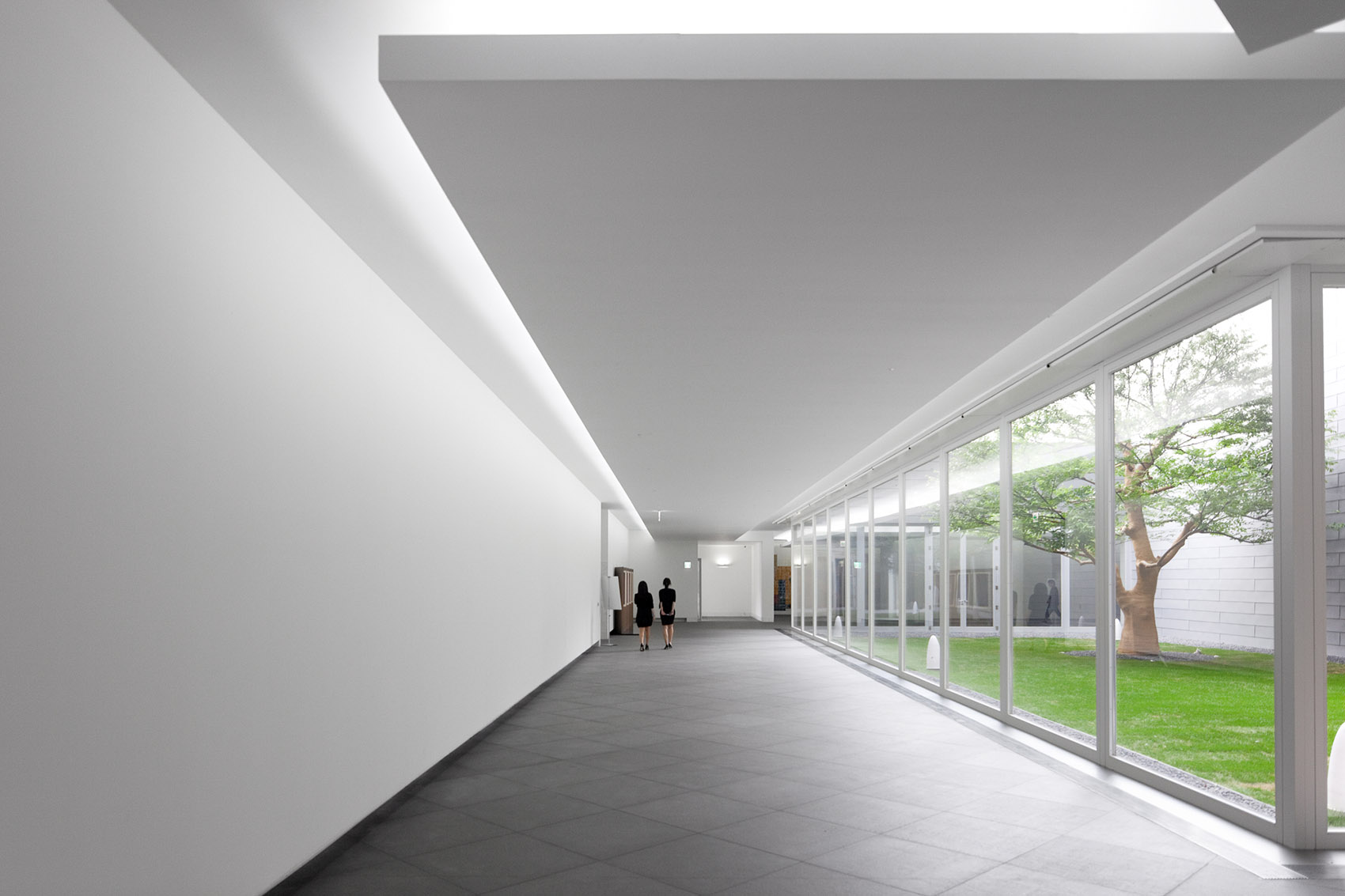
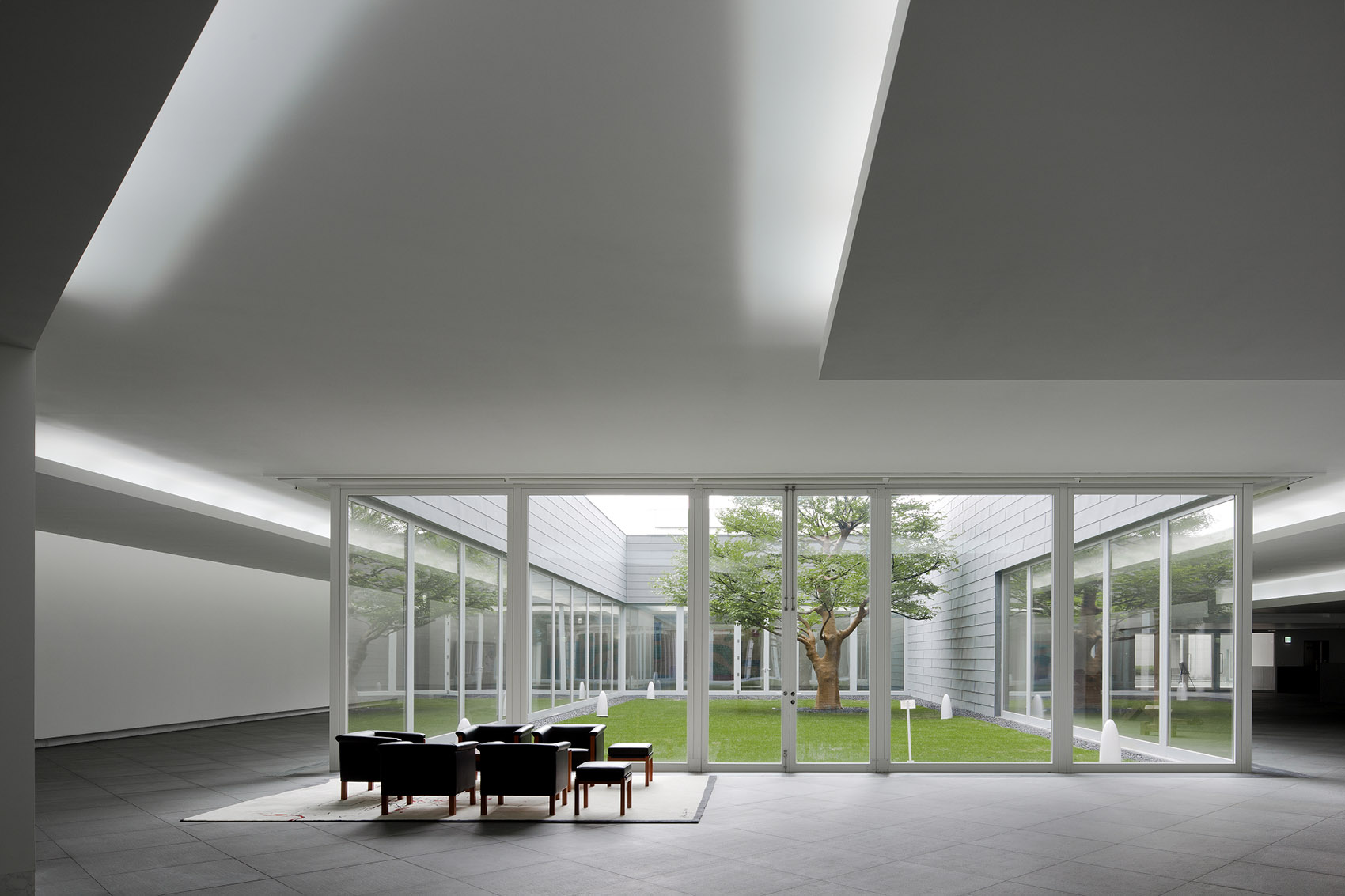
▼开放的社交区,open social area ©FERNANDO GUERRA
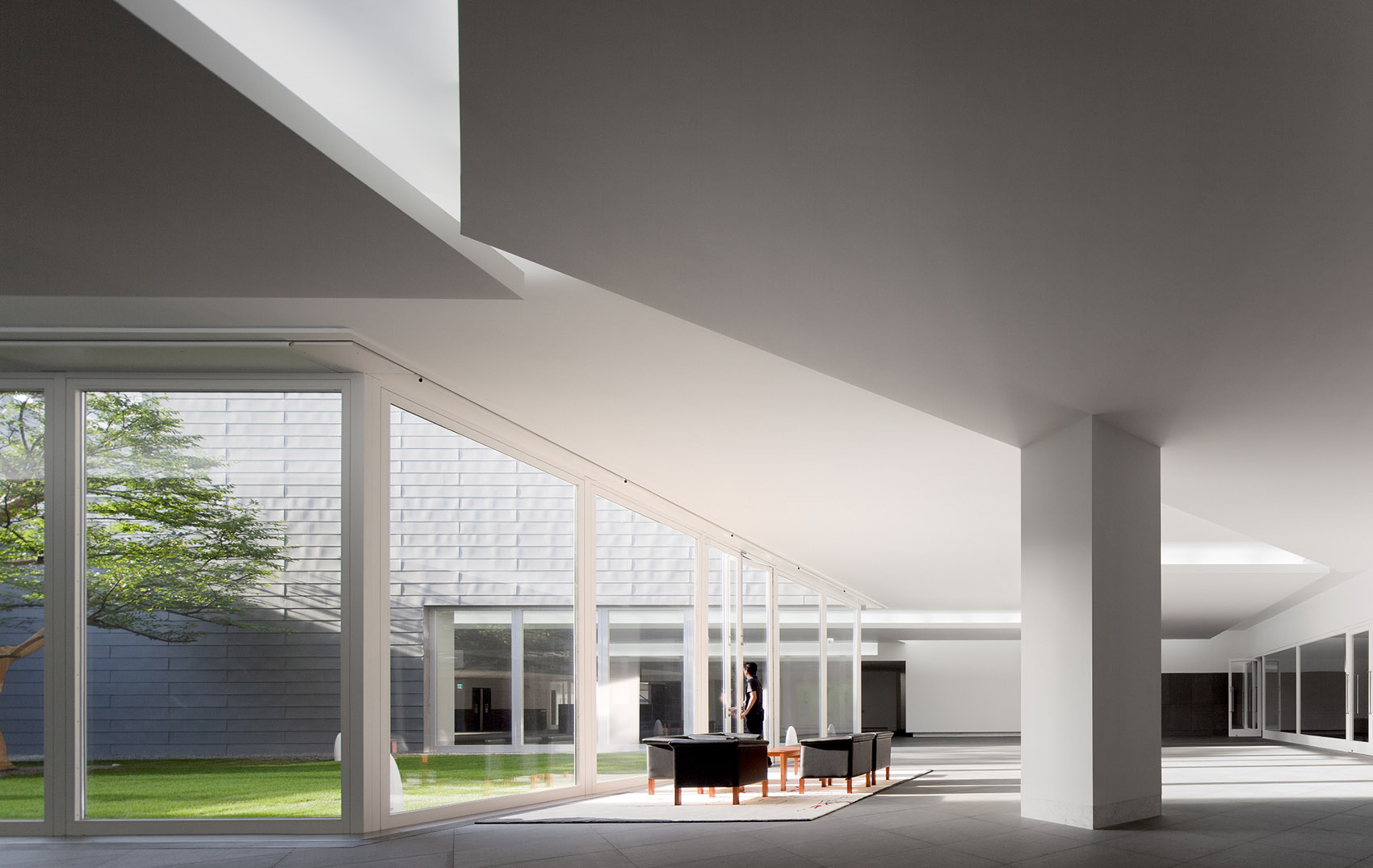
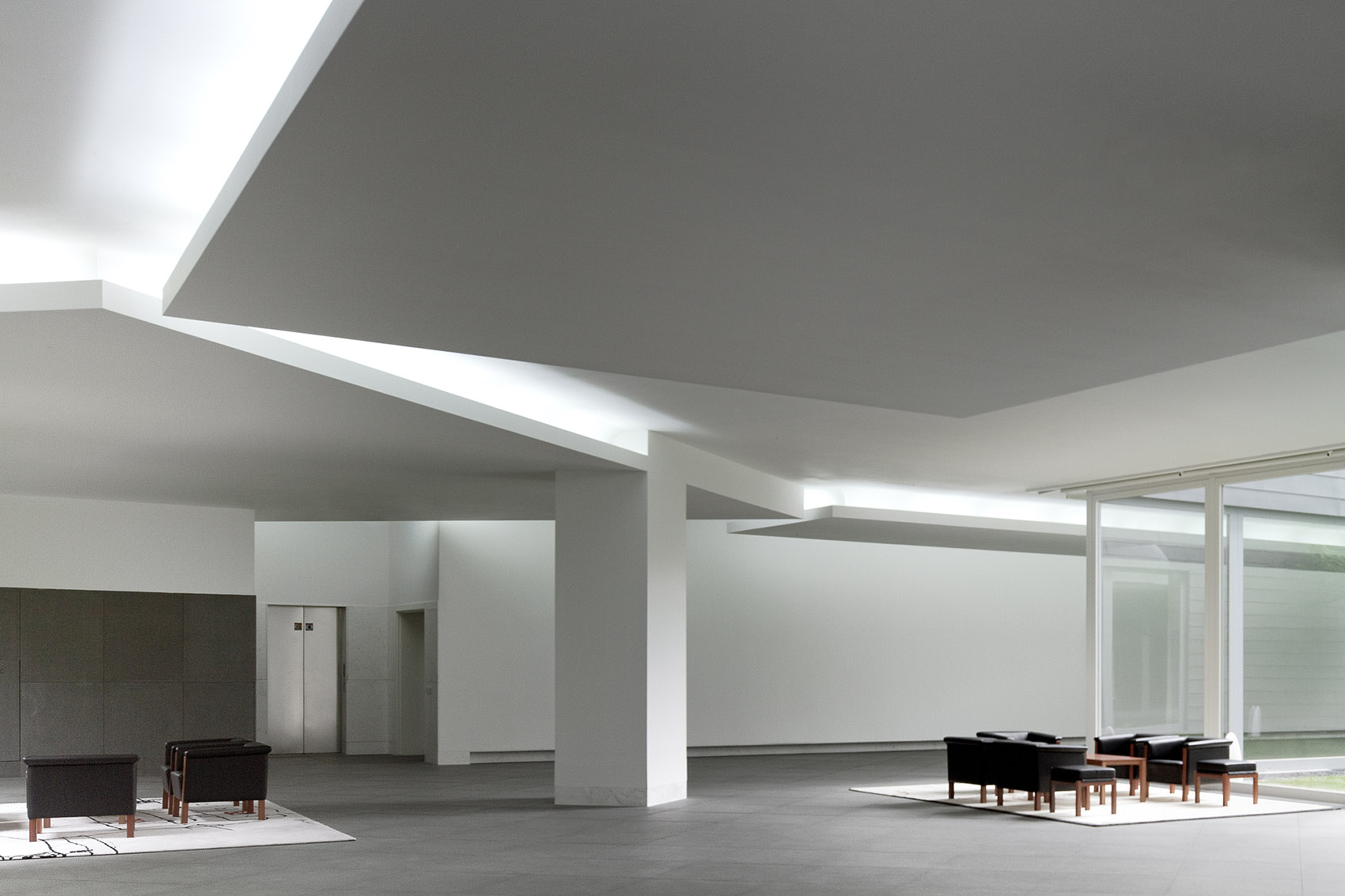
▼会议室,meeting area ©FERNANDO GUERRA
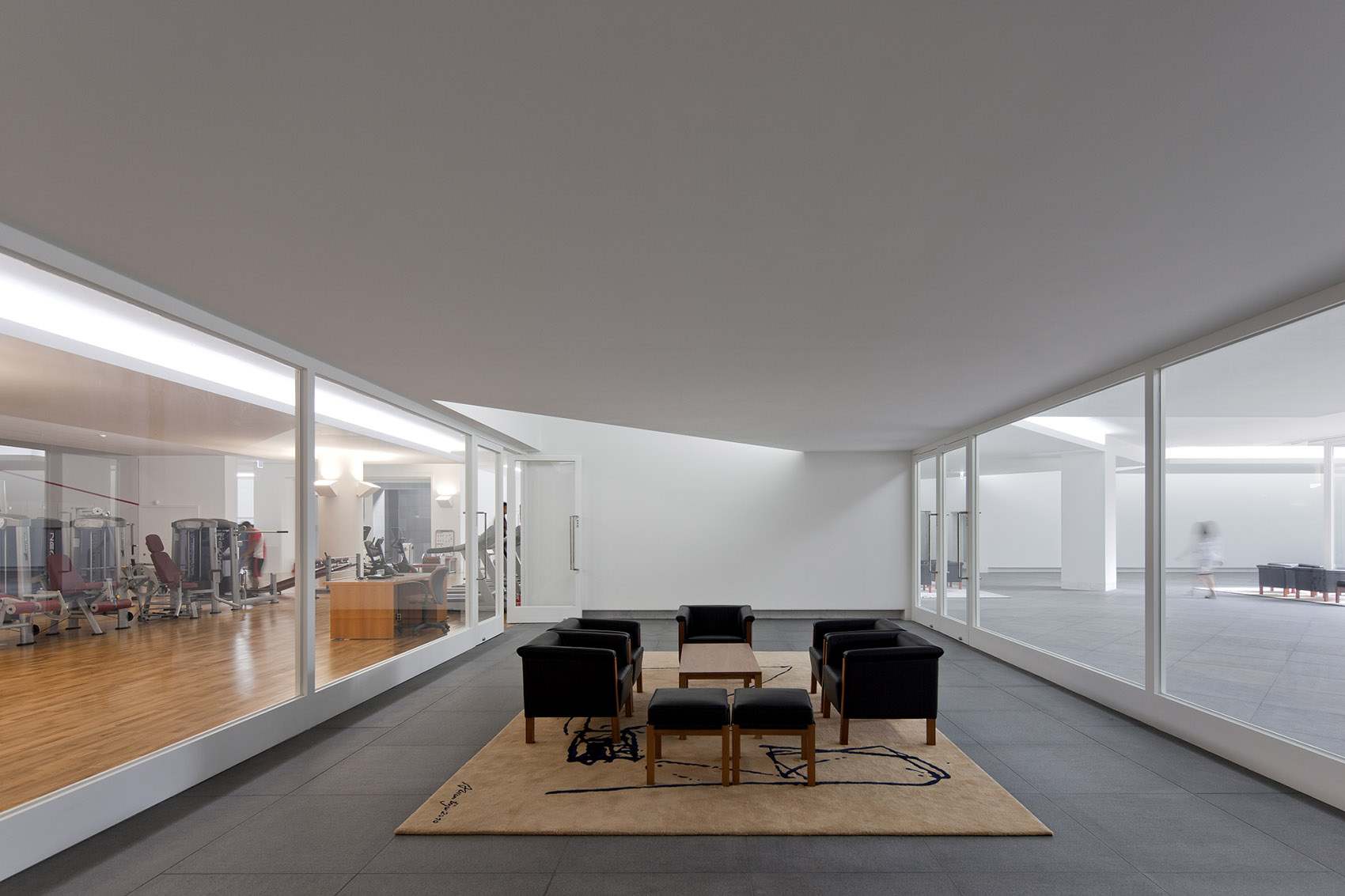
▼展览空间,exhibition area ©FERNANDO GUERRA
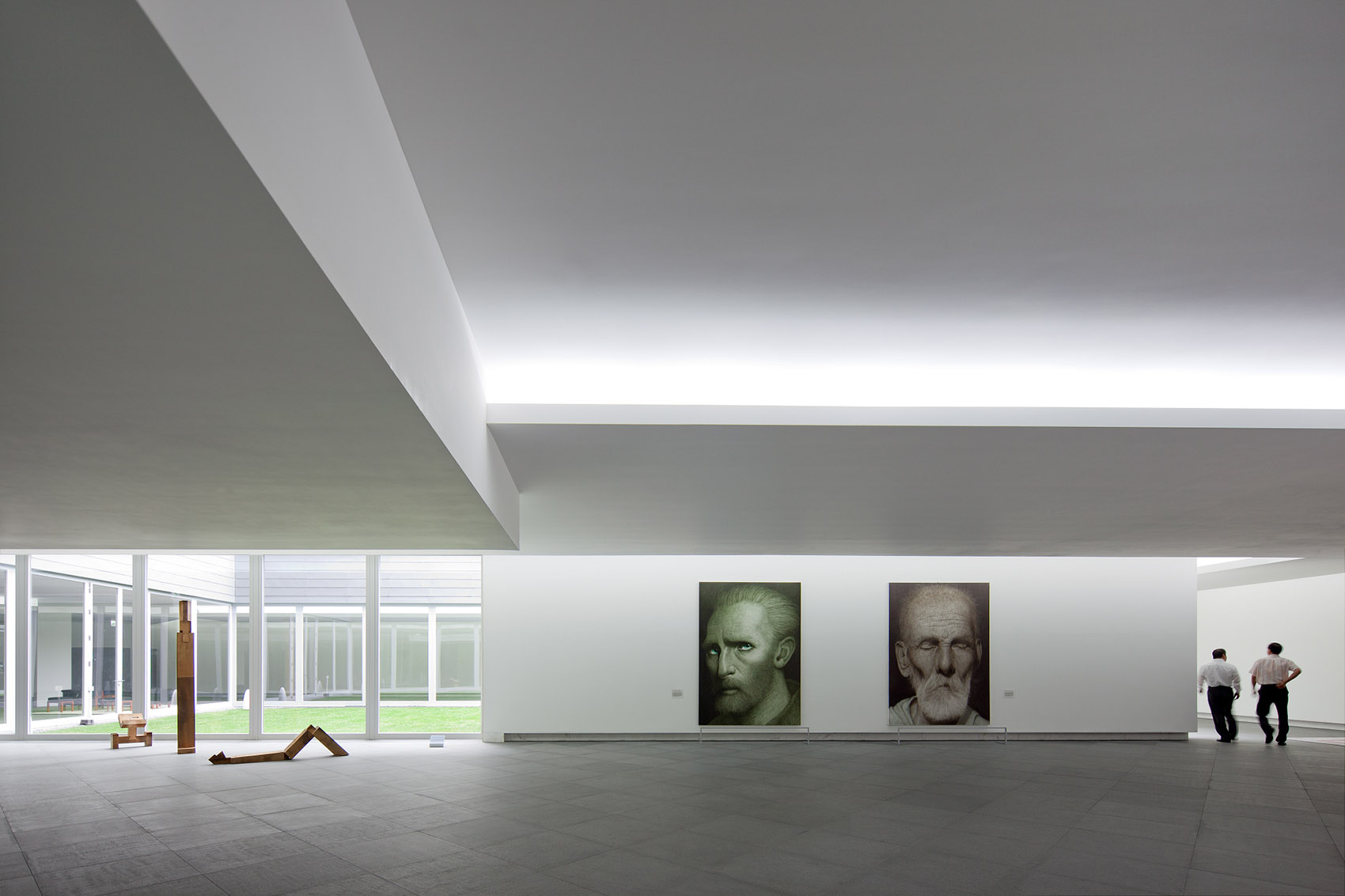
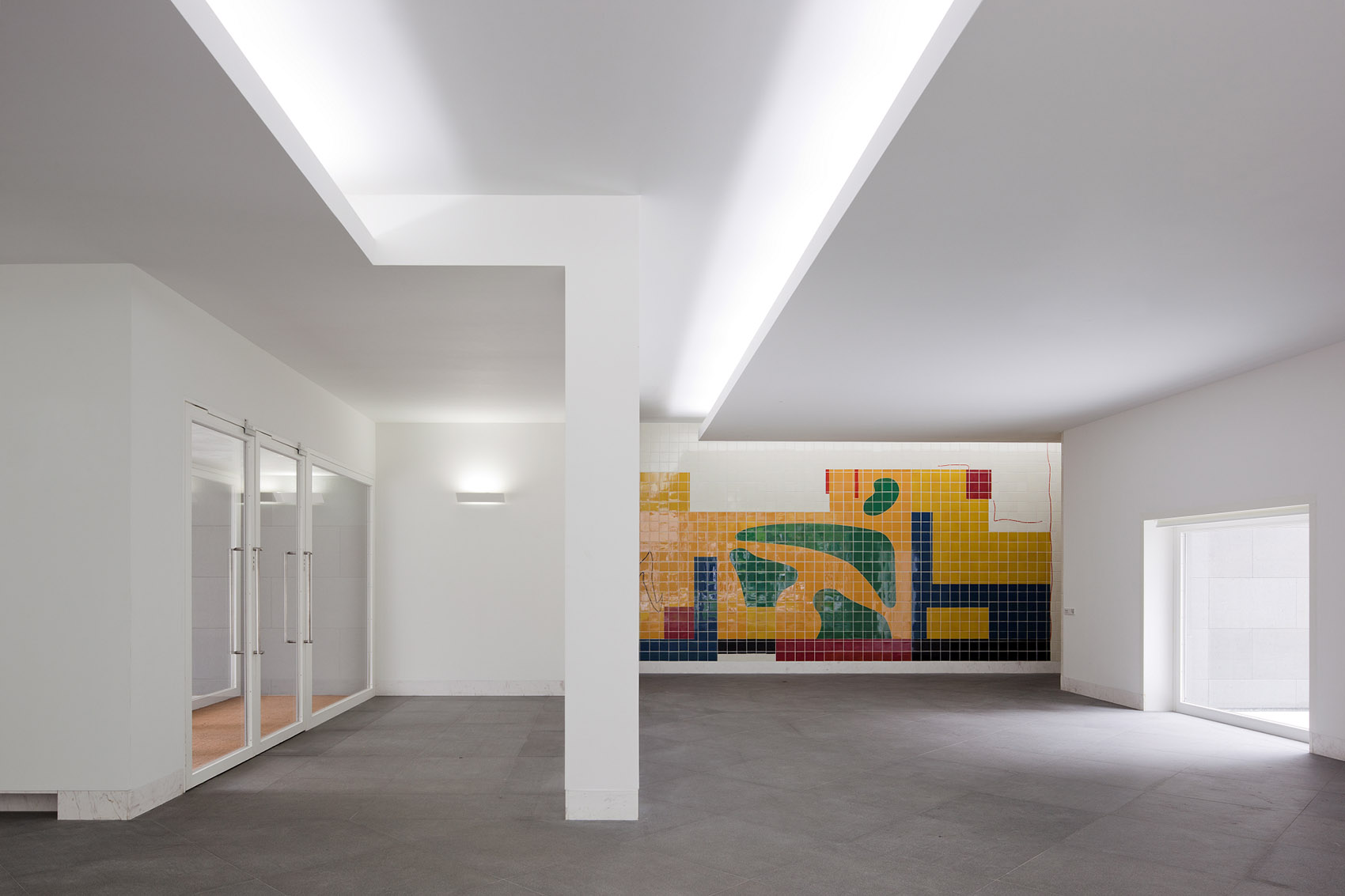
▼交通空间,circulation space ©FERNANDO GUERRA
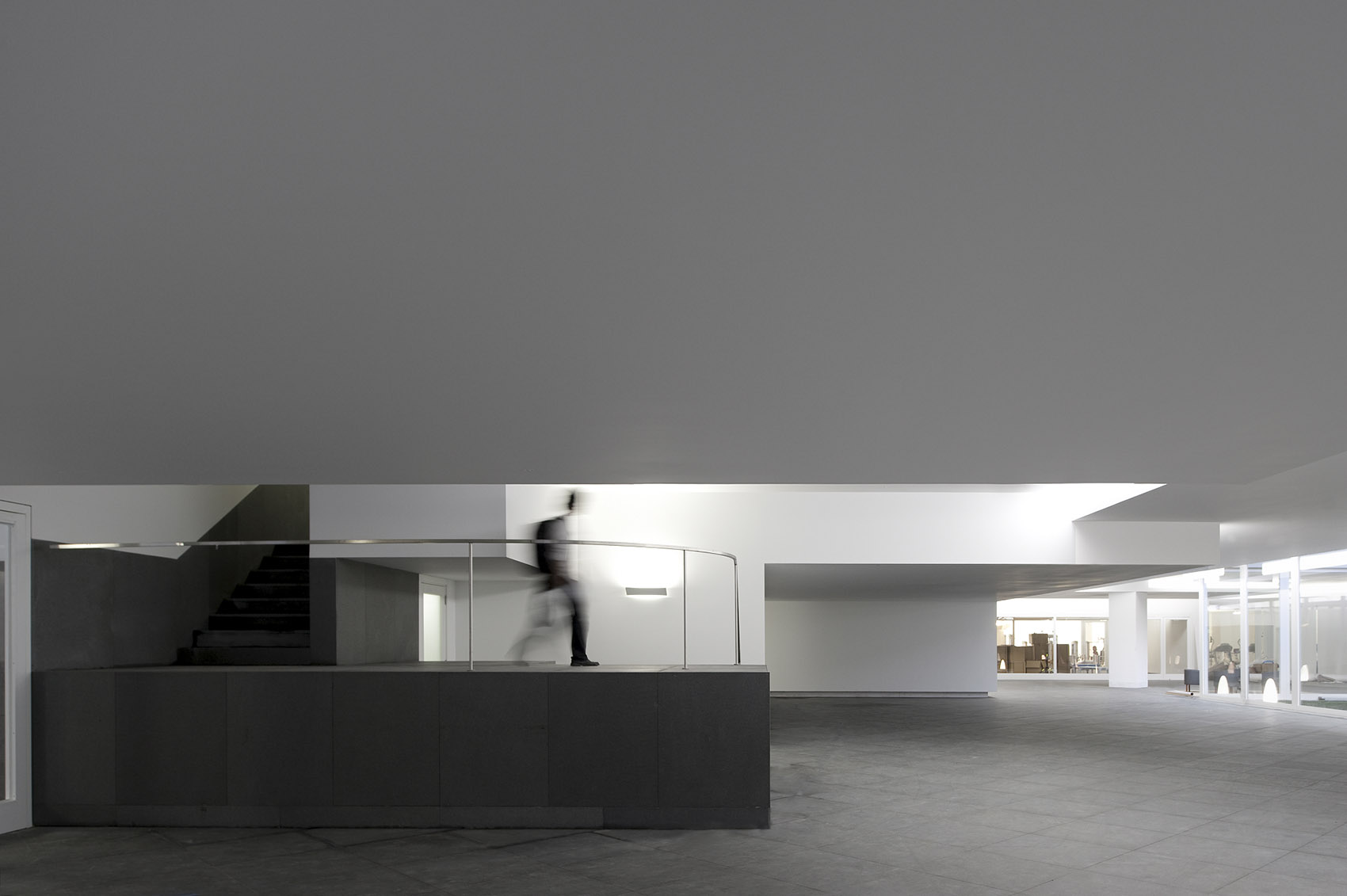
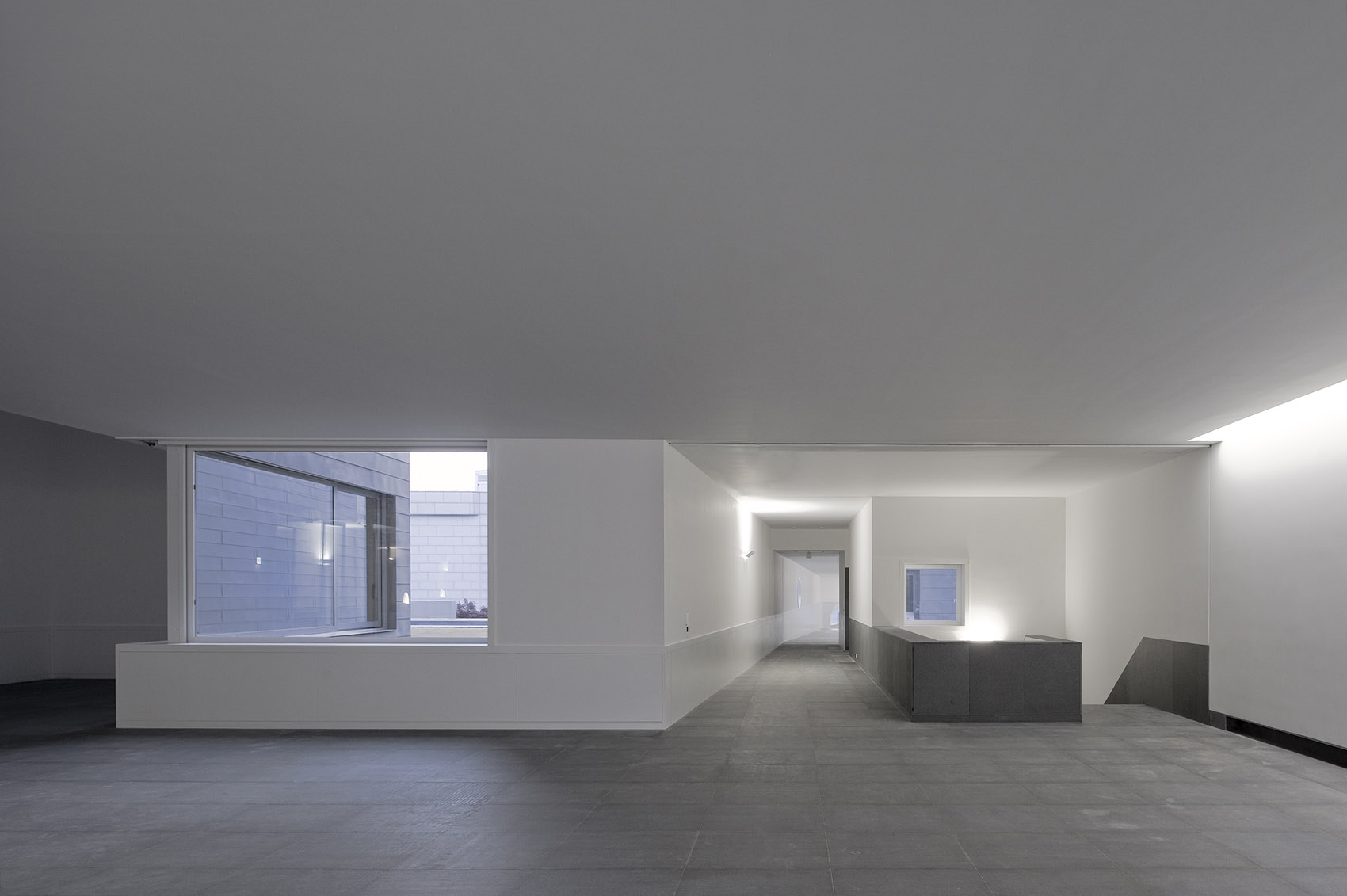
▼报告厅,auditorium ©FERNANDO GUERRA
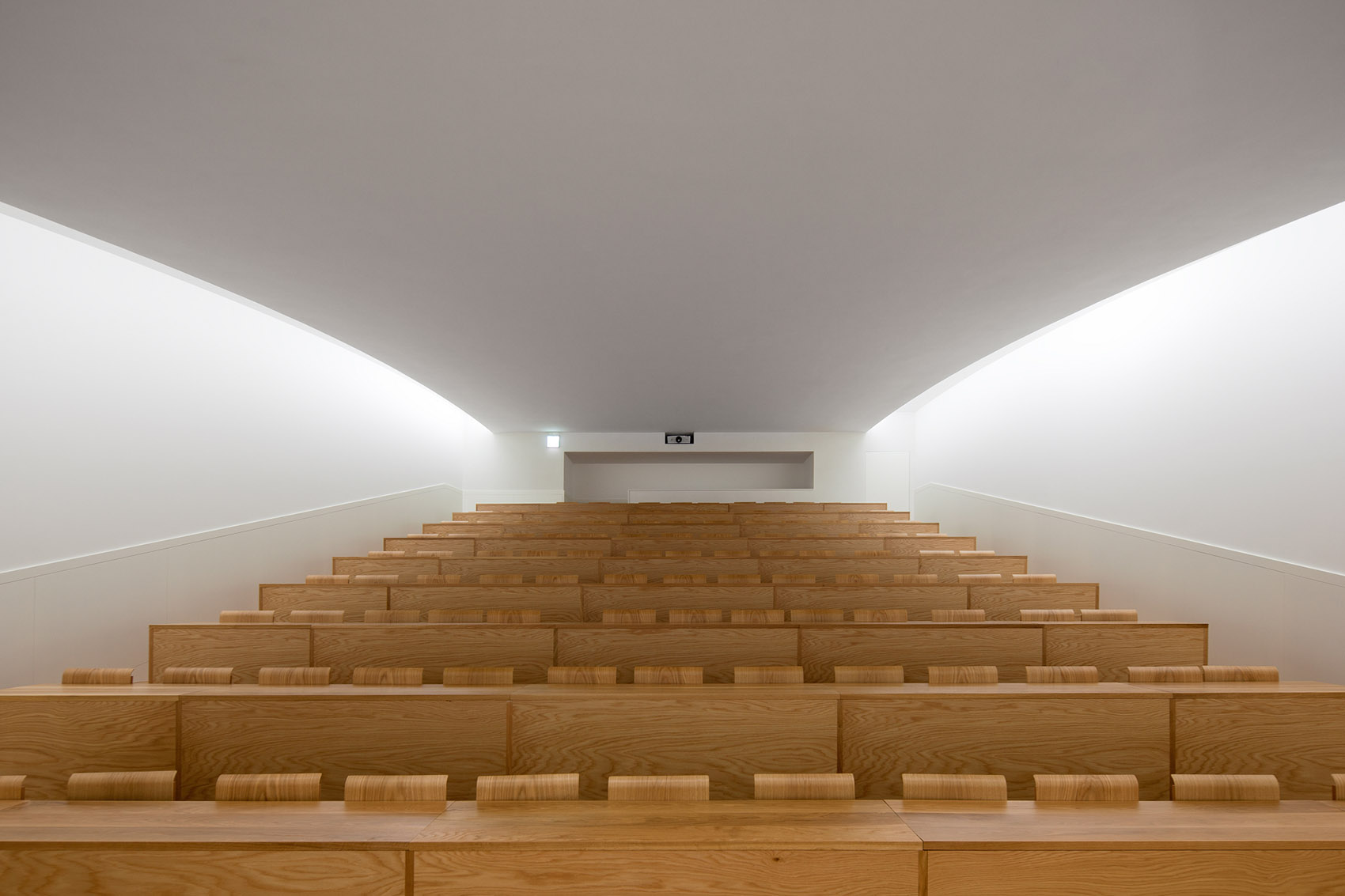
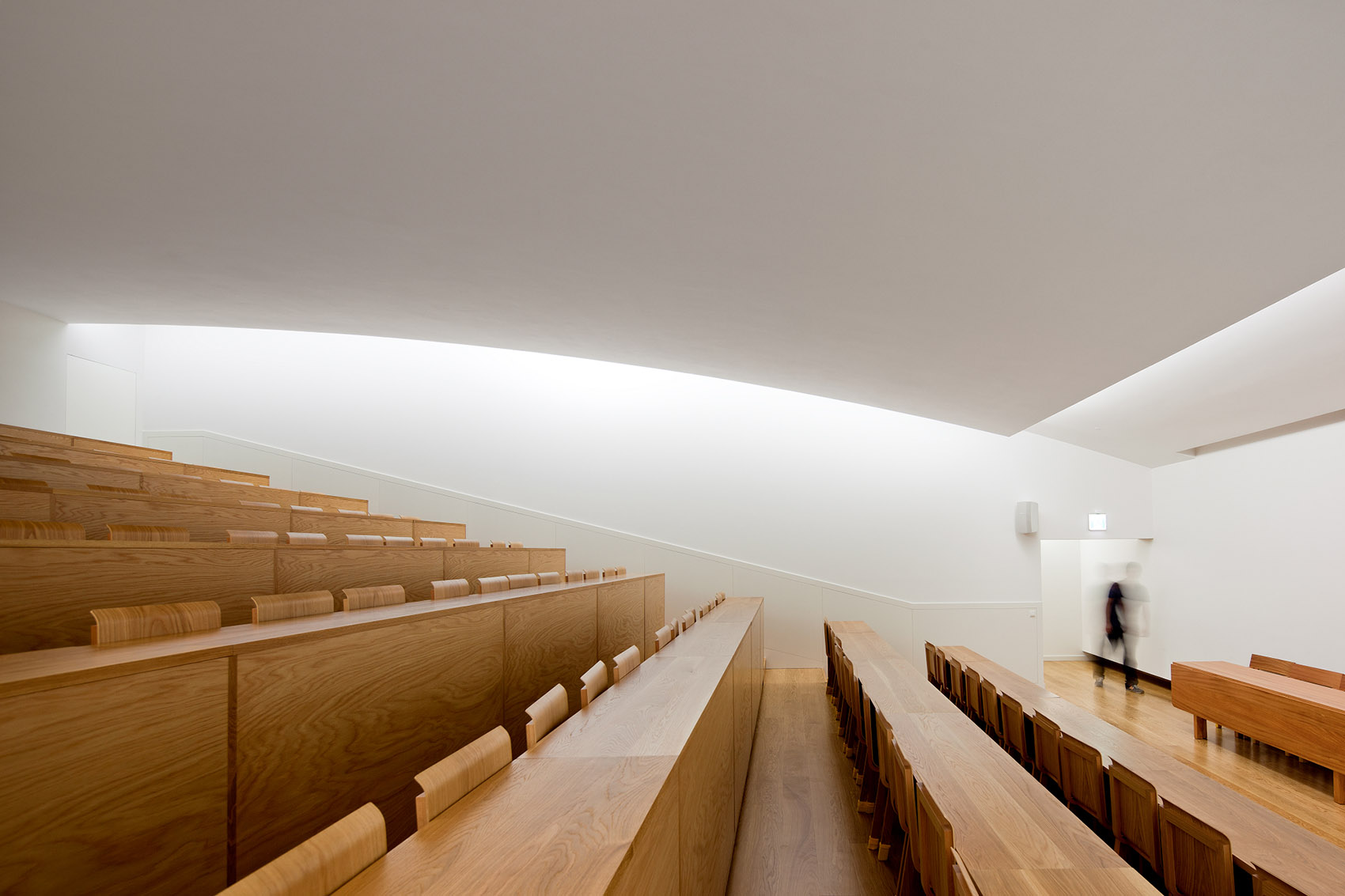
▼餐厅,canteen ©FERNANDO GUERRA


研究层尽可能开放。一方面,这是业主的希望,由于他深受Aveiro大学图书馆空间关系的触动;另一方面,这样的布局可以满足通风和散味的需求,保证实验室等技术环境的安全。
The research floors are as open as possible, in accordance with the express wishes of the client, who was clearly impressed by the relationship between spaces in the Library of Aveiro University, and in accordance with the need to ventilate and dissipate smells and fumes and to guarantee safety and for the other technical conditions typical of a laboratory.
▼开放的研究和办公空间,open research and working space ©FERNANDO GUERRA
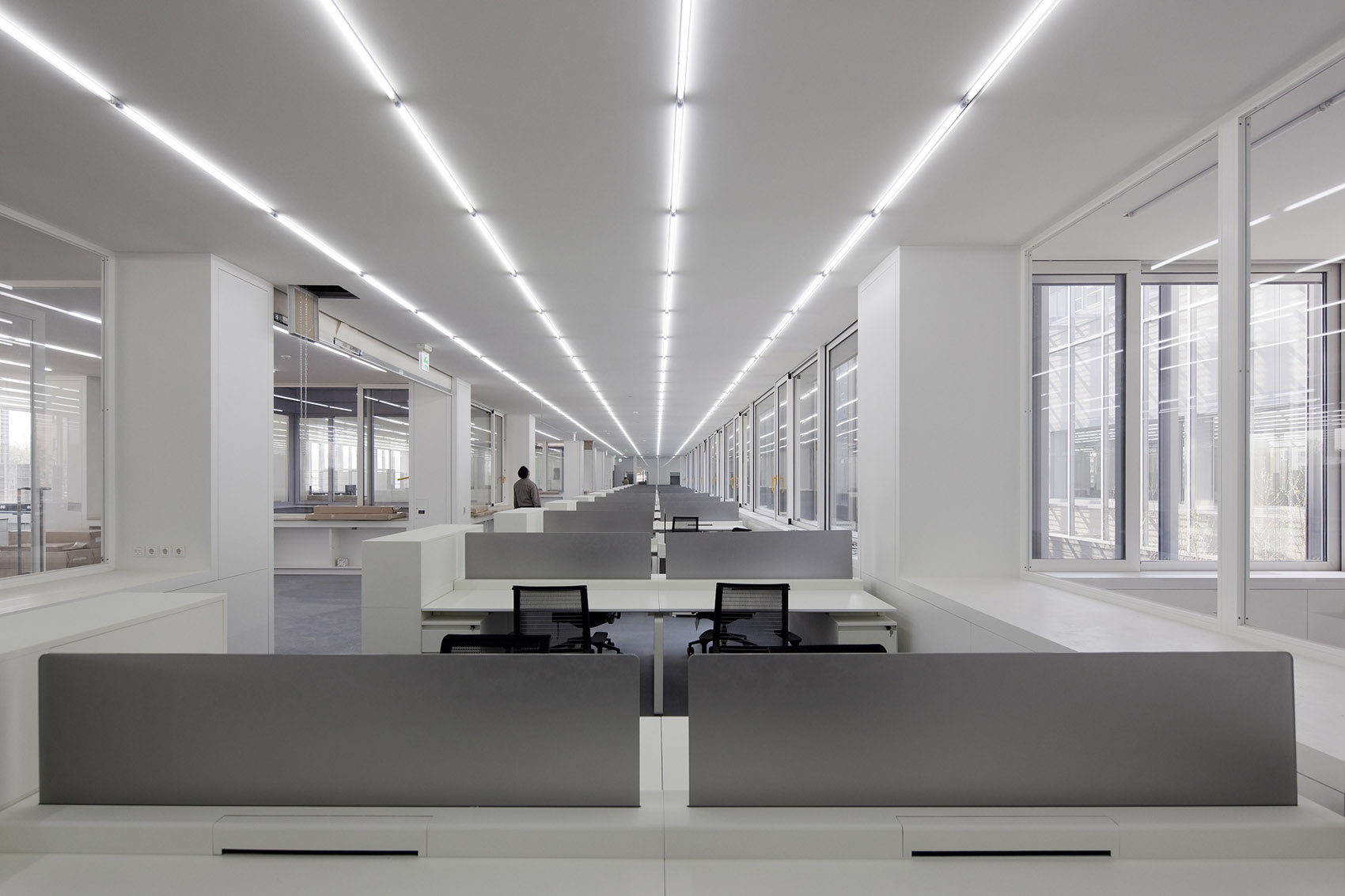
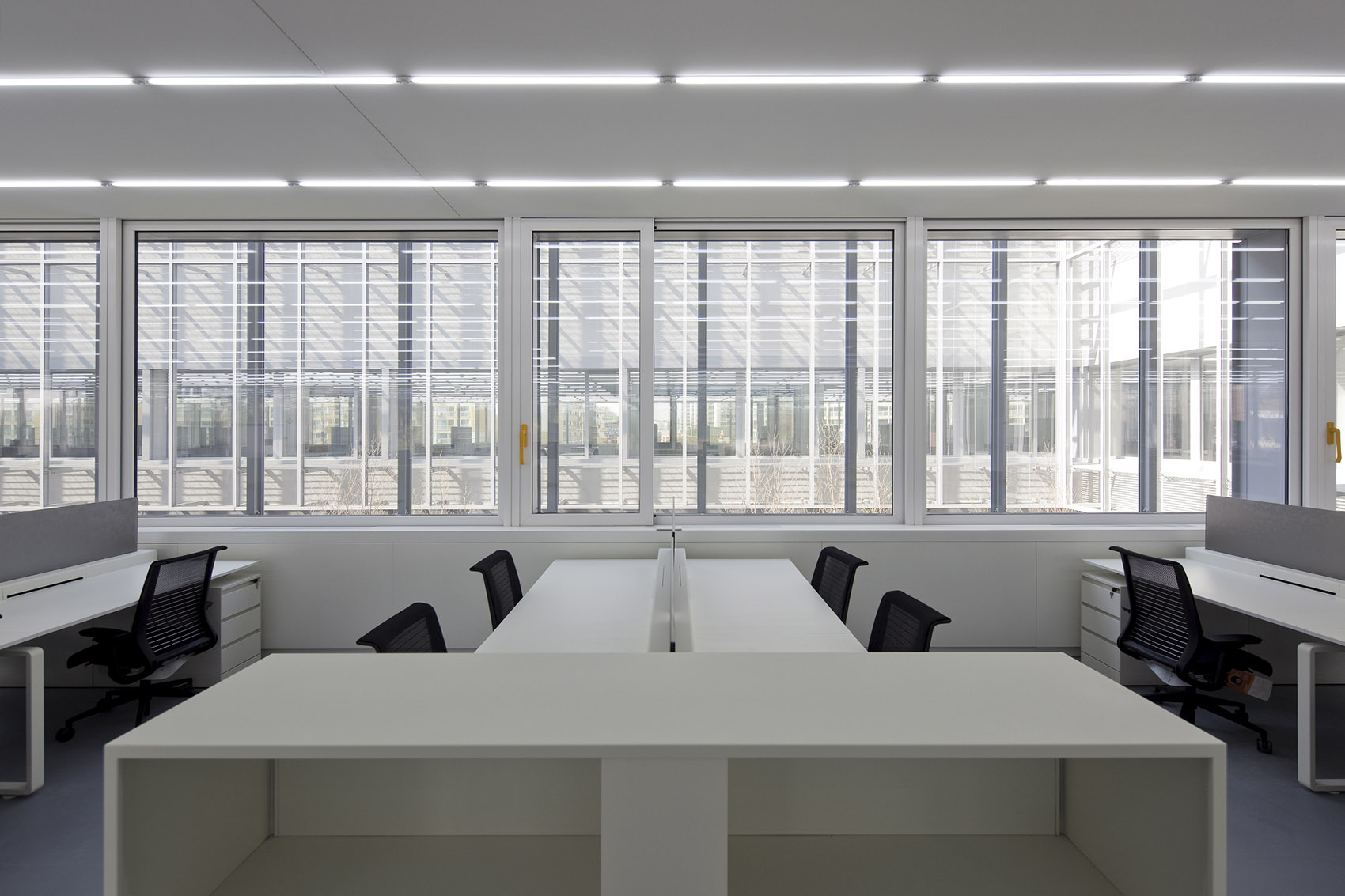
▼实验室,laboratory ©FERNANDO GUERRA
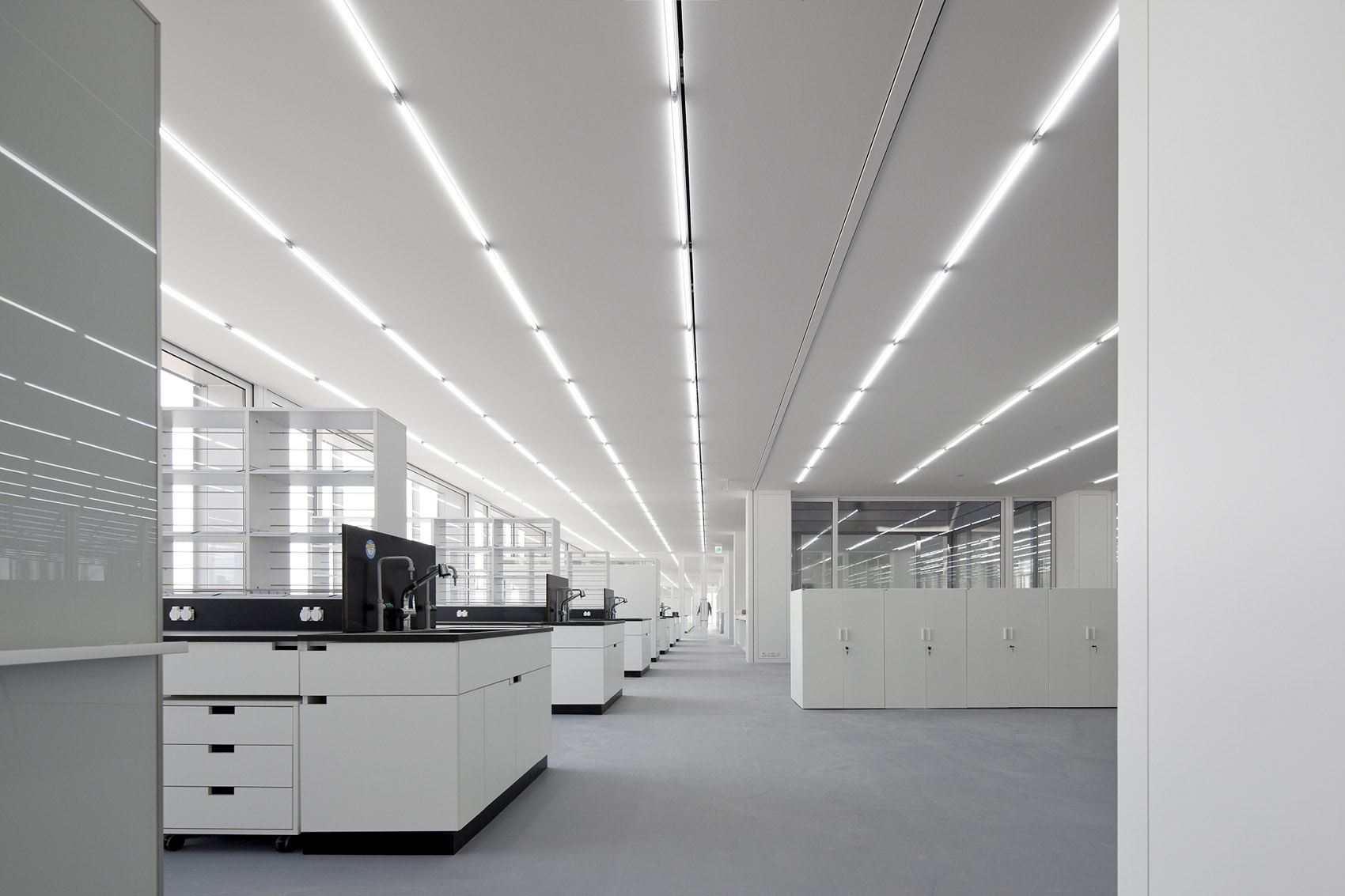
▼产品展示区,products exhibition area ©FERNANDO GUERRA
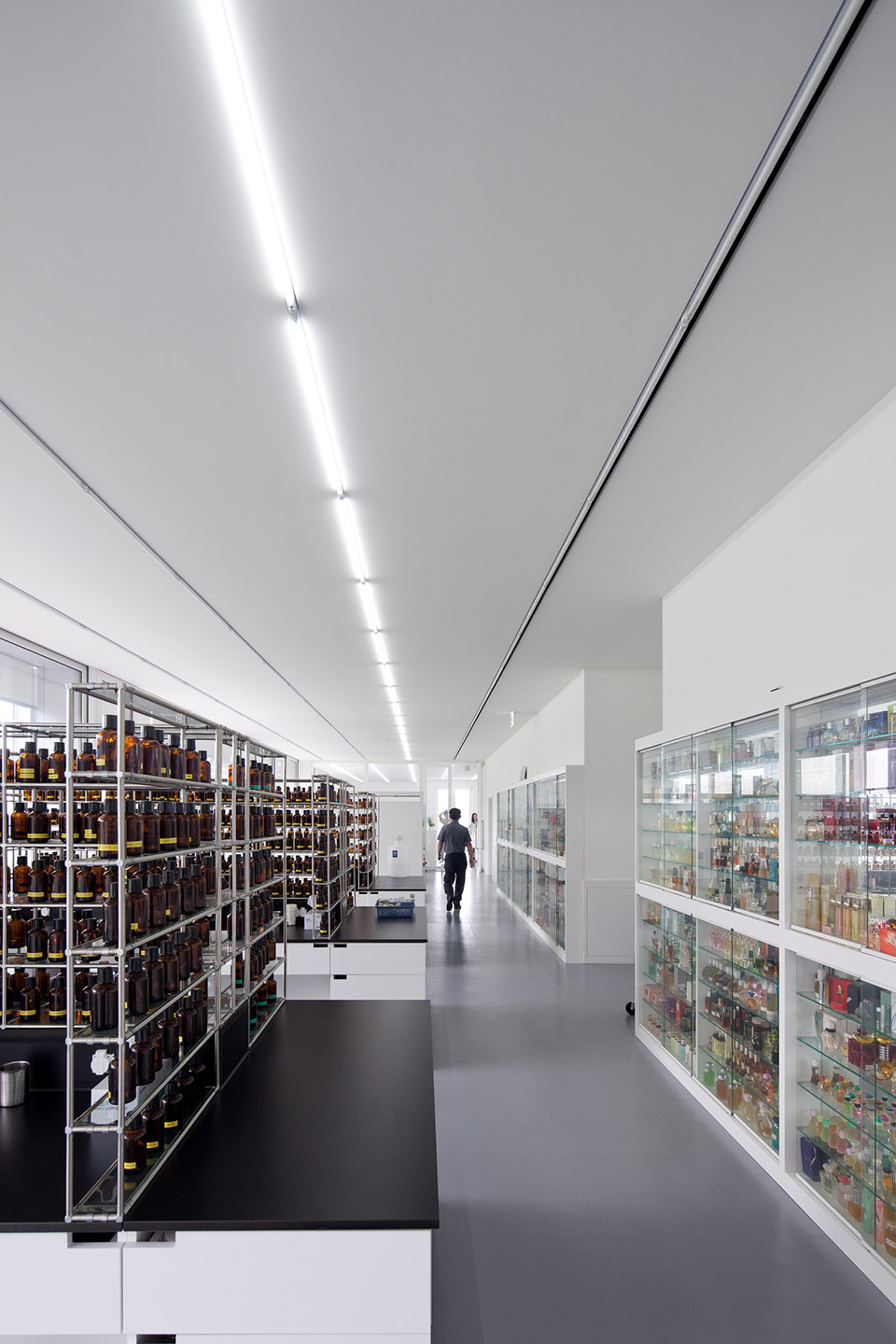
实验室体块几乎全部由金属结构和双层玻璃幕墙组成。立面和细部的材料在锌板和白色花岗岩之间变化,呼应不同的空间和功能。
The volume of the laboratories is almost entirely clad in a double skin glazed screen on a metal structure. The faces and details vary between zinc and white marble, differentiating between spaces and also between functions.
▼实验室立面采用双层玻璃幕墙 double glazed screen used at the facade of the laboratory volume ©FERNANDO GUERRA

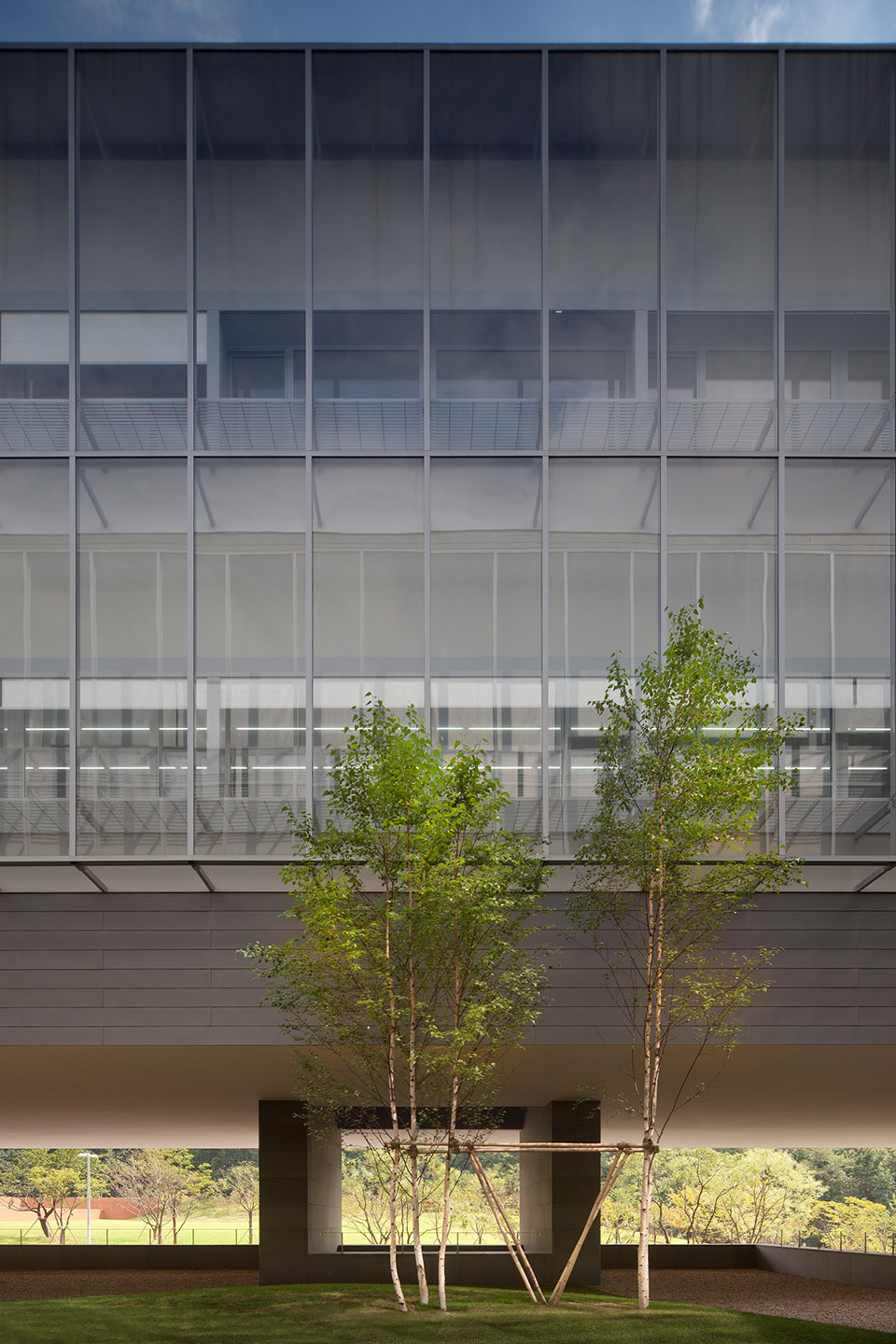
▼玻璃幕墙和金属结构细部 details of the glazed screen and the metal structure ©FERNANDO GUERRA
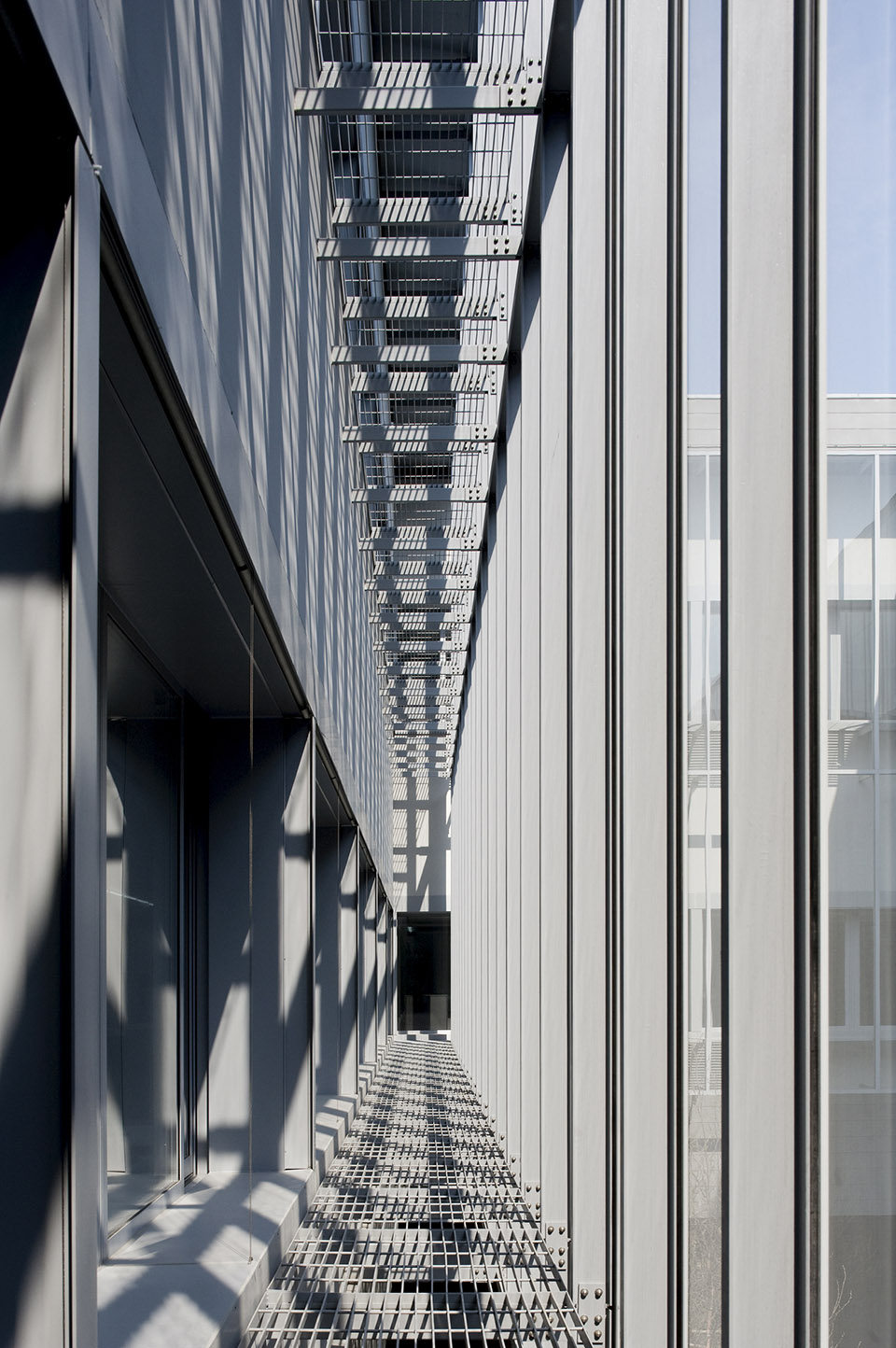
建筑不仅是一个功能的容器,简单使用的材料形成丰富的效果,创造了一个逆转的潘多拉魔盒。这里可以生产出最为美丽的事物,让韩国最平凡的女人也能面貌一新。
Despite being a box or a container for functions, the richness in the simple use of materials transforms it into a kind of Pandora’s Box in reverse, out of which come the most beautiful things that transform the least beautiful women in the kingdom of Korea.
▼夜景,night view ©FERNANDO GUERRA
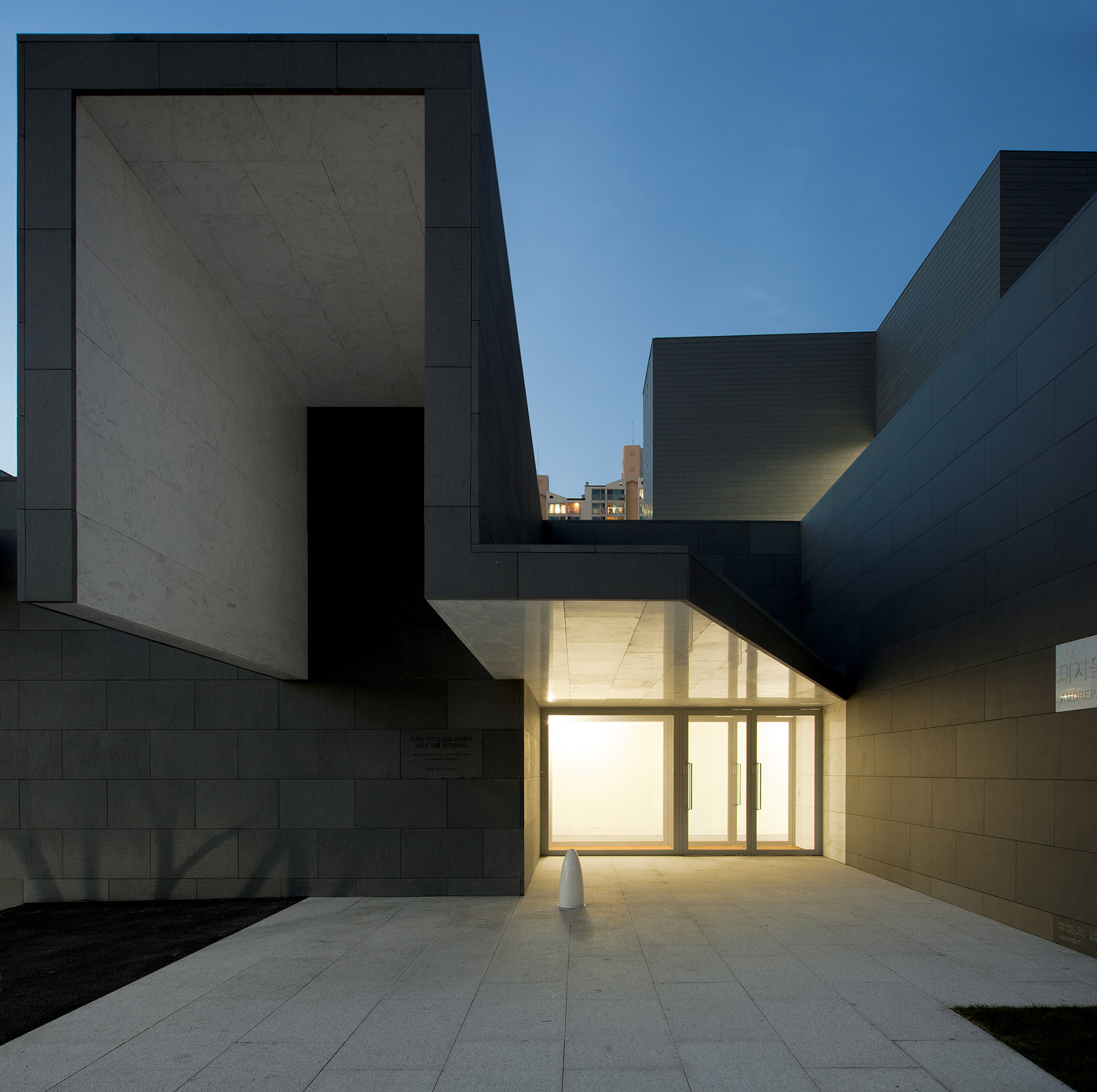
▼入口层平面图,main access floor plan ©Álvaro Siza + Carlos Castanheira + Kim Jong Kyu
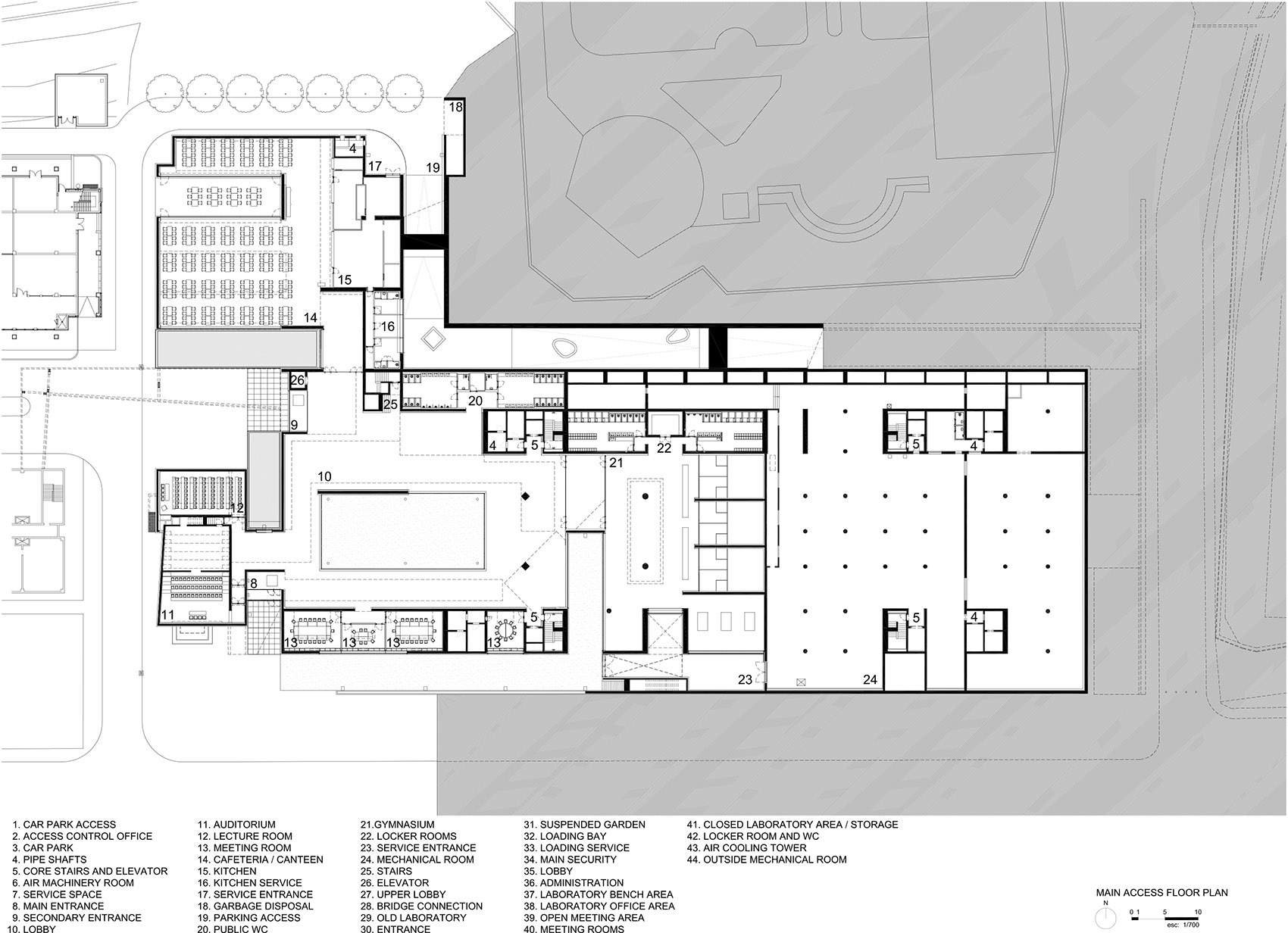
▼实验室入口层平面图,laboratory access floor plan ©Álvaro Siza + Carlos Castanheira + Kim Jong Kyu
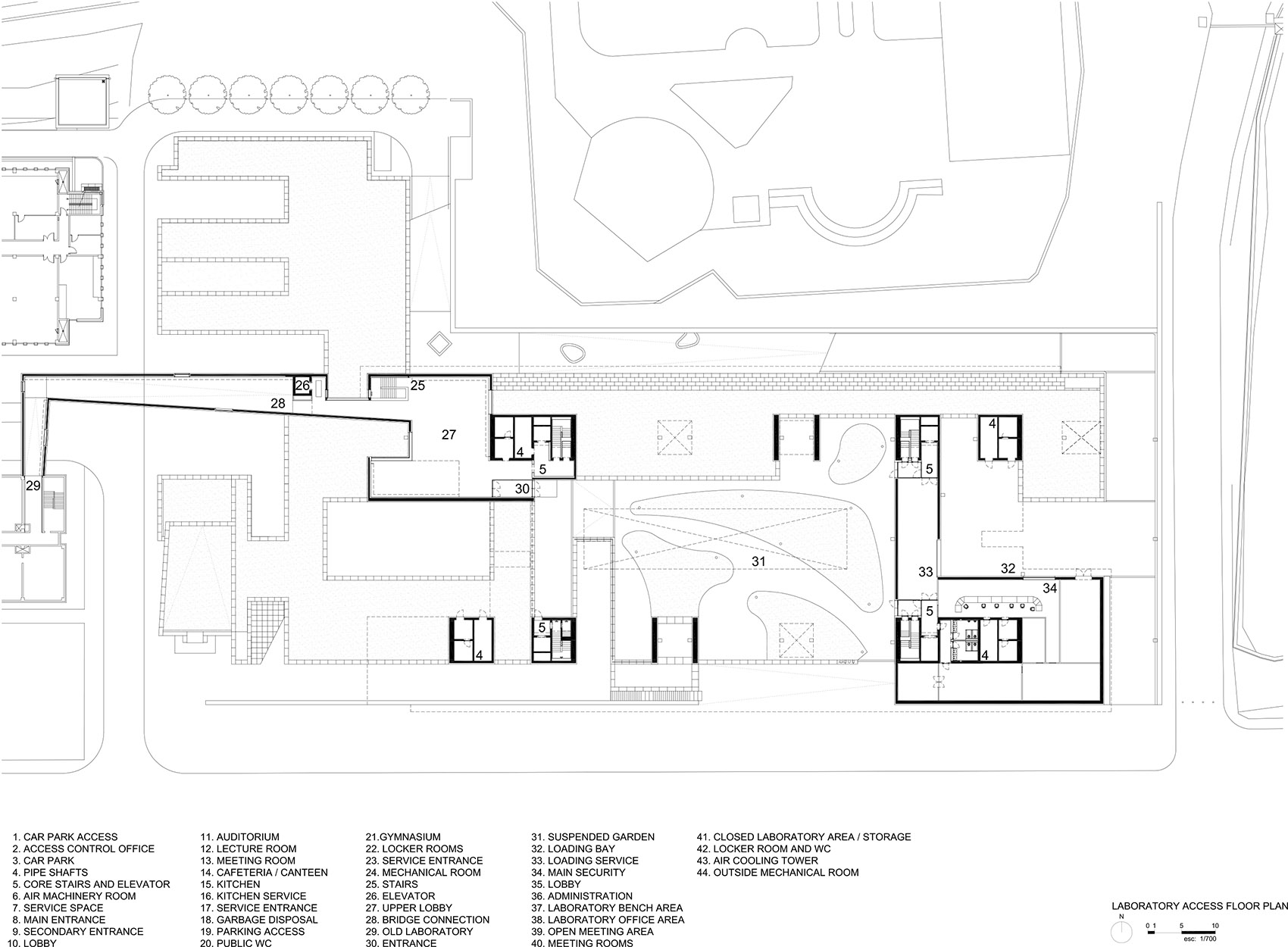
▼实验室一层平面图,laboratory first floor plan ©Álvaro Siza + Carlos Castanheira + Kim Jong Kyu
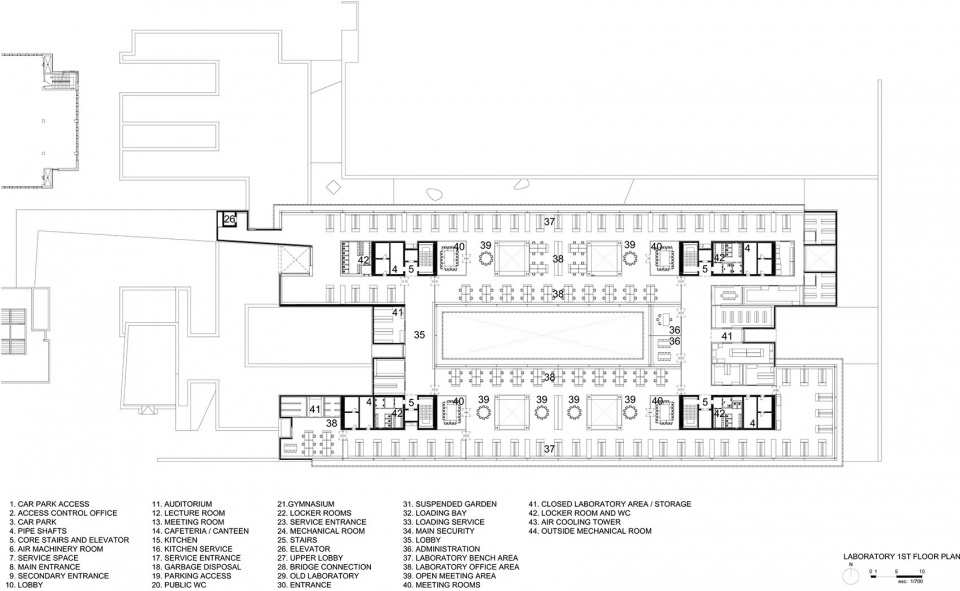
▼实验室二层平面图,laboratory second floor plan ©Álvaro Siza + Carlos Castanheira + Kim Jong Kyu
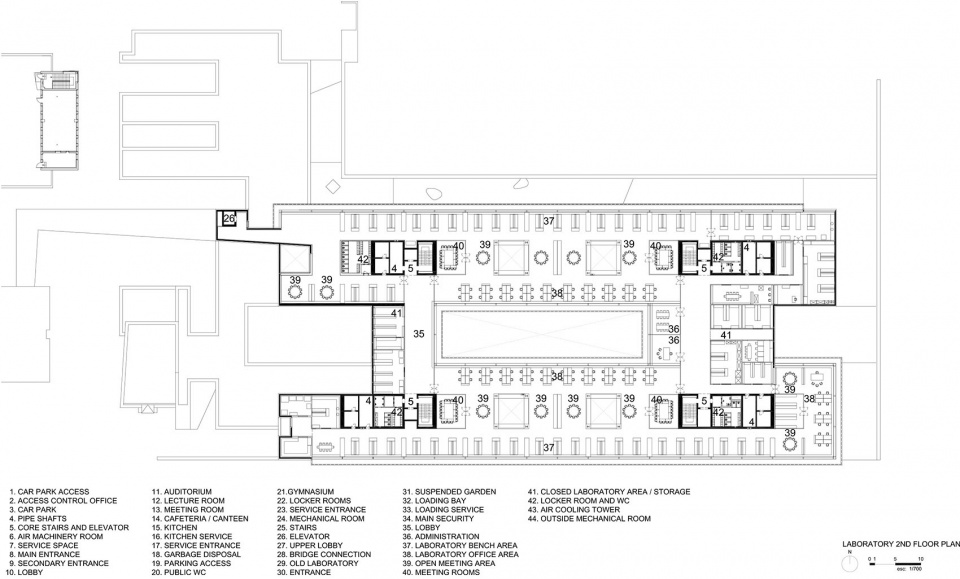
▼屋顶层平面图,roof floor plan ©Álvaro Siza + Carlos Castanheira + Kim Jong Kyu

▼立面图,elevations ©Álvaro Siza + Carlos Castanheira + Kim Jong Kyu
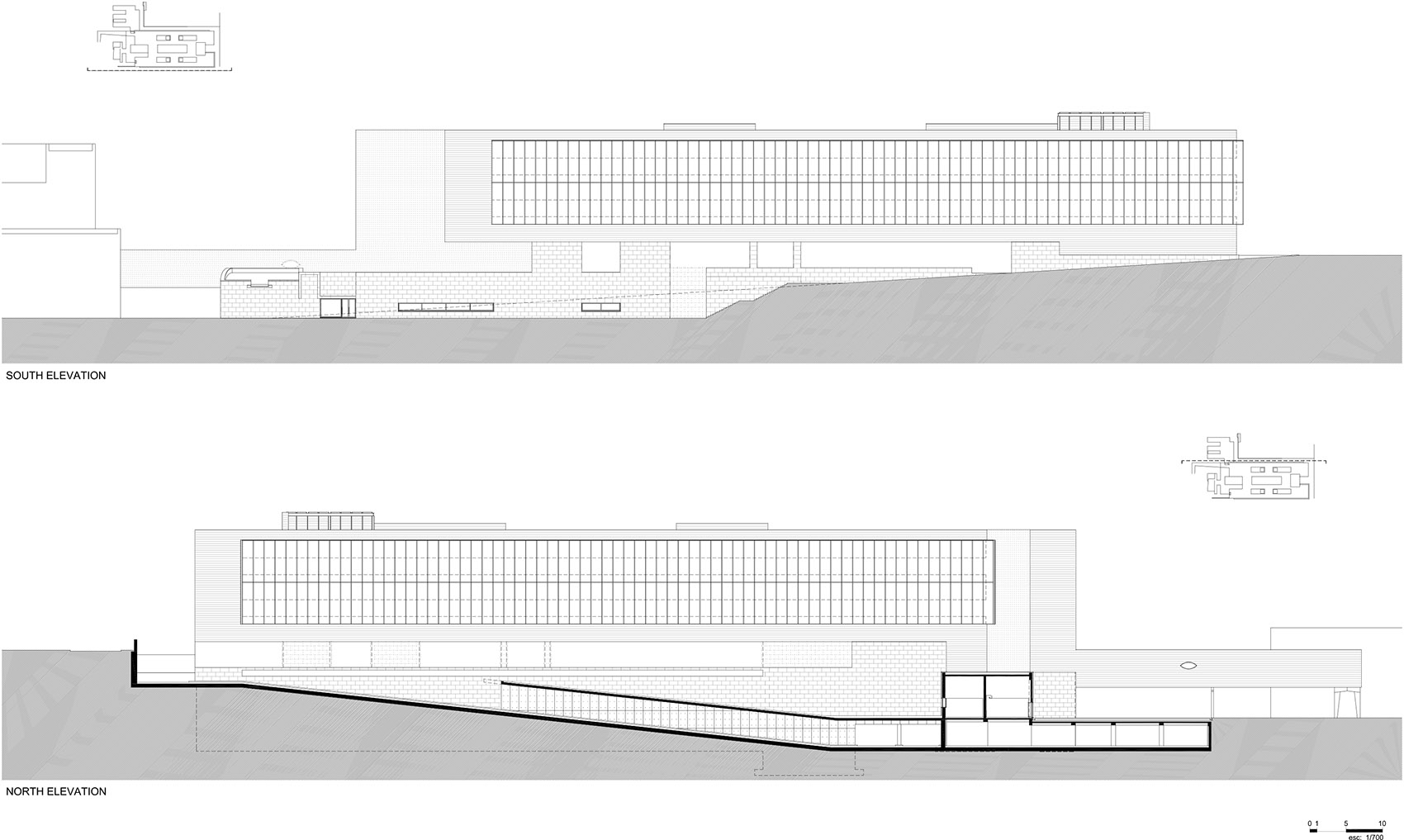
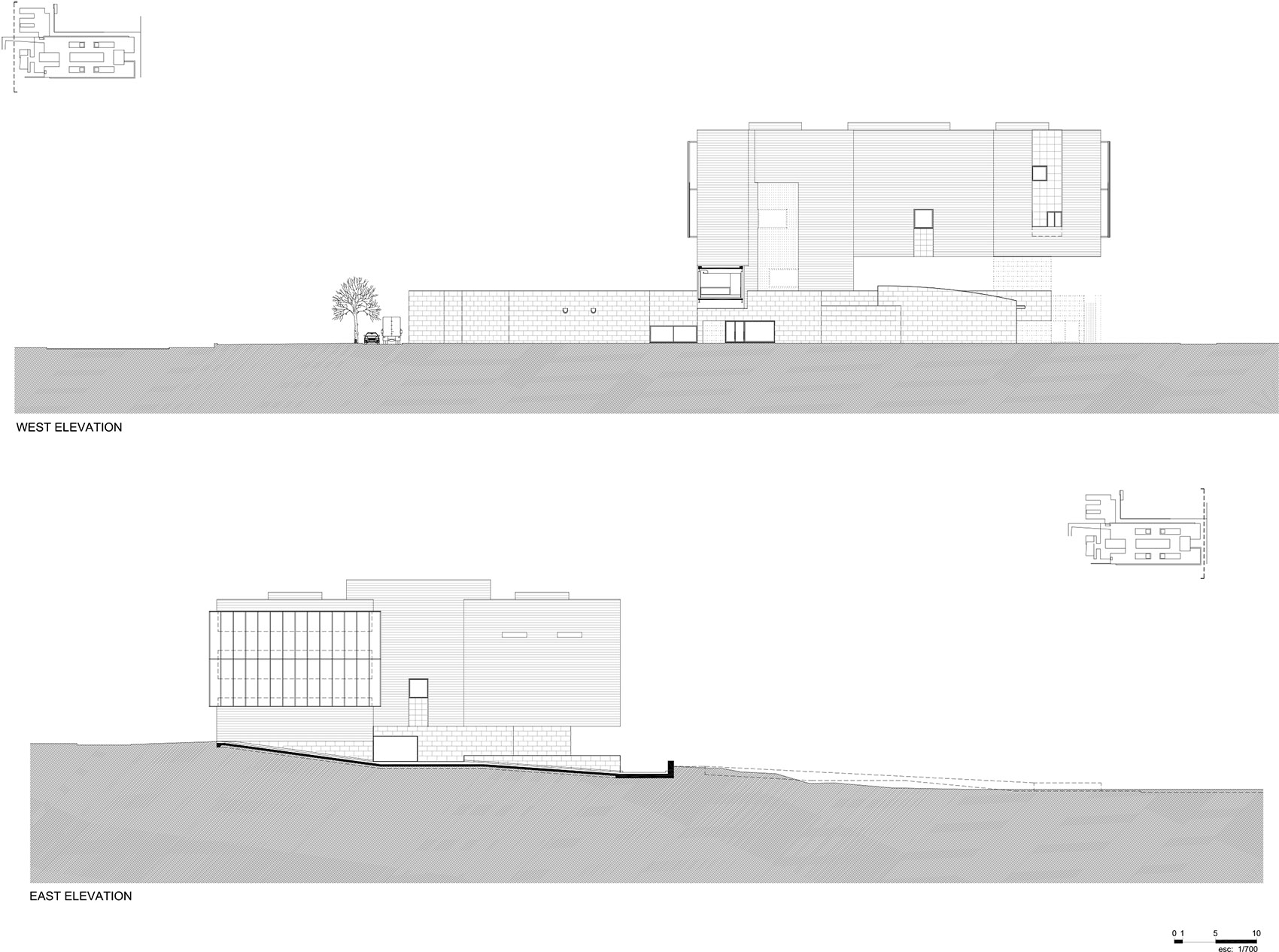
▼剖面图,sections ©Álvaro Siza + Carlos Castanheira + Kim Jong Kyu
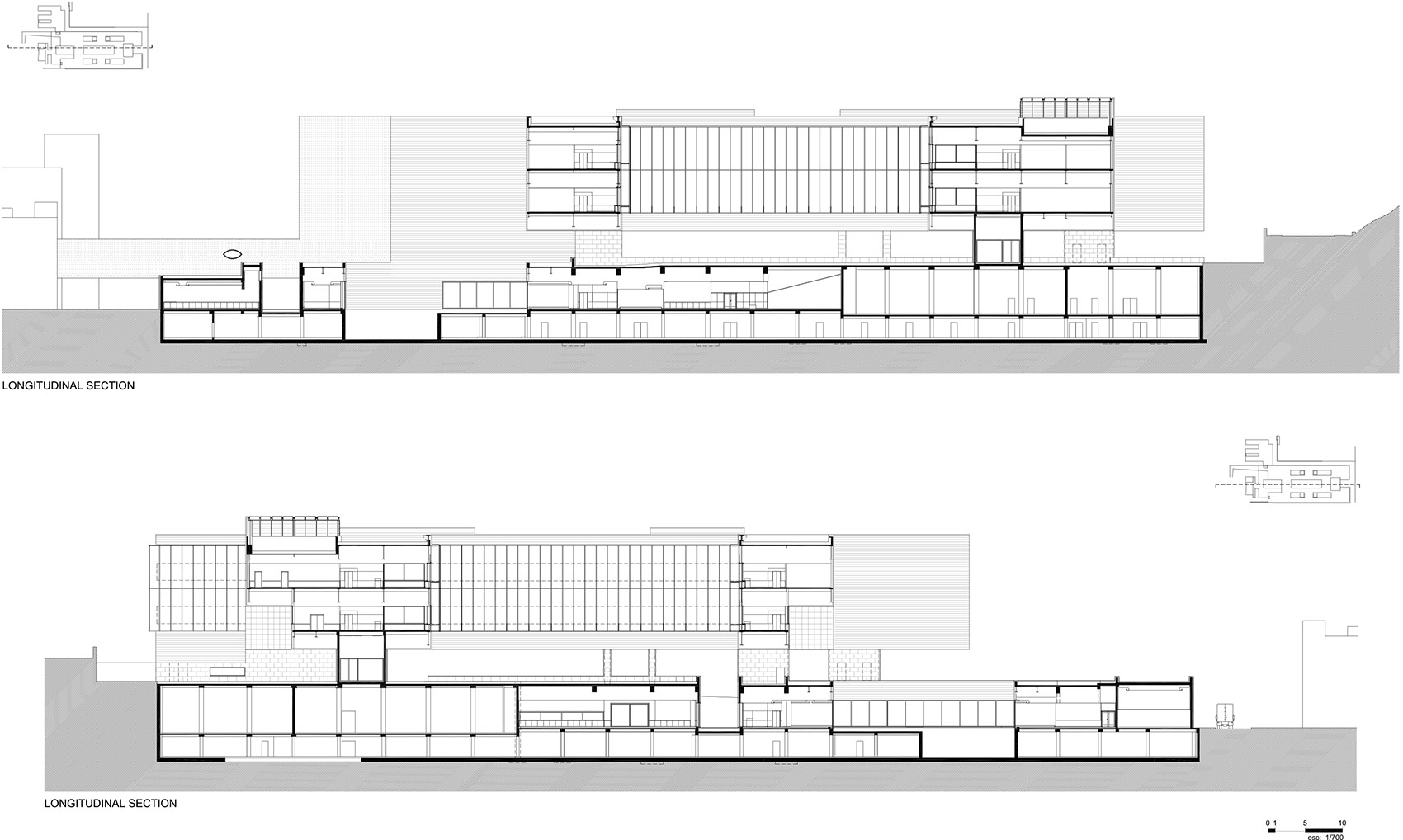
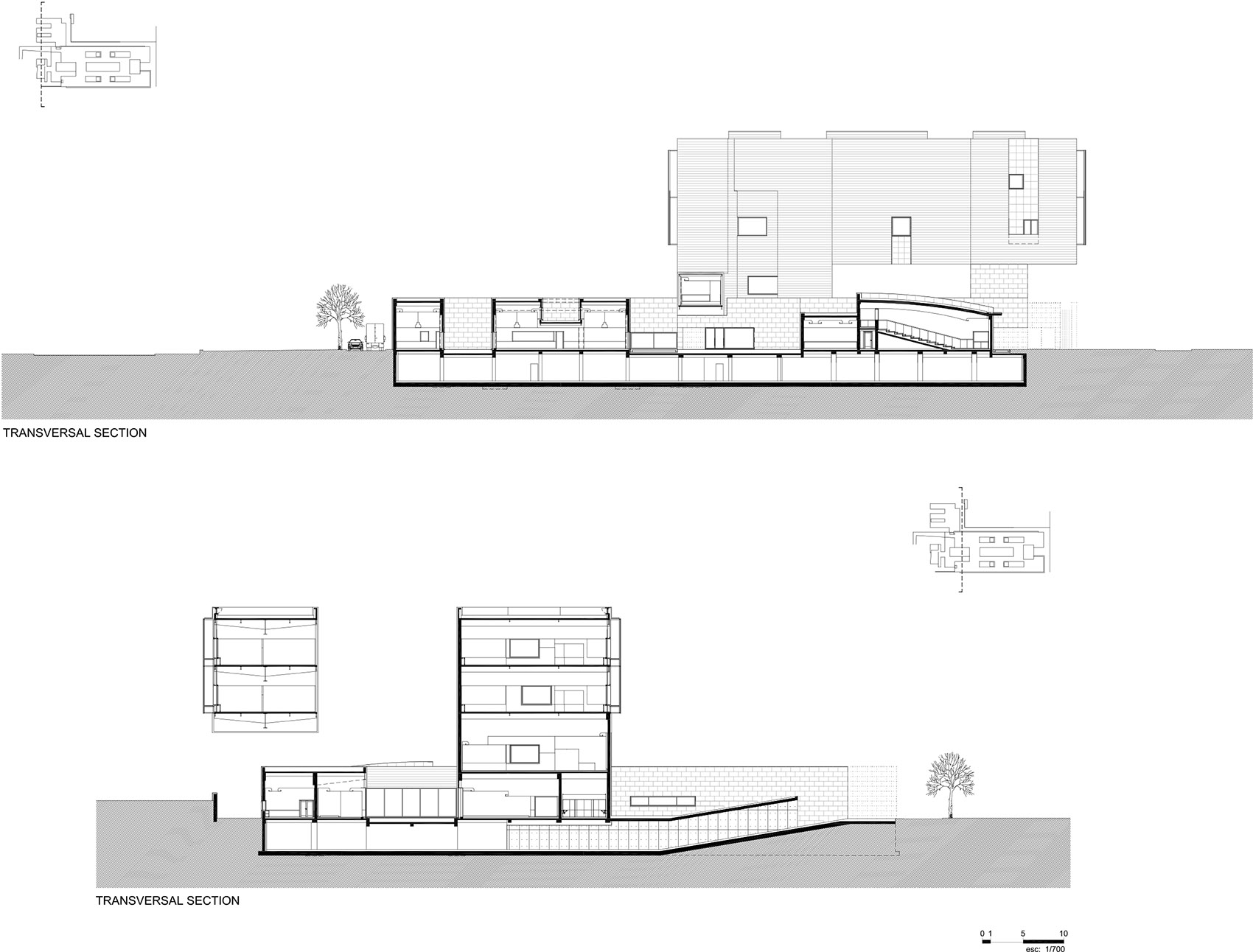
Client: AMORE PACIFIC Location: South Korea, Yongin-si, Gyeonggi-do Architects: Álvaro Siza wih Carlos Castanheira and Kim Jong Kyu RESEARCH AND DESIGN CENTER Design Period: 03 ~ 2008. 09 Construction Period: 10 ~ 2010. 05 Office in Portugal: Carlos Castanheira & Clara Bastai, Lda. Coordinator: Pedro Carvalho Collaborators: Eliana Sousa, Im Yo Jin, Ricardo Serra, Patrícia Carvalho, João Figueiredo Office in Coreia: M.A.R.U. Metropolitan Architecture Research Unit Coordinator: Kim Soo Young Collaborators: Min Jun Kee; Jang Byul, Kim Young Soon, Lee Zoo Hwa Construction area: 26,029㎡
